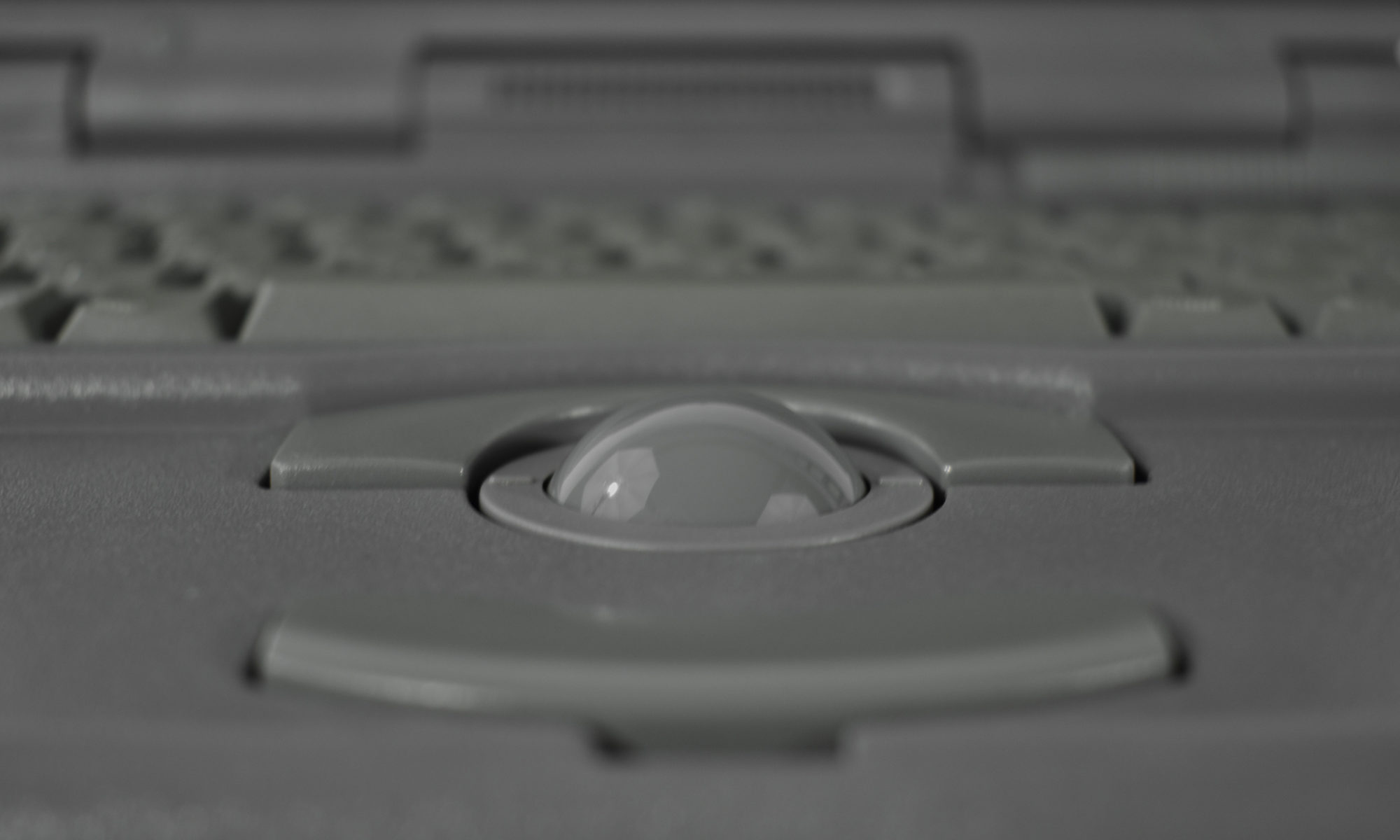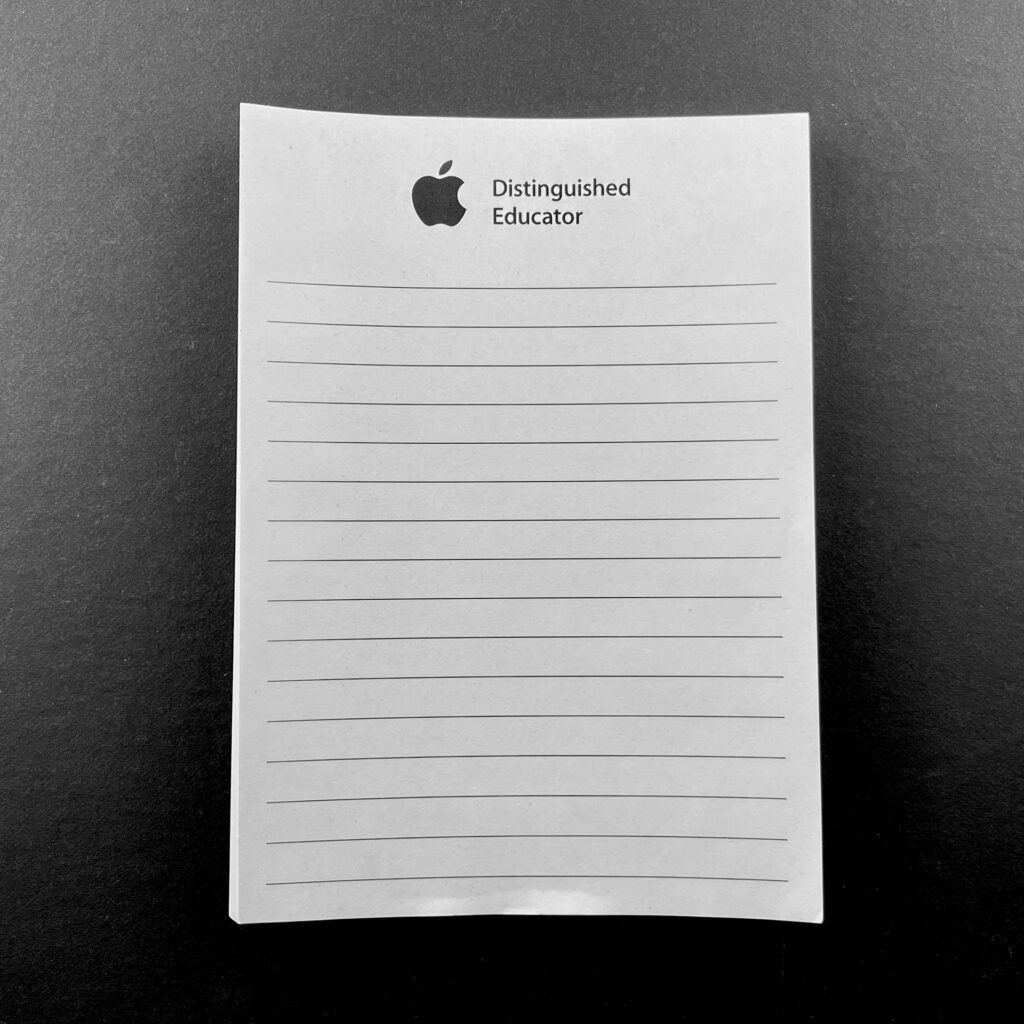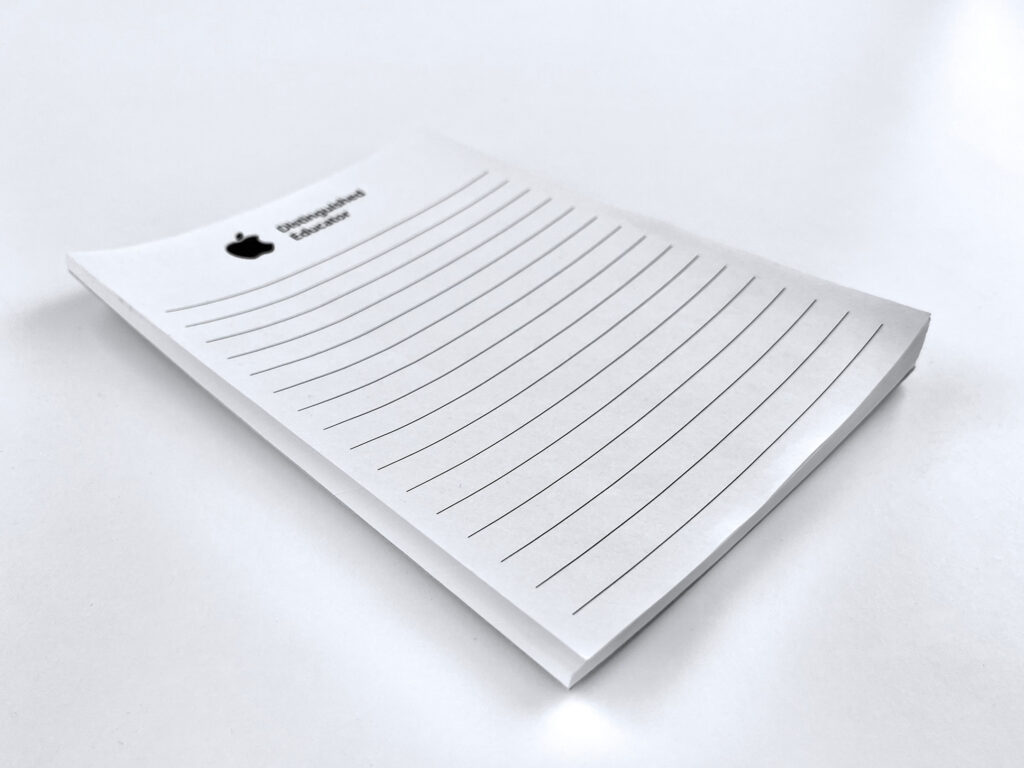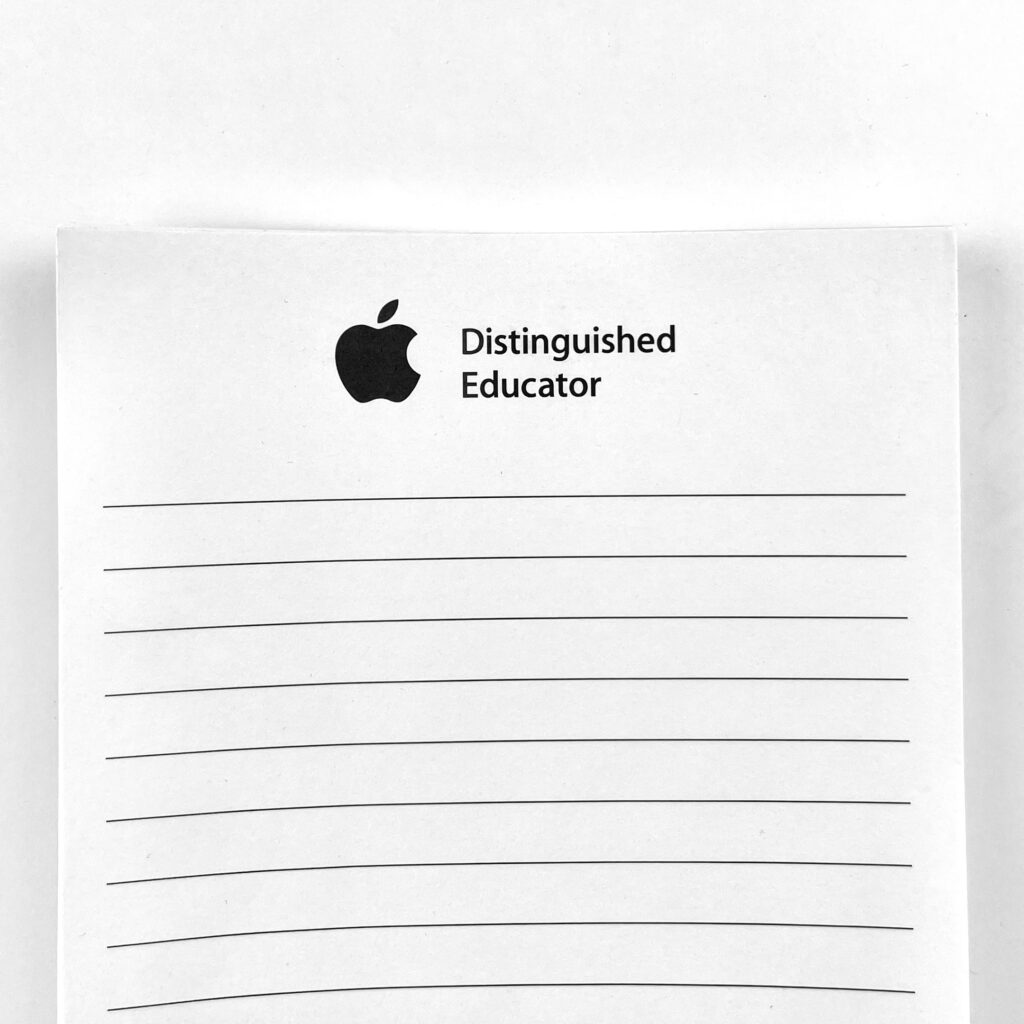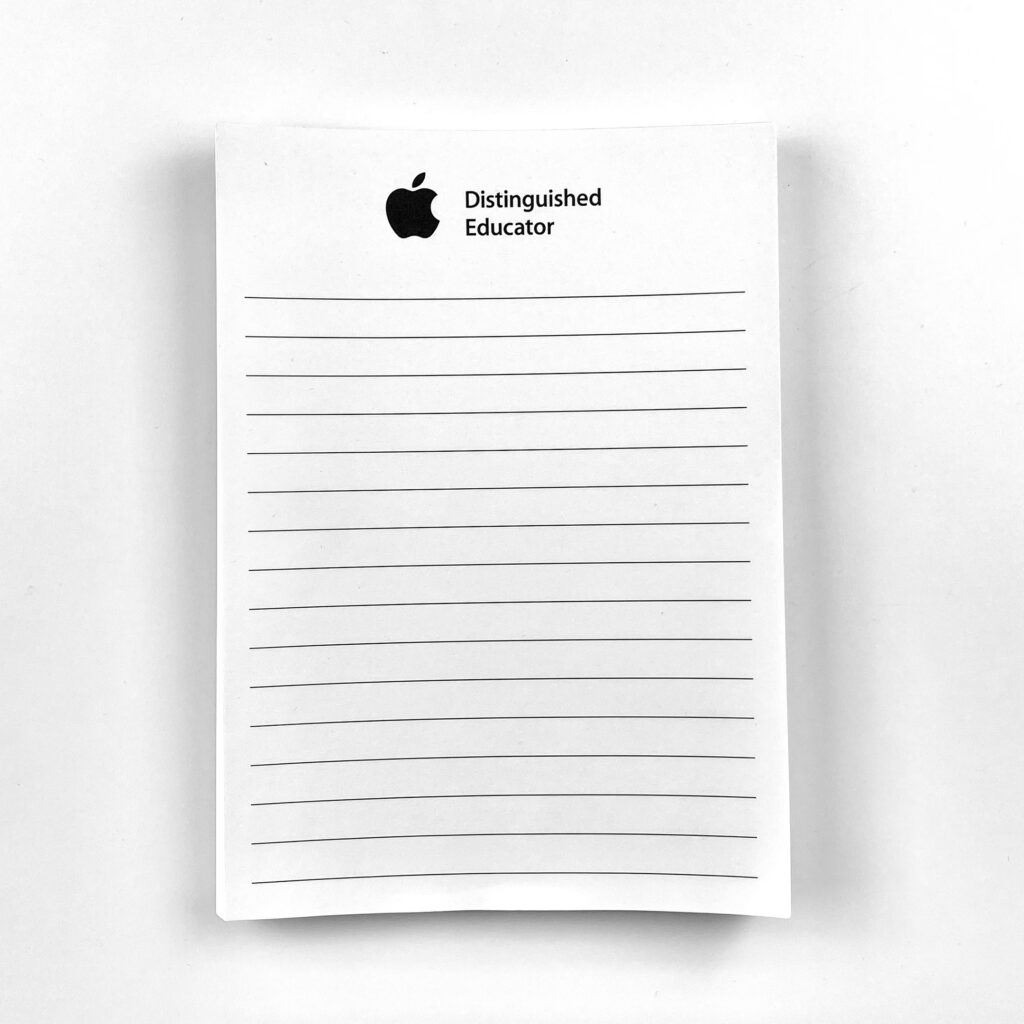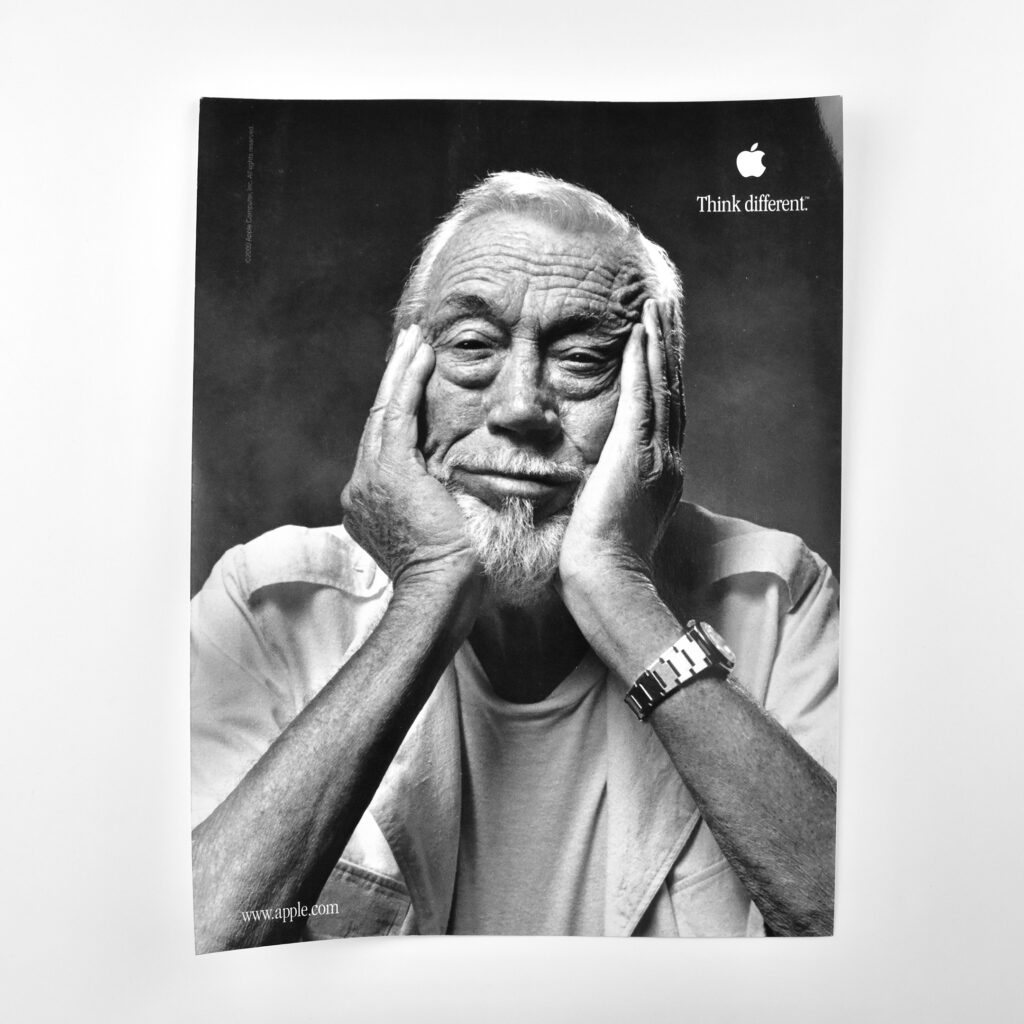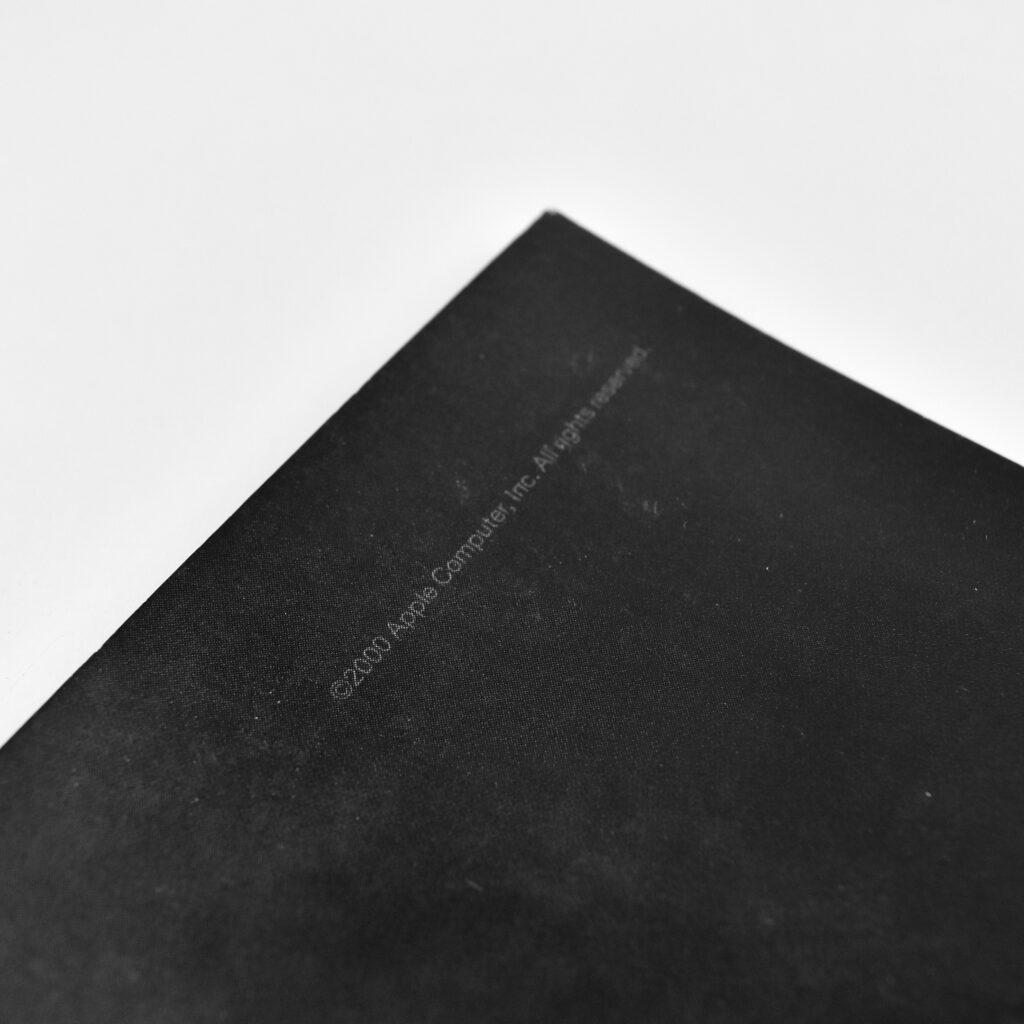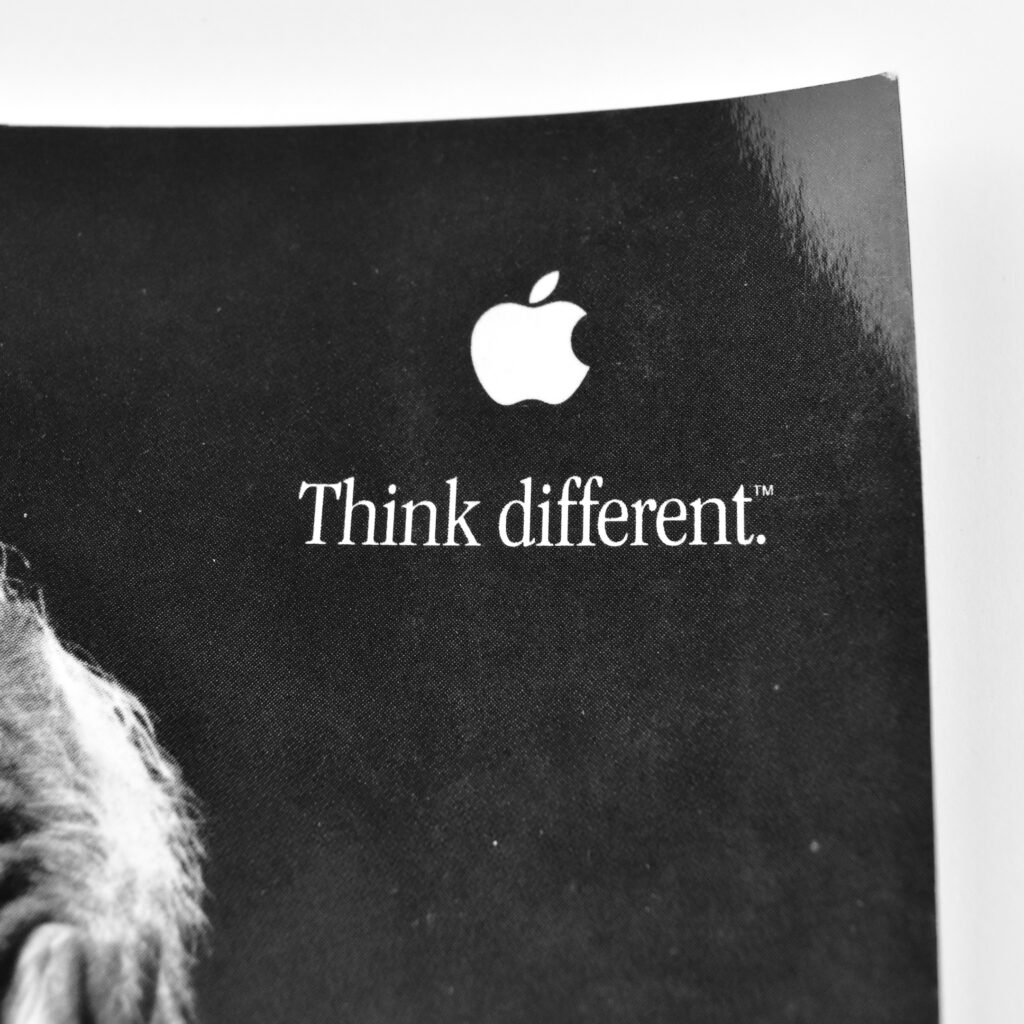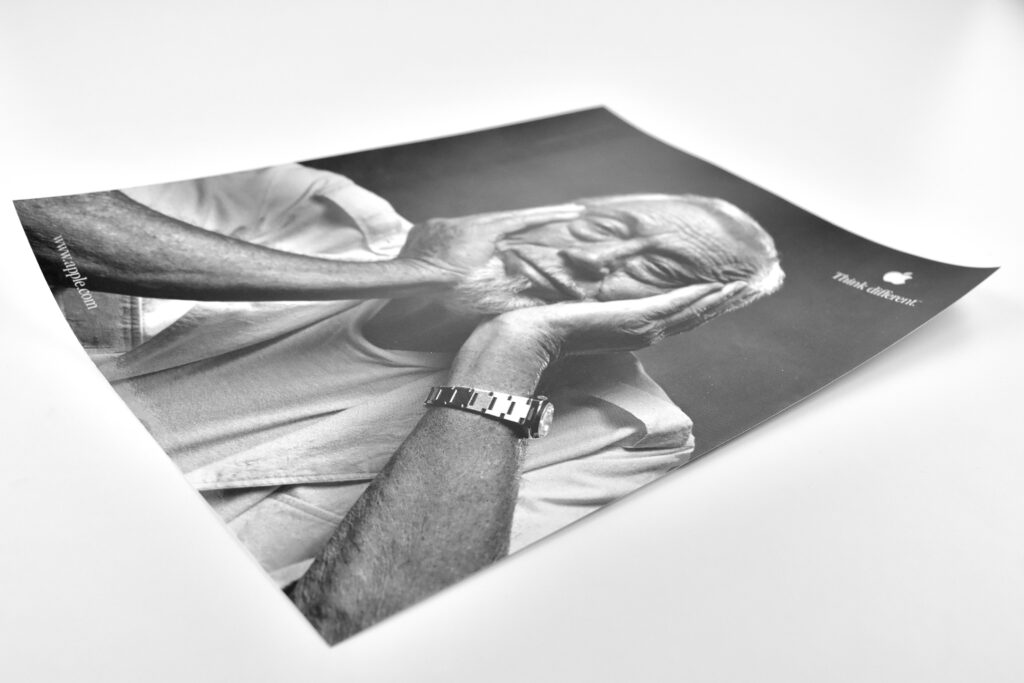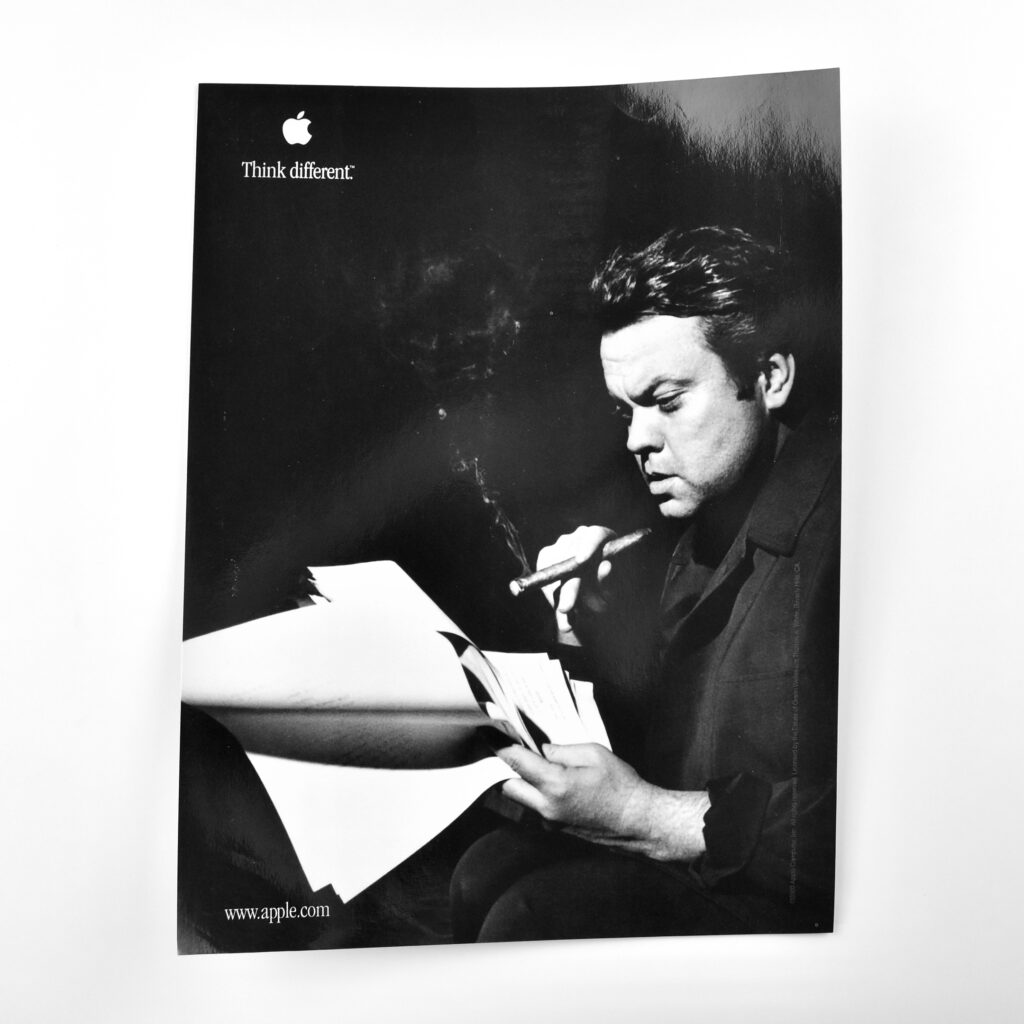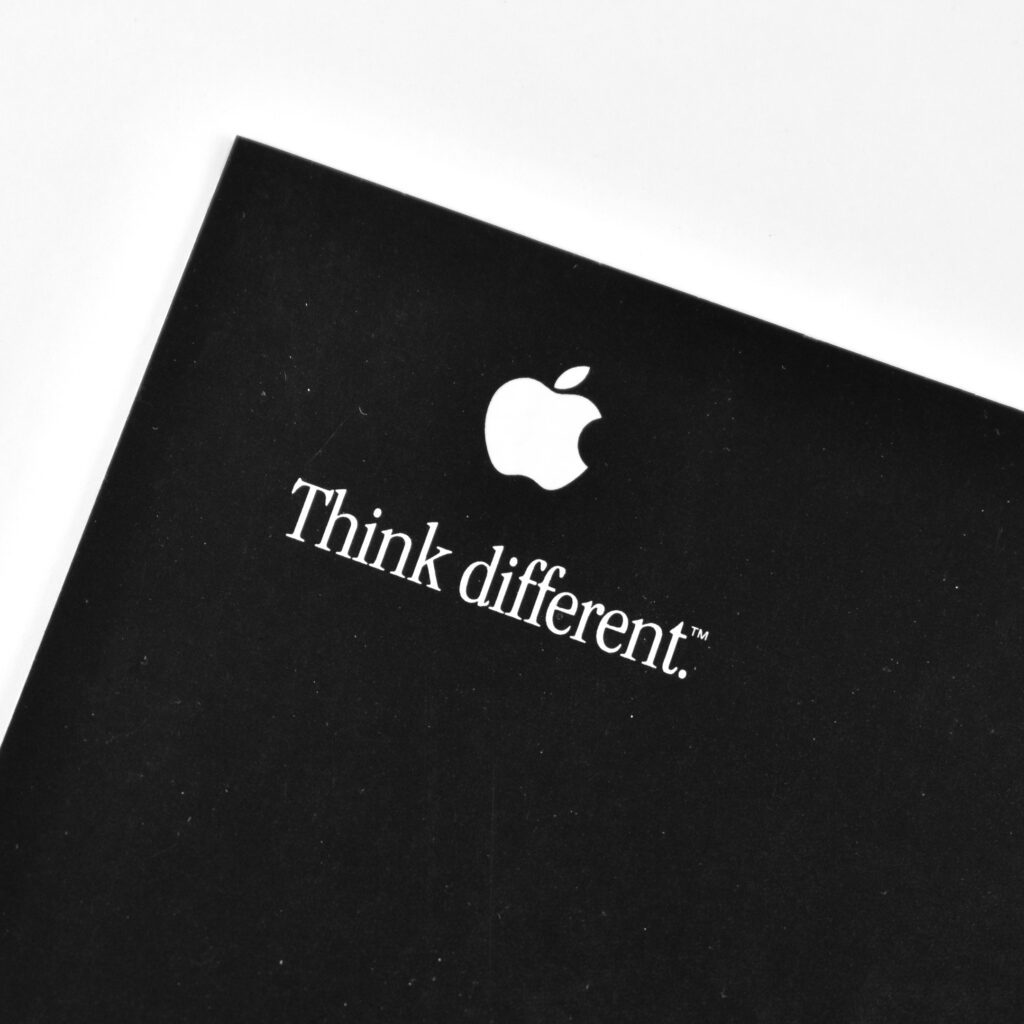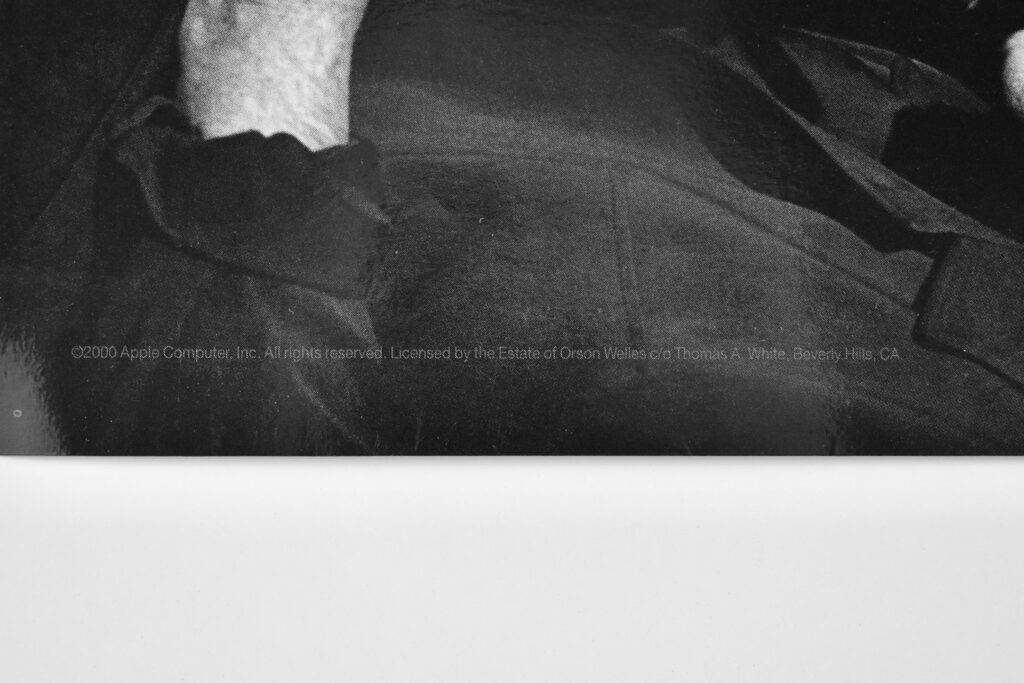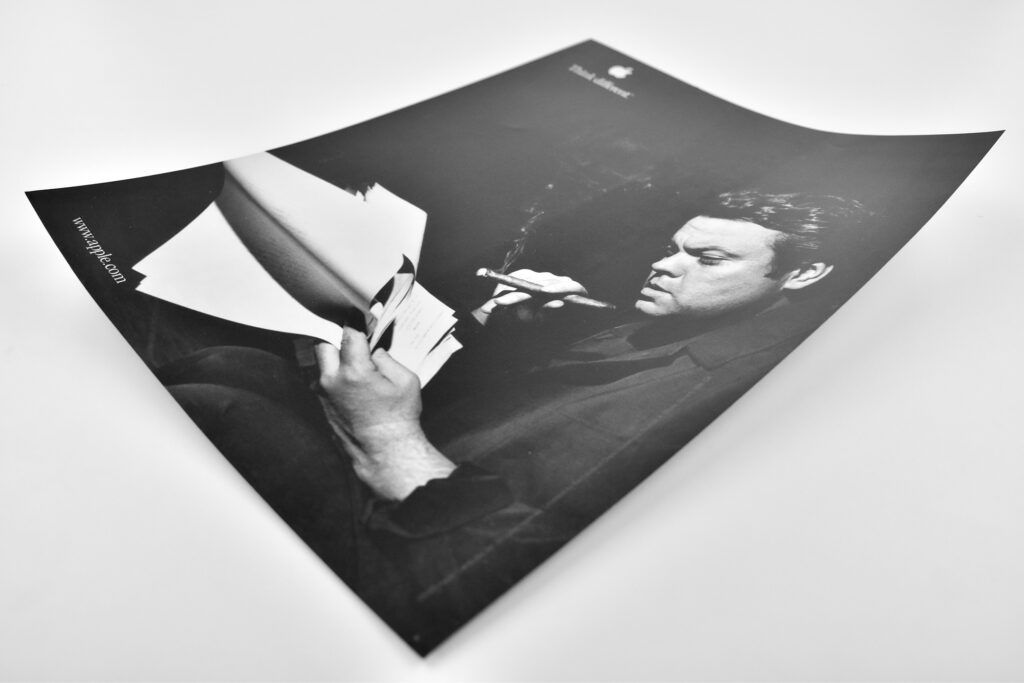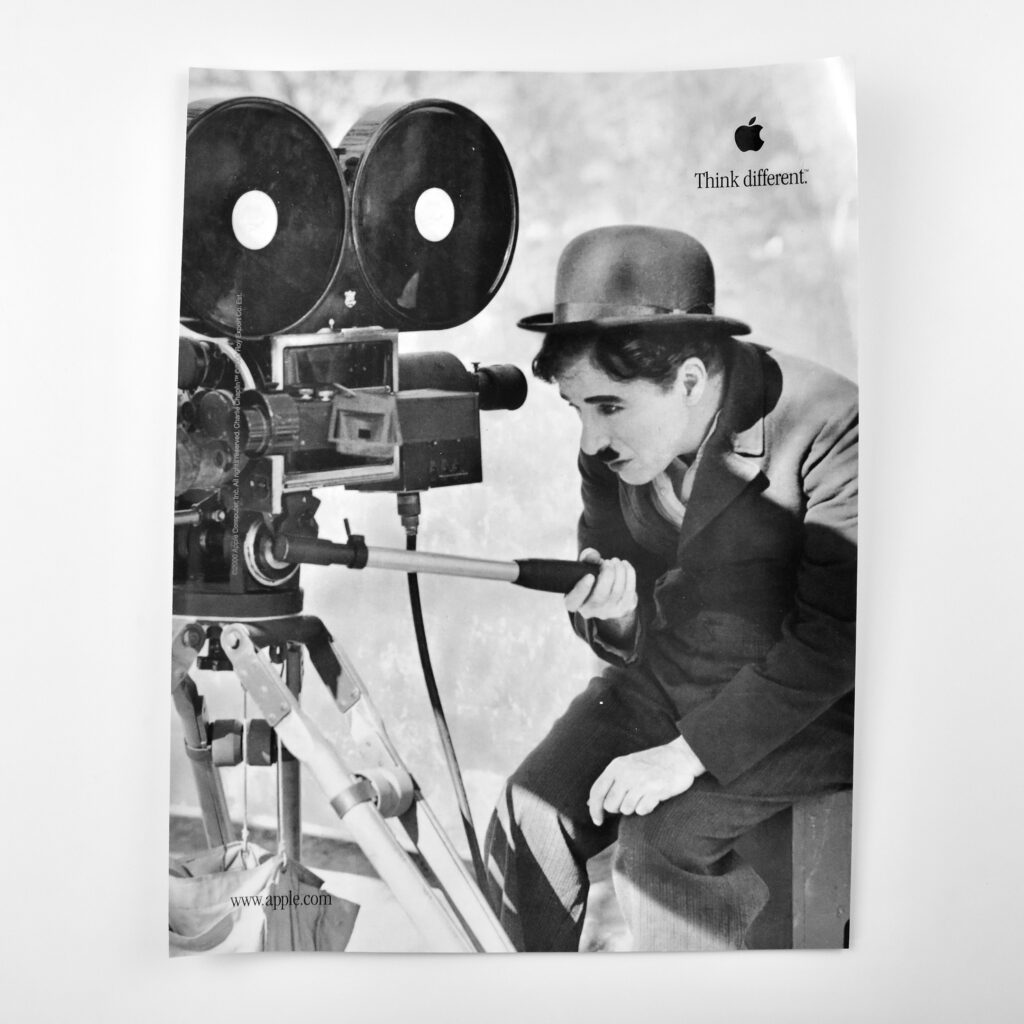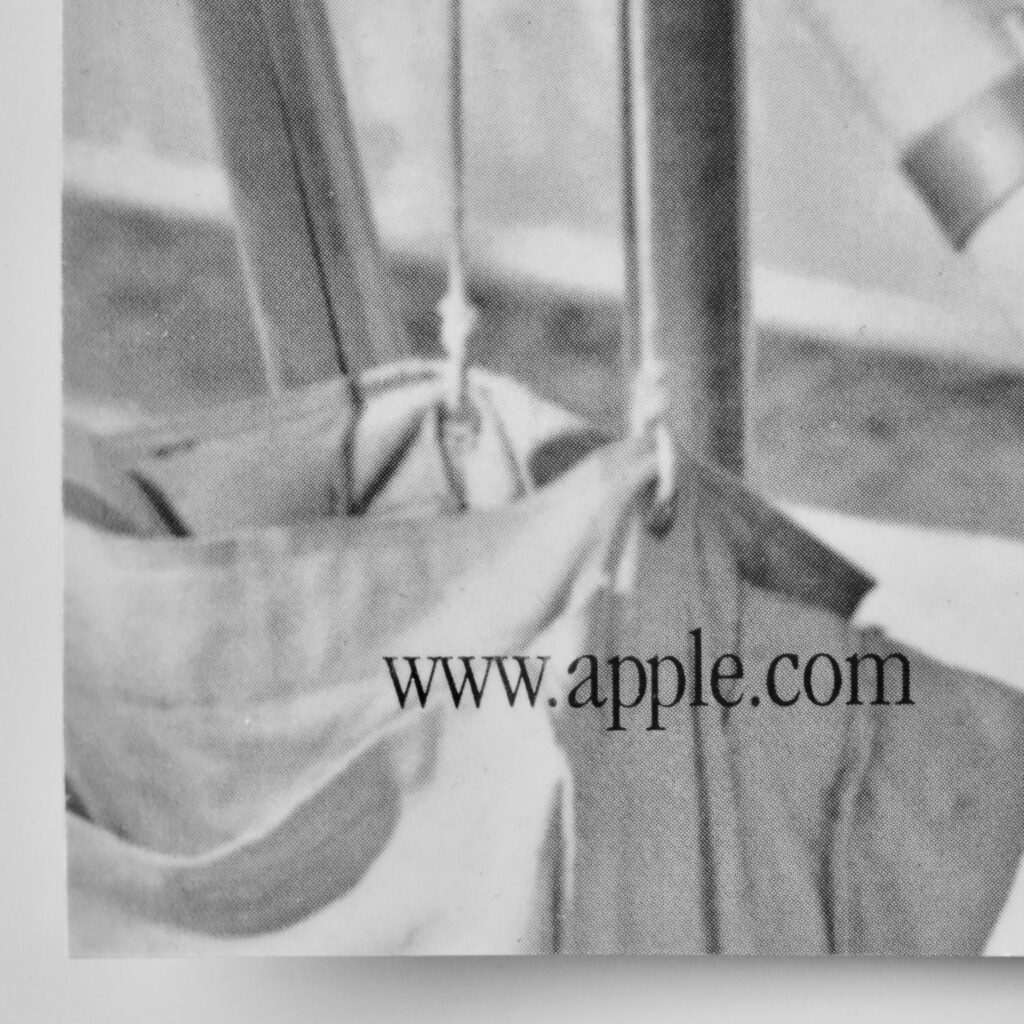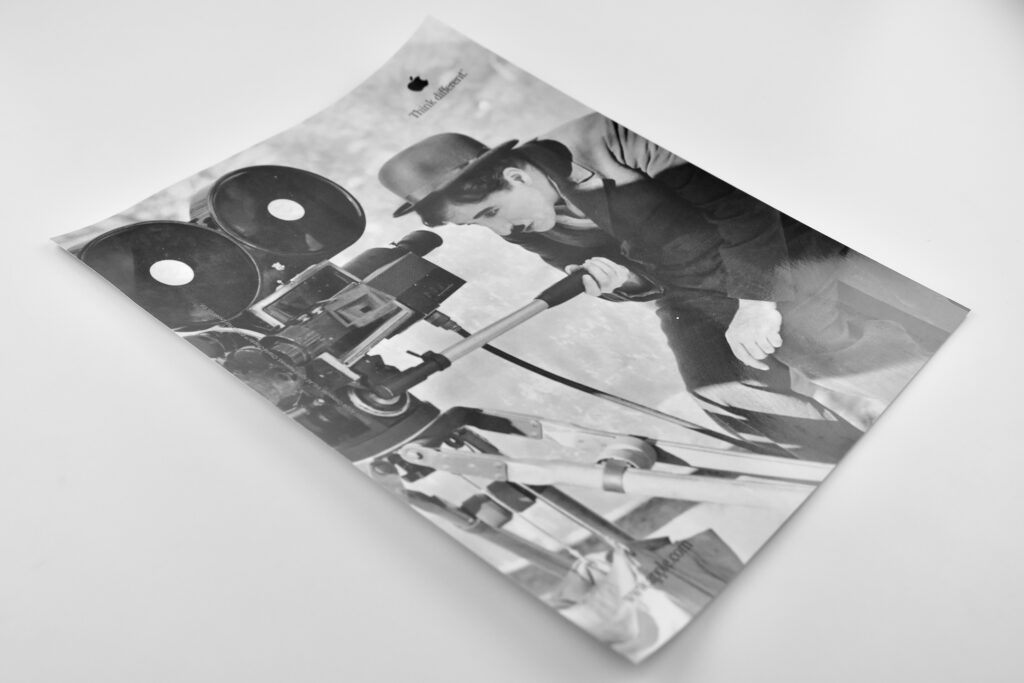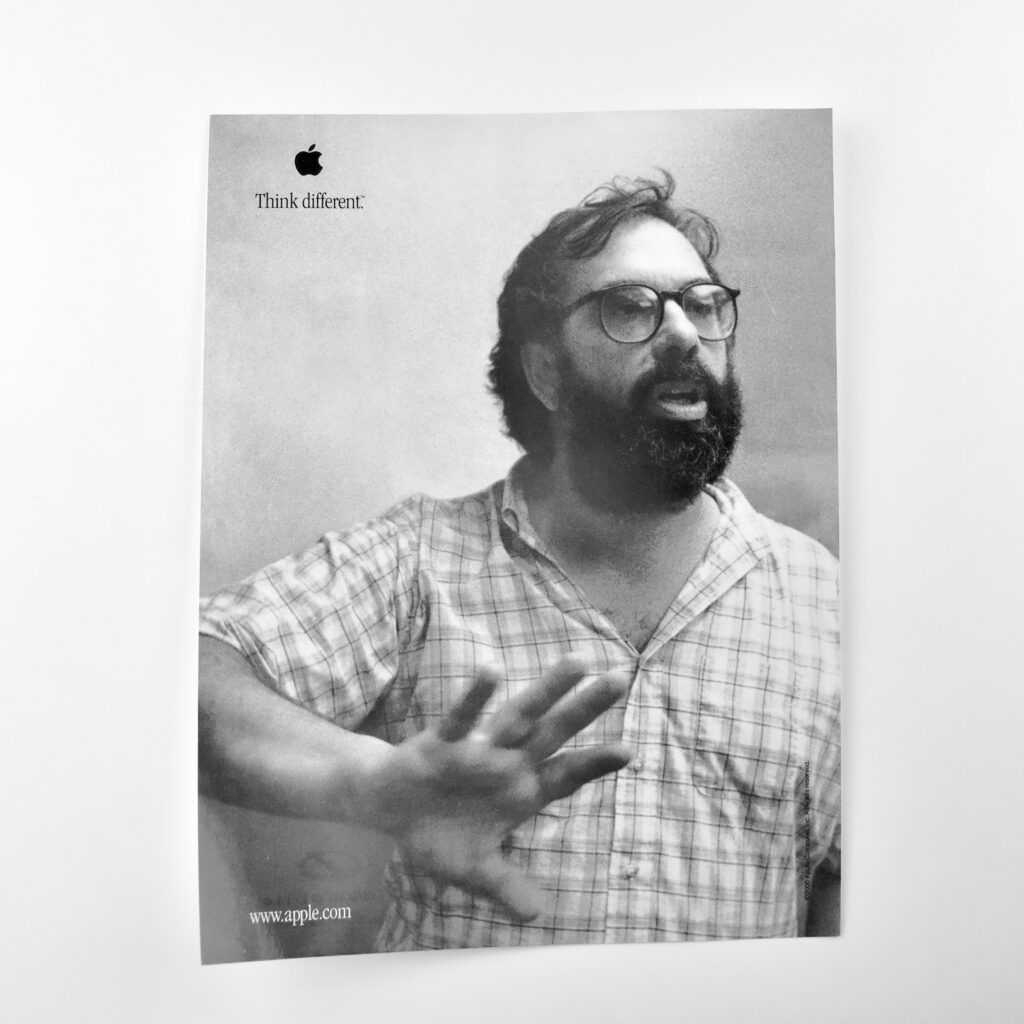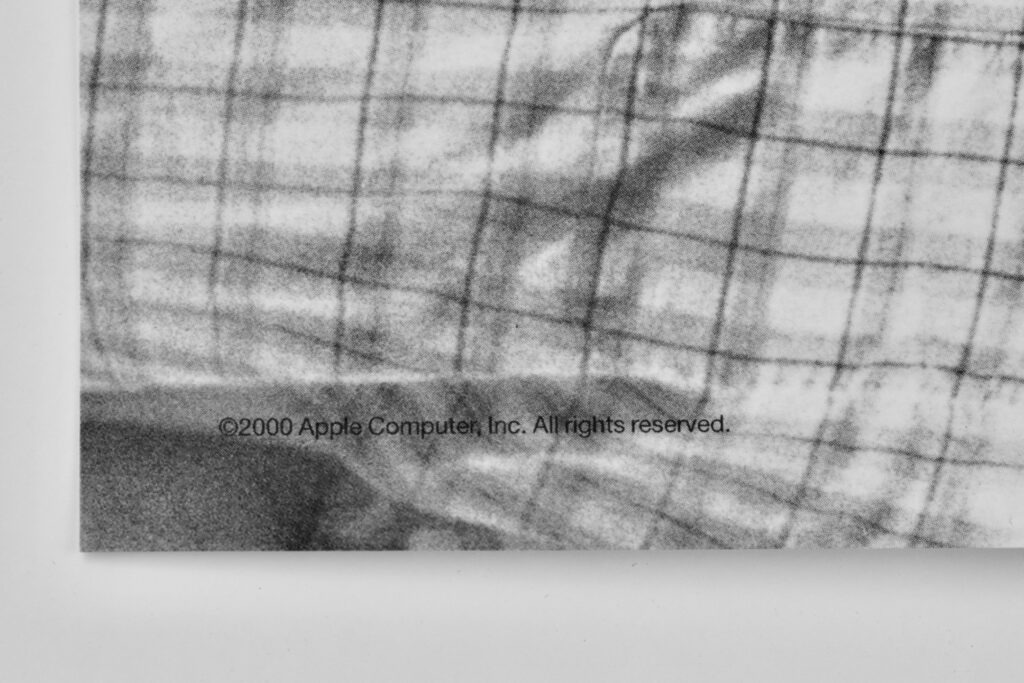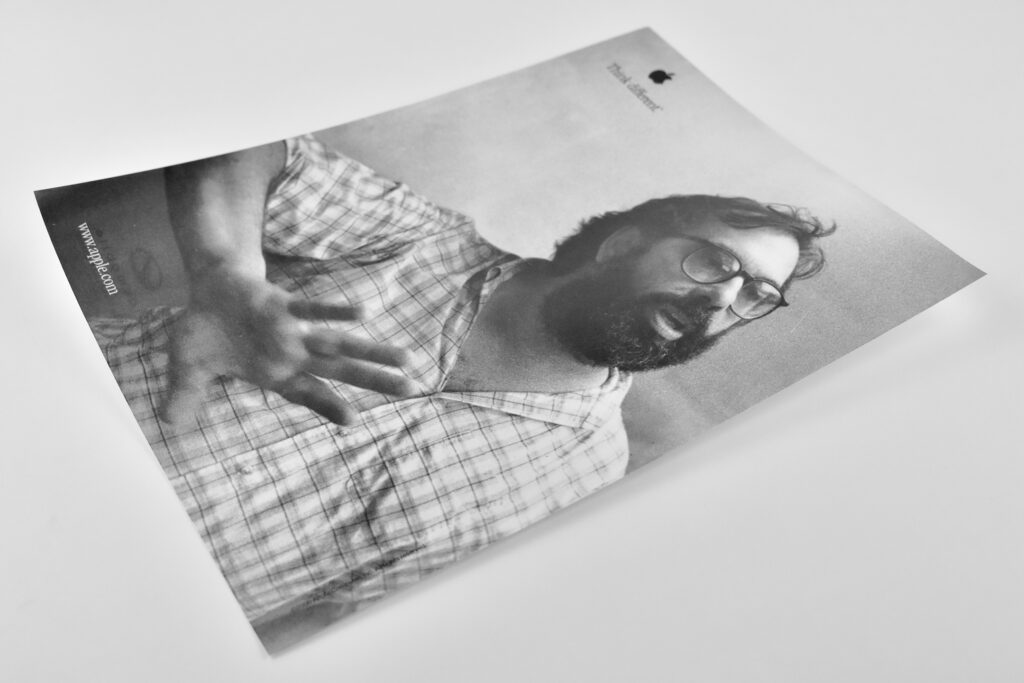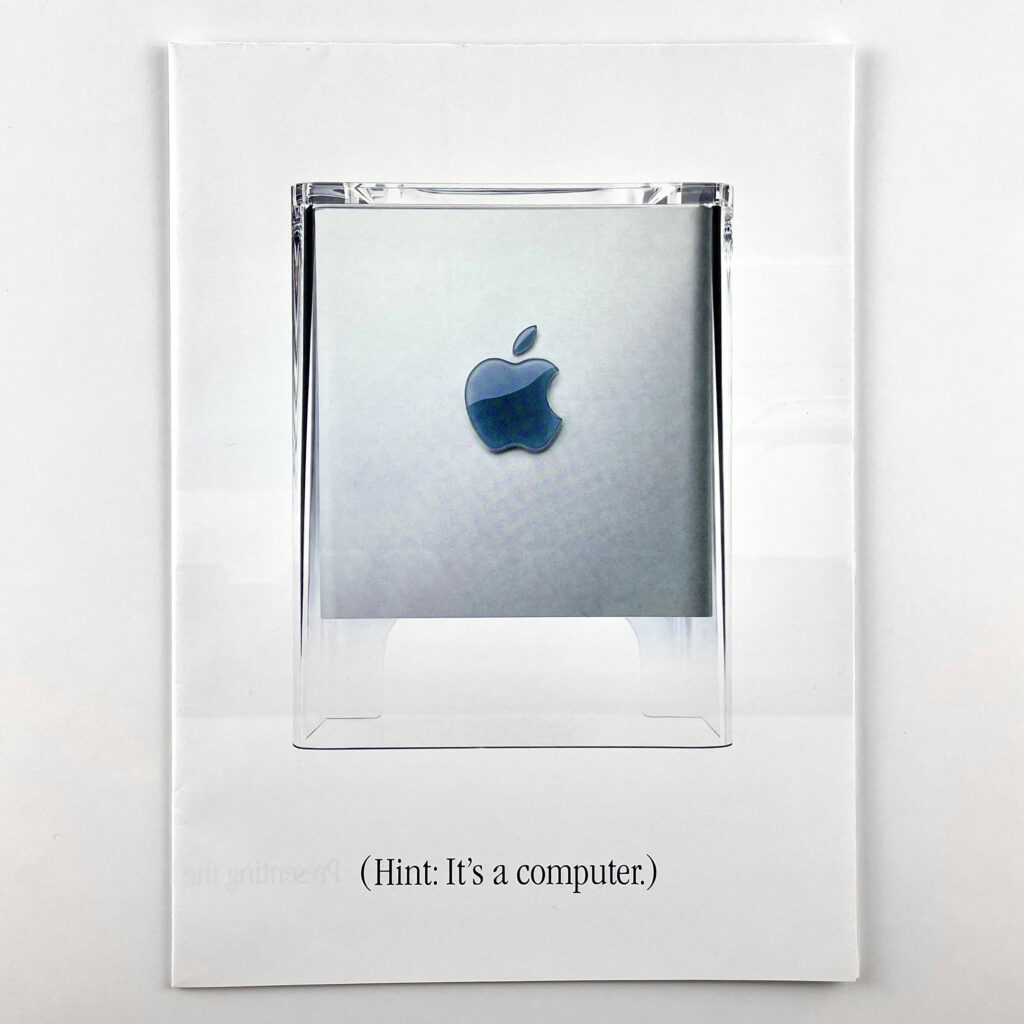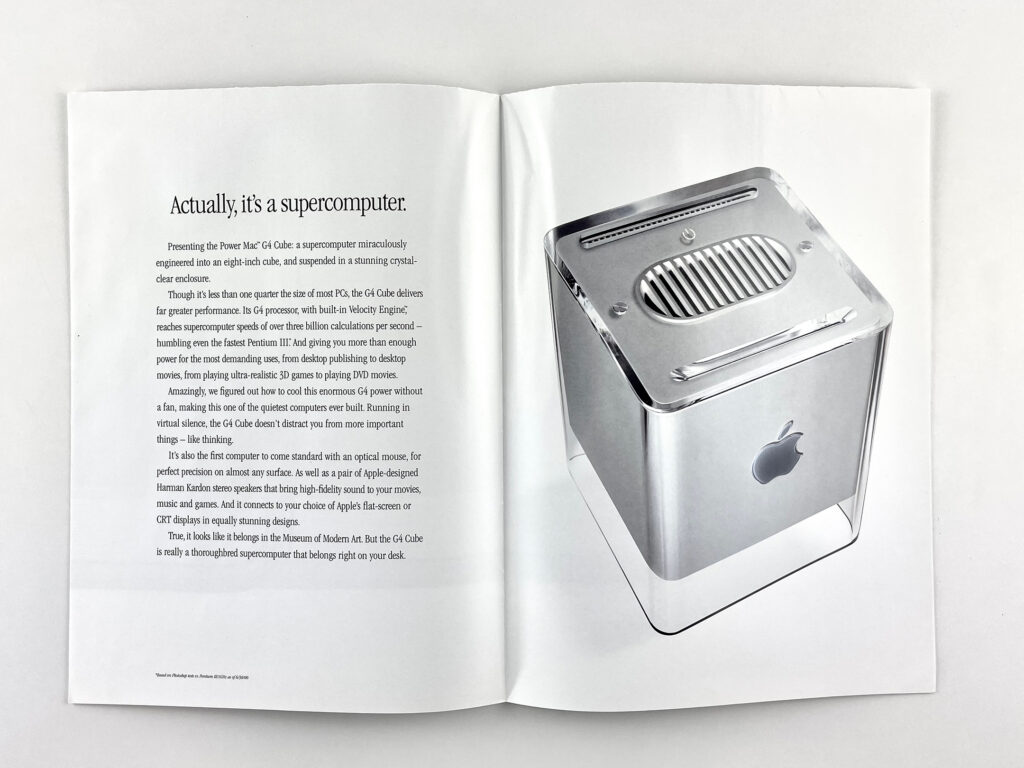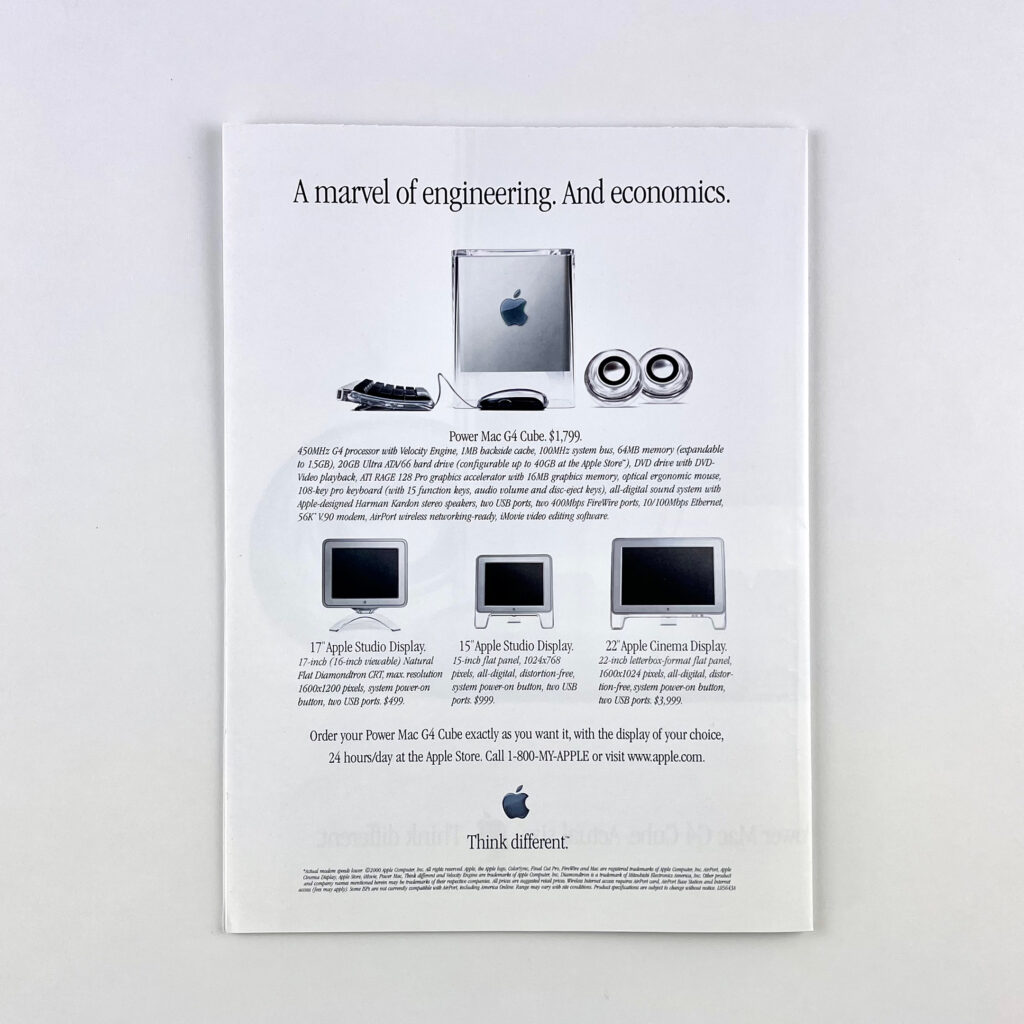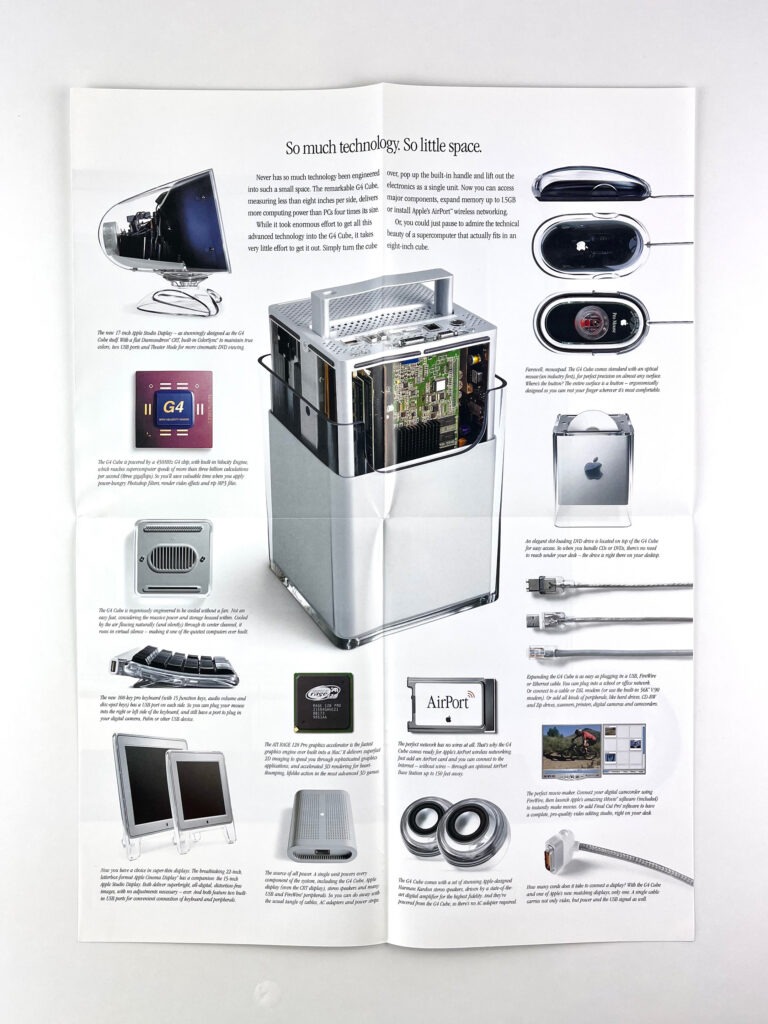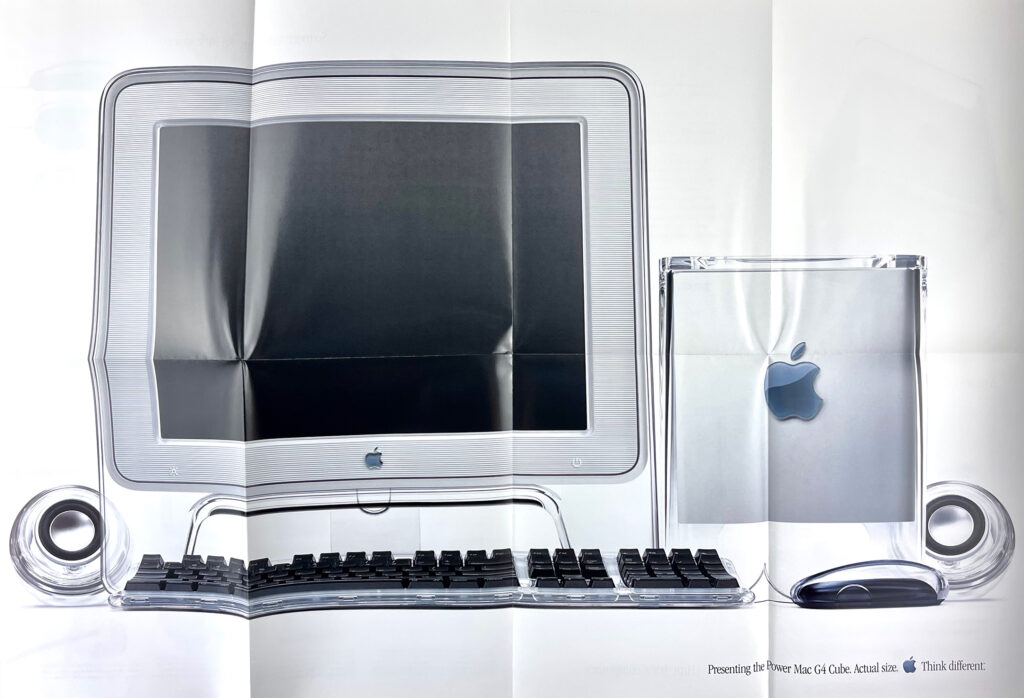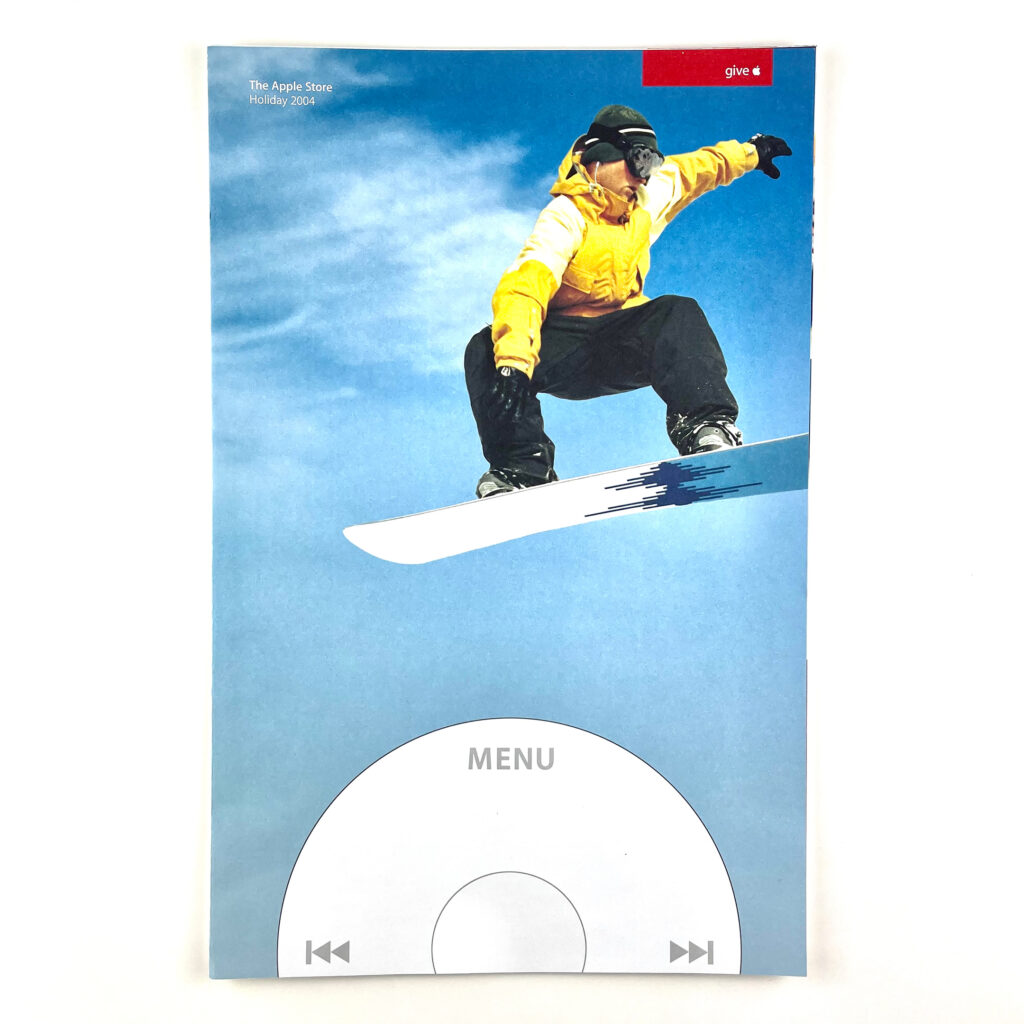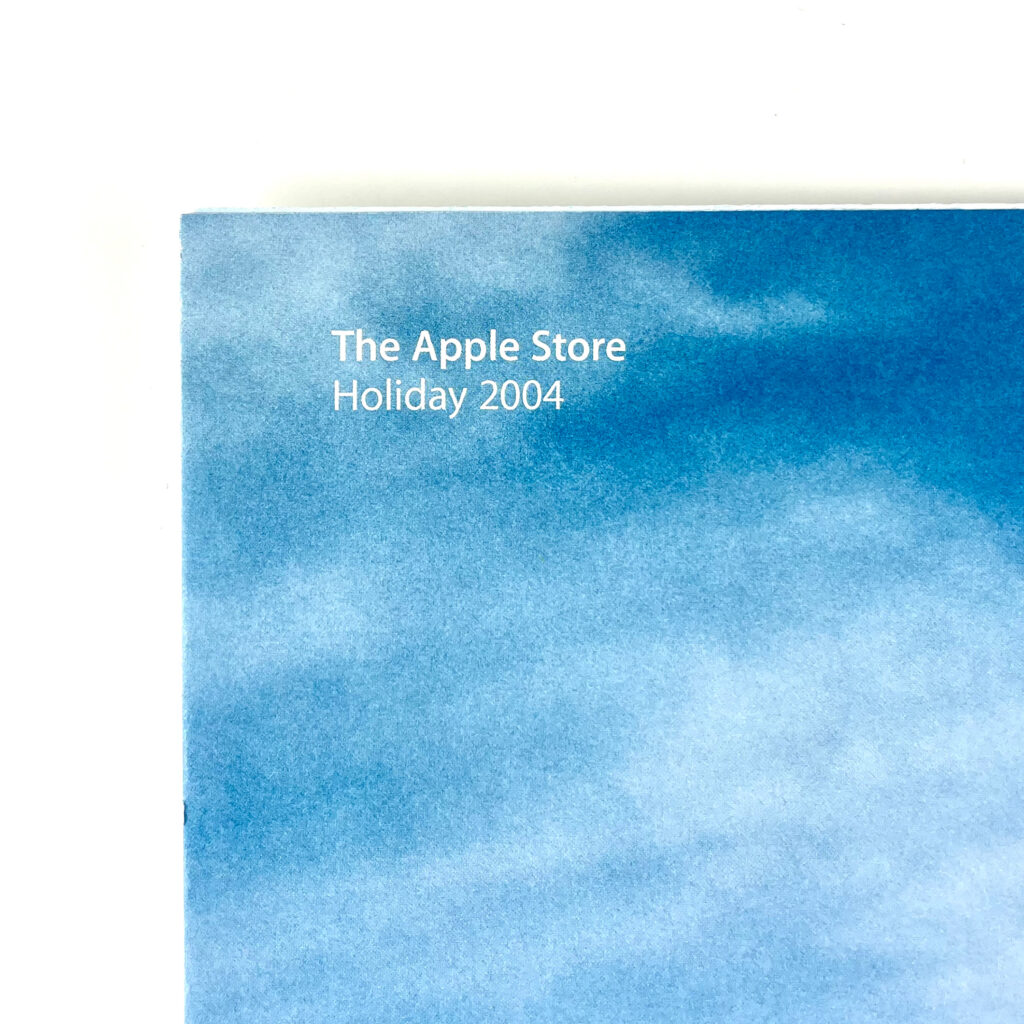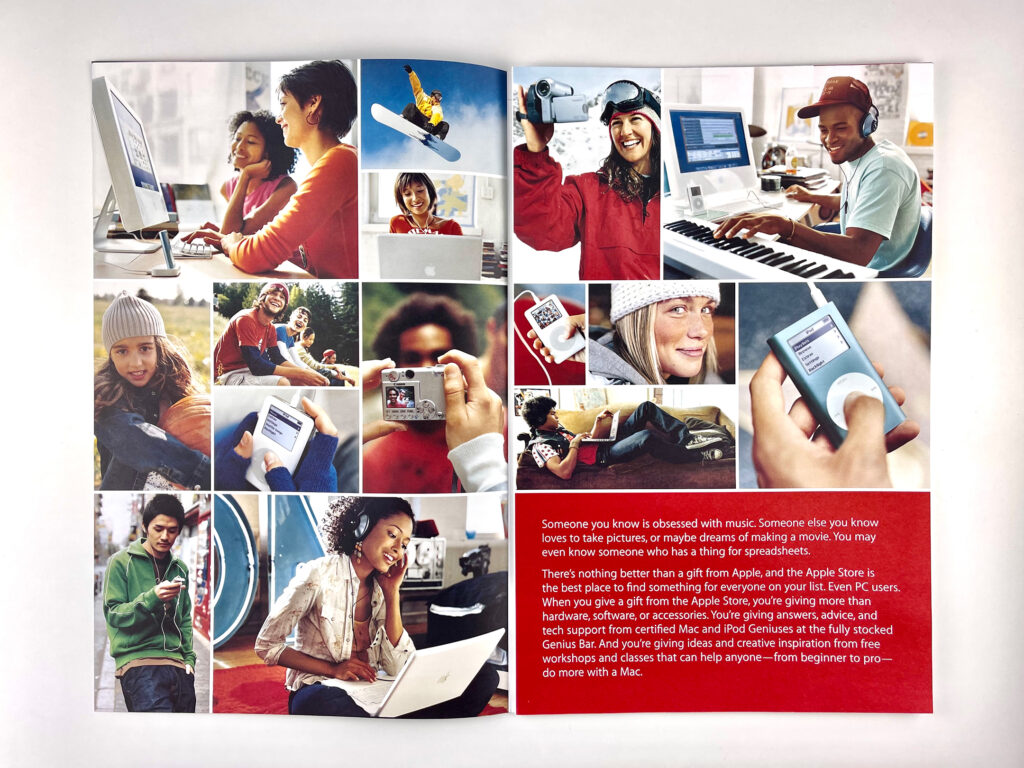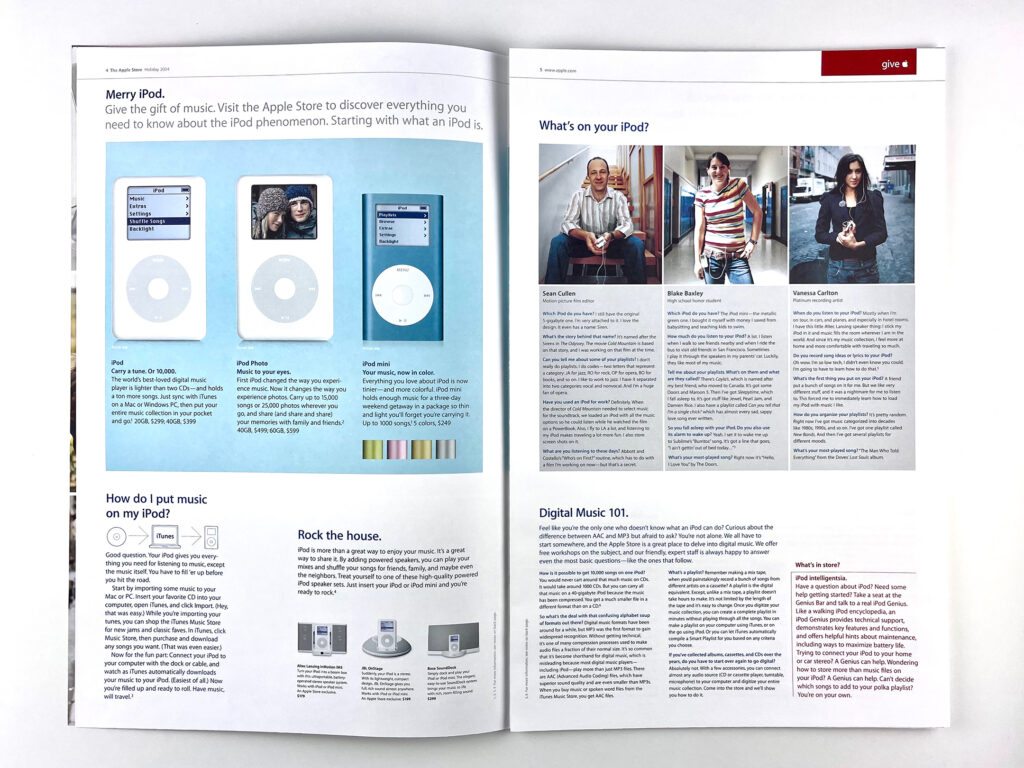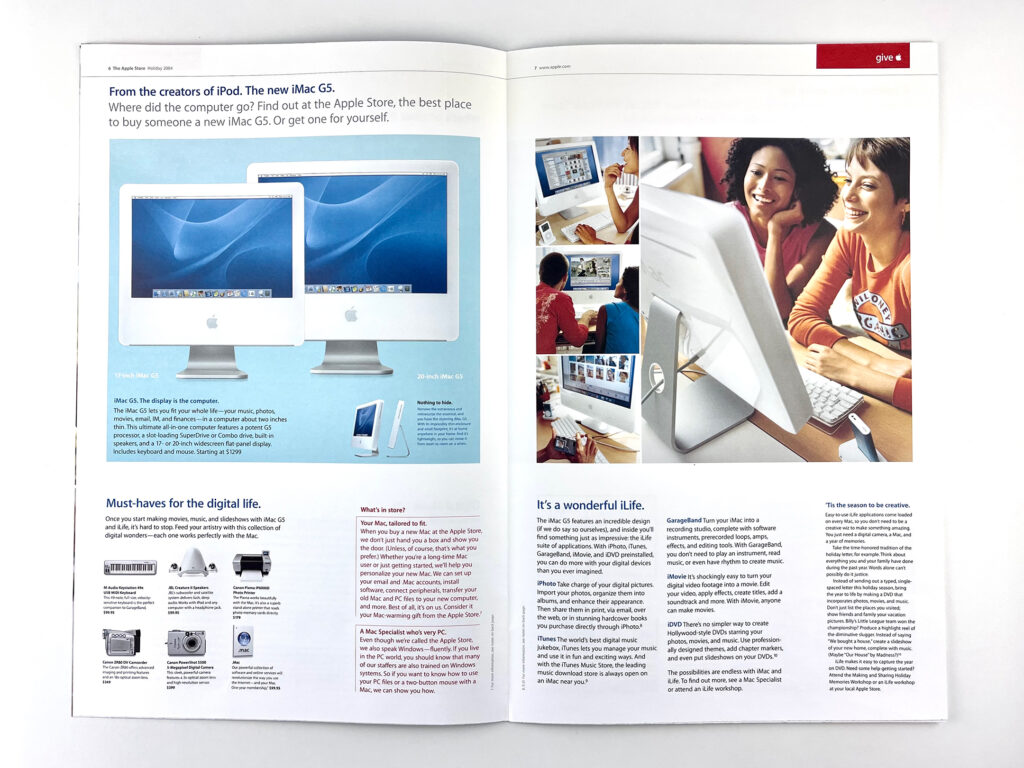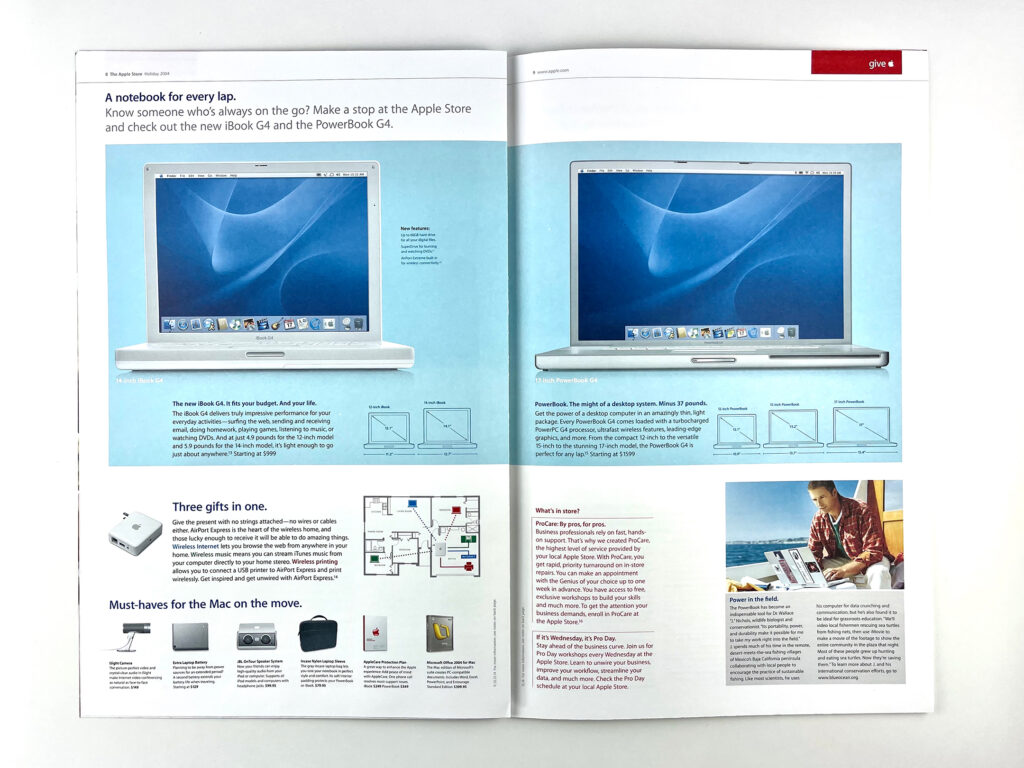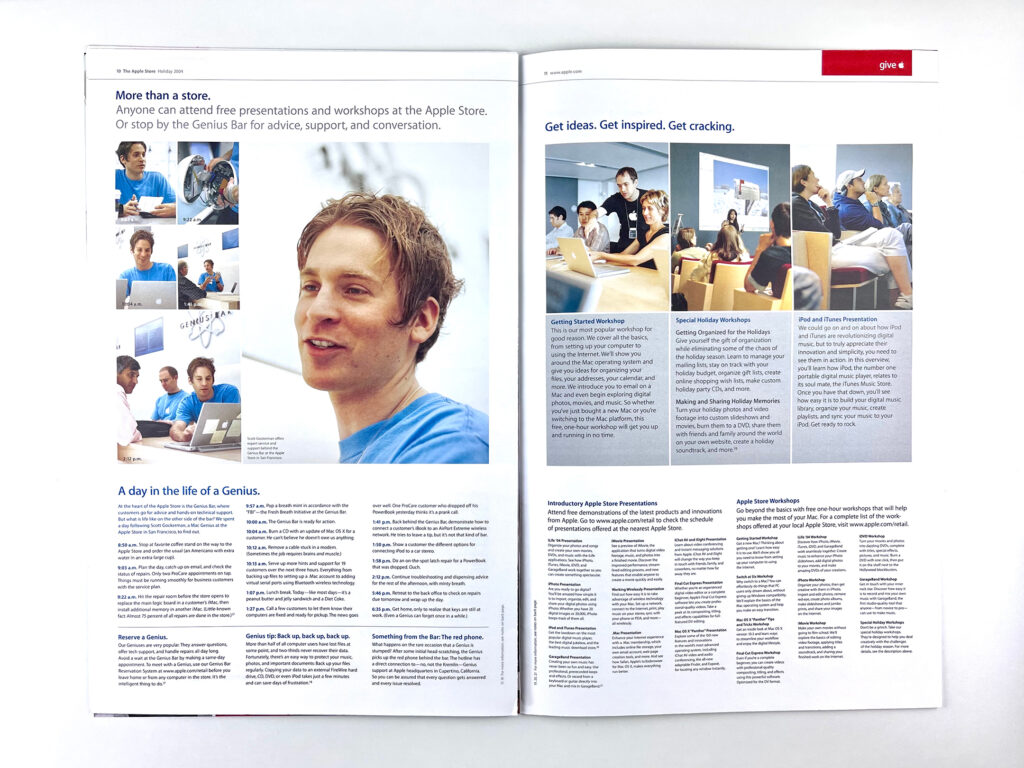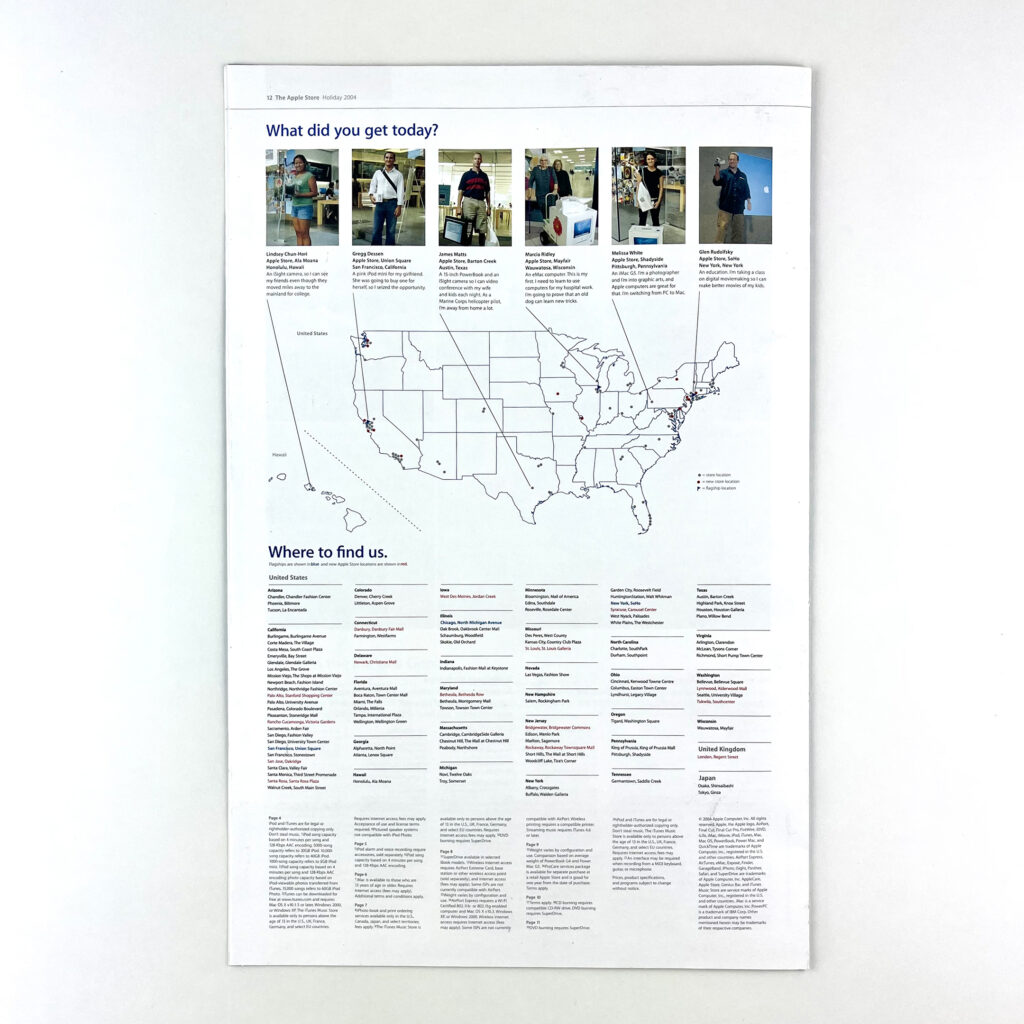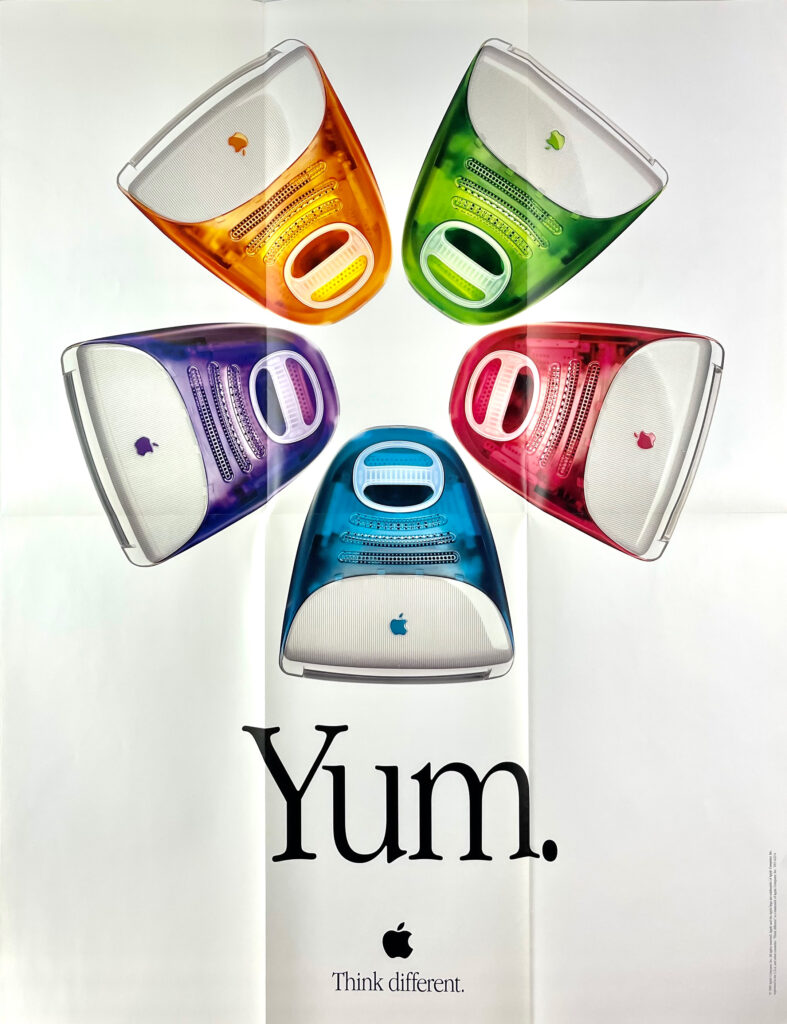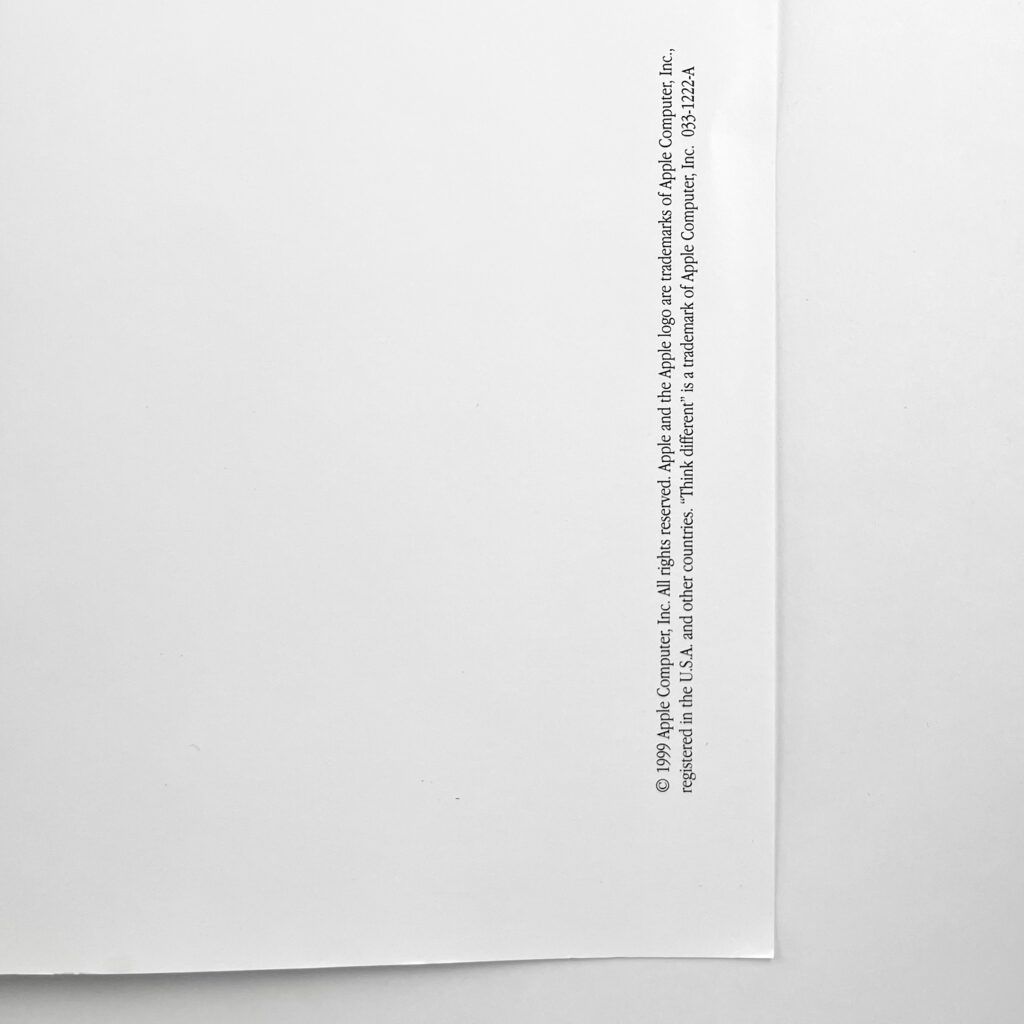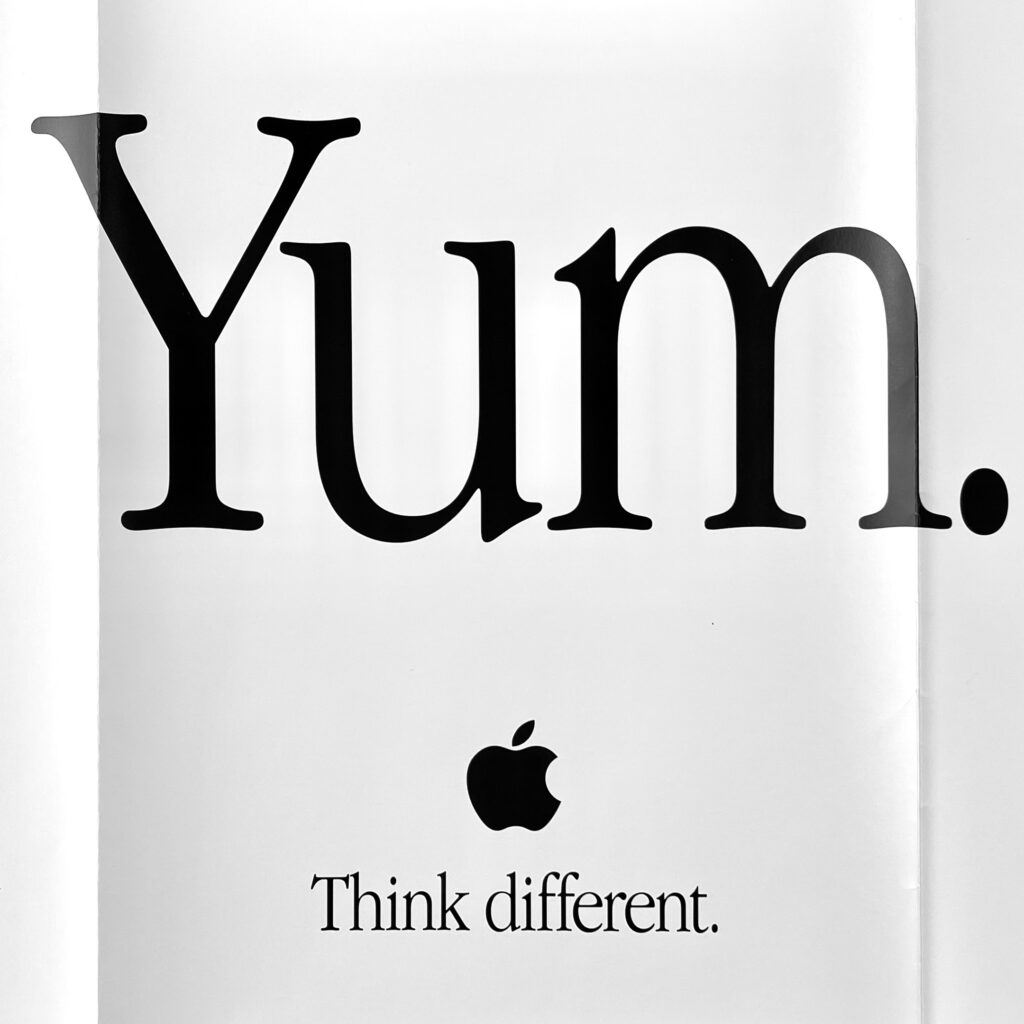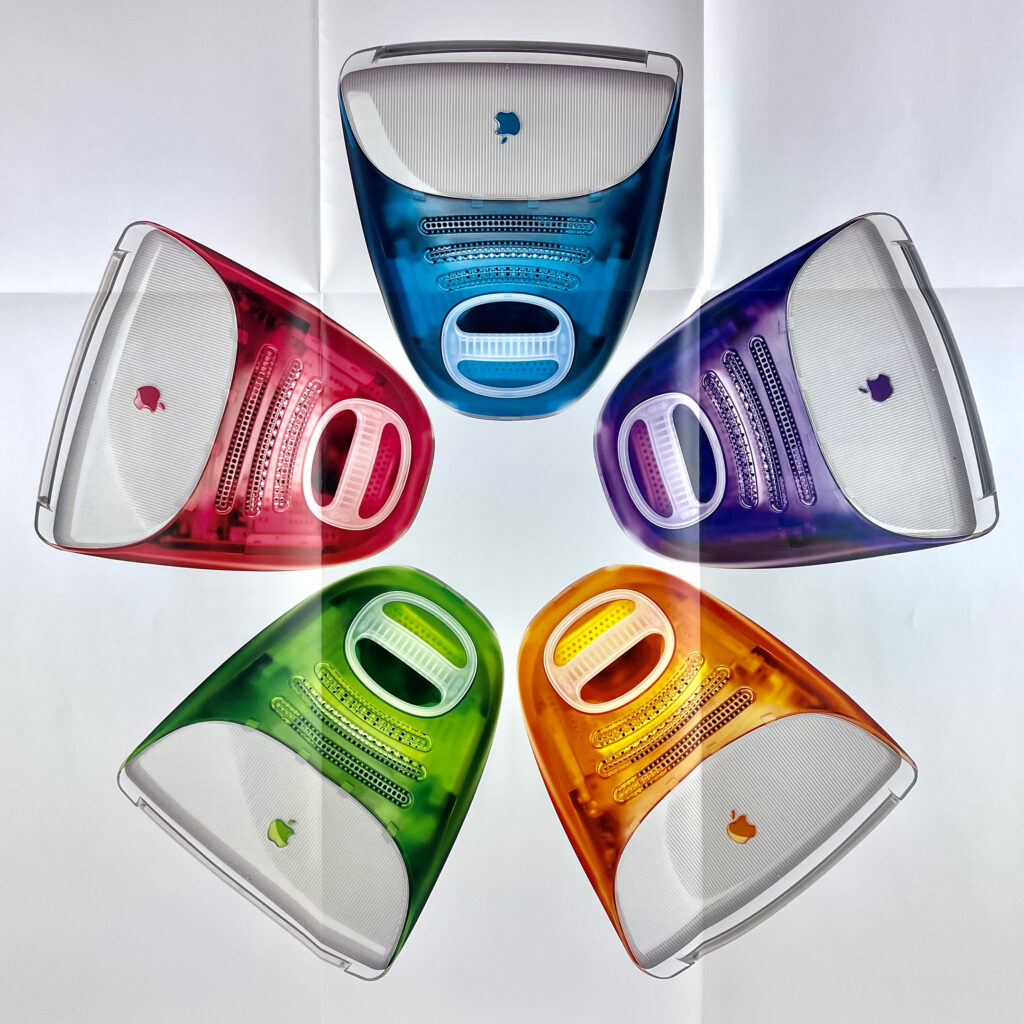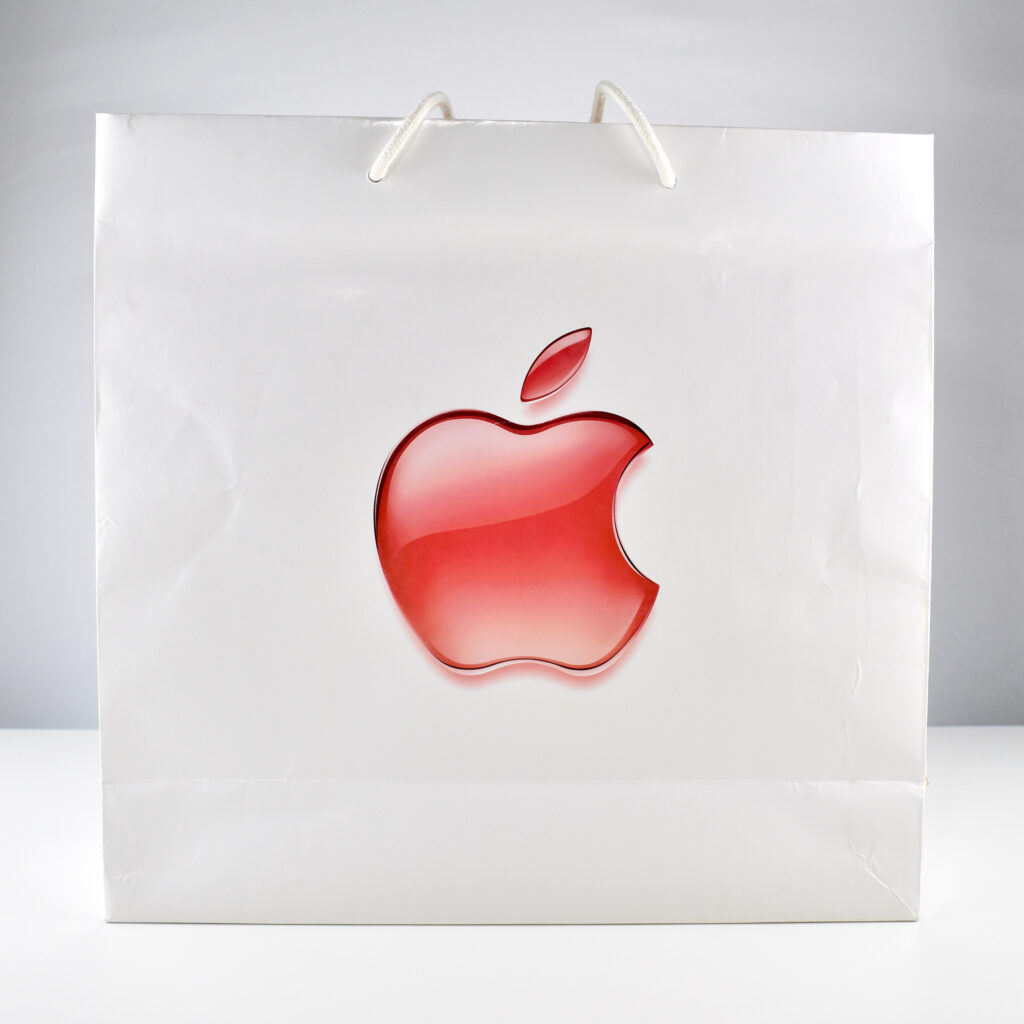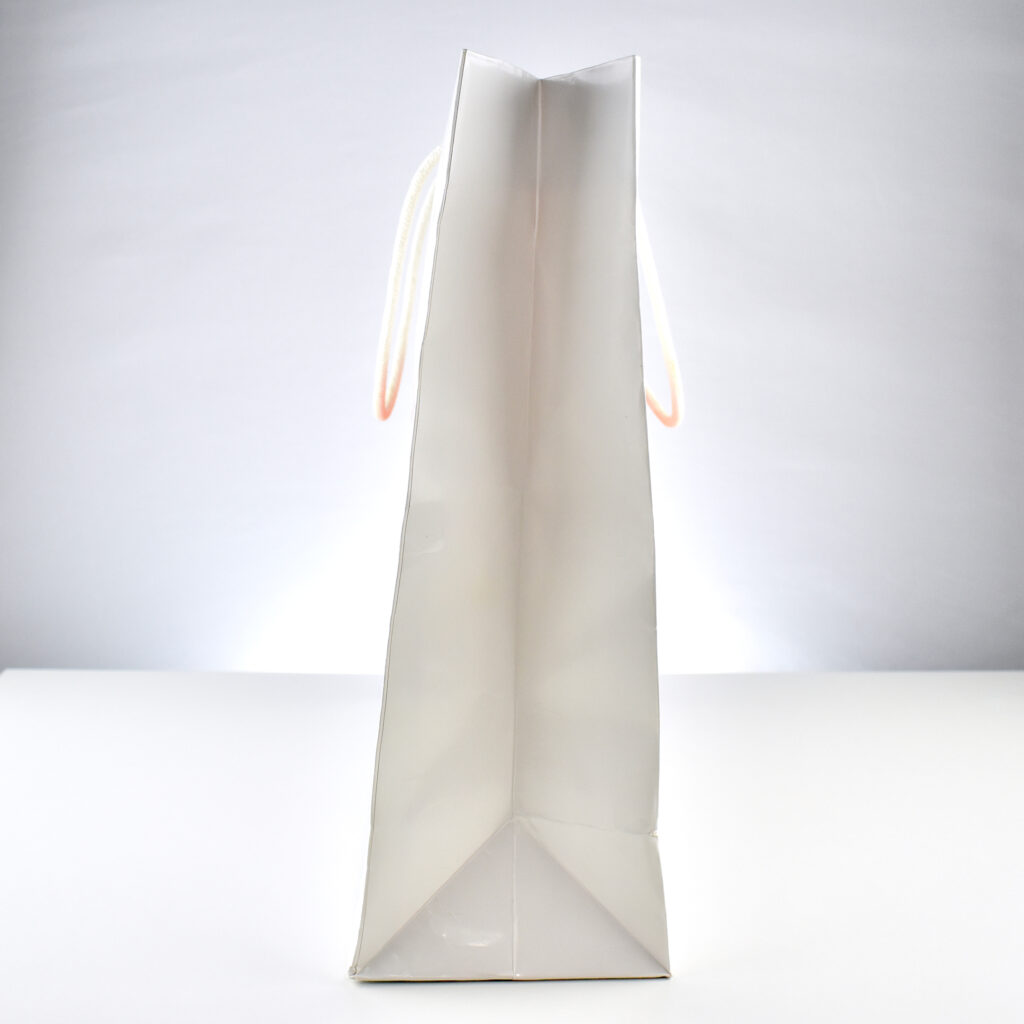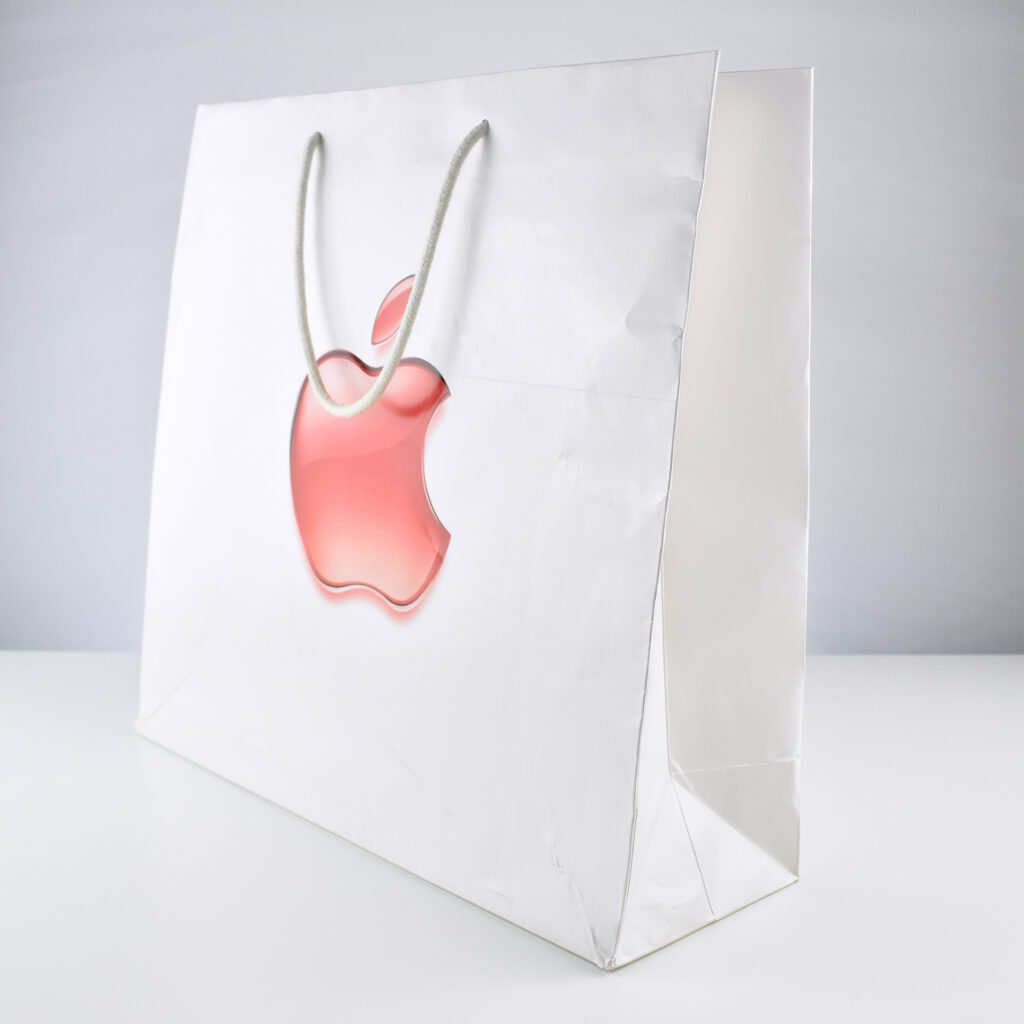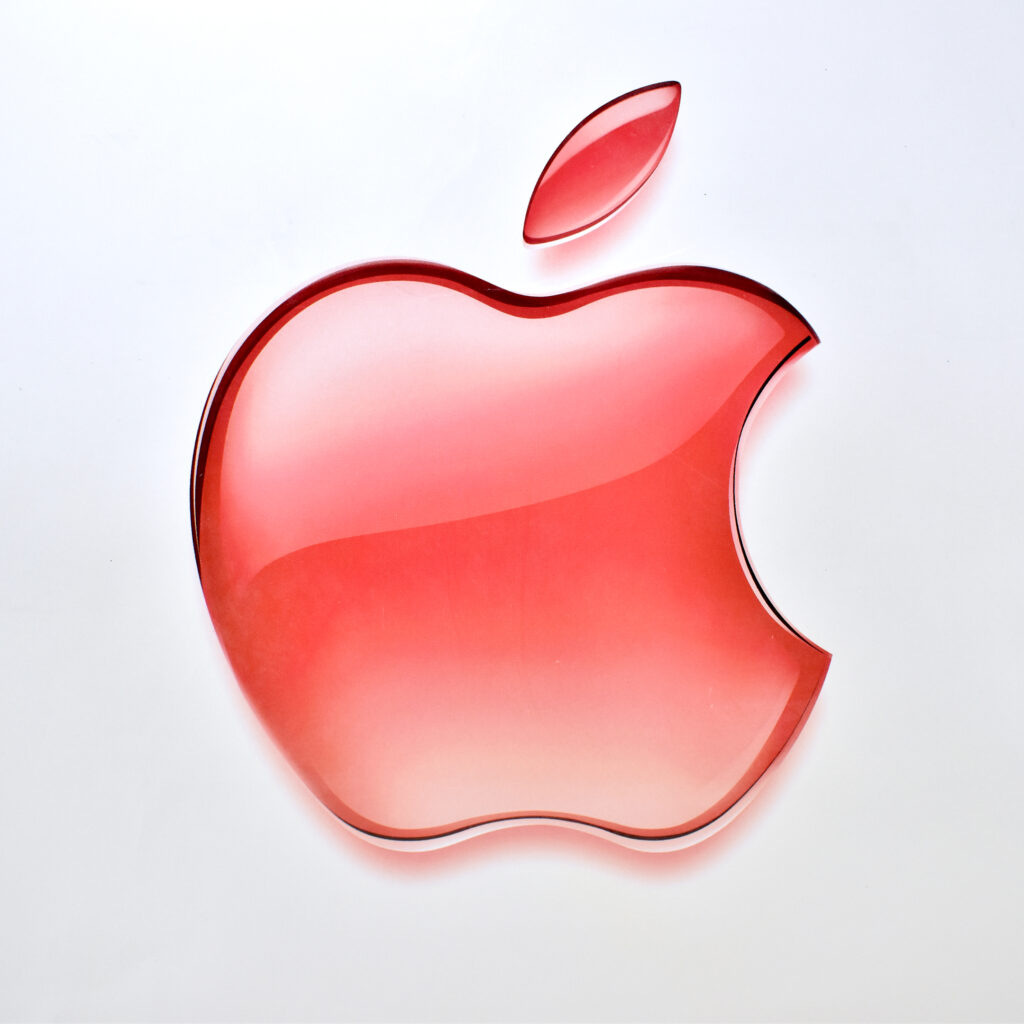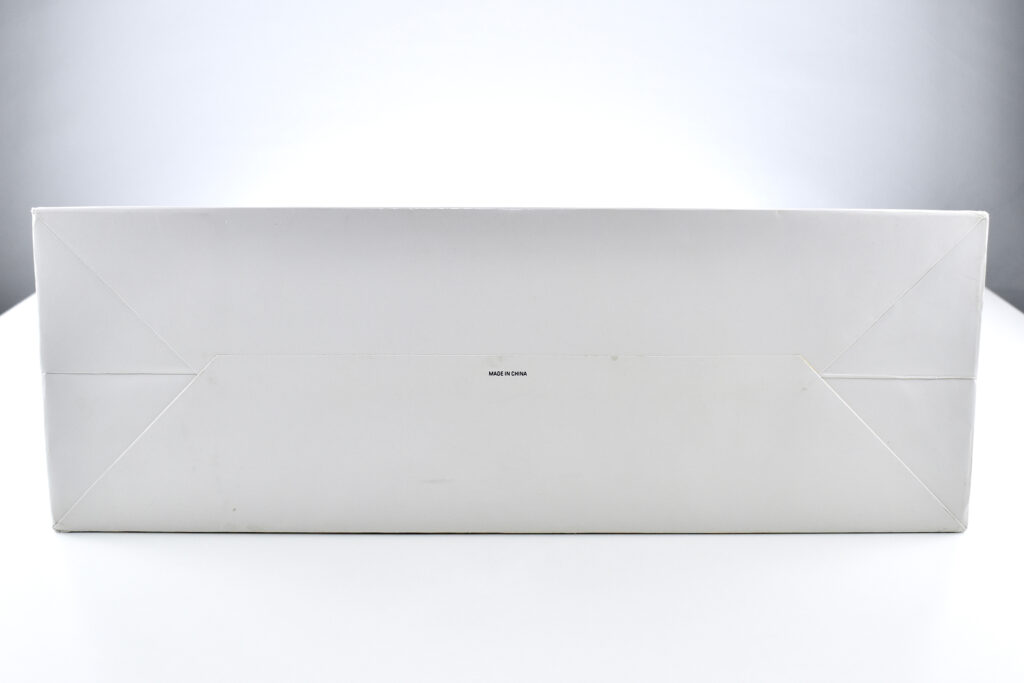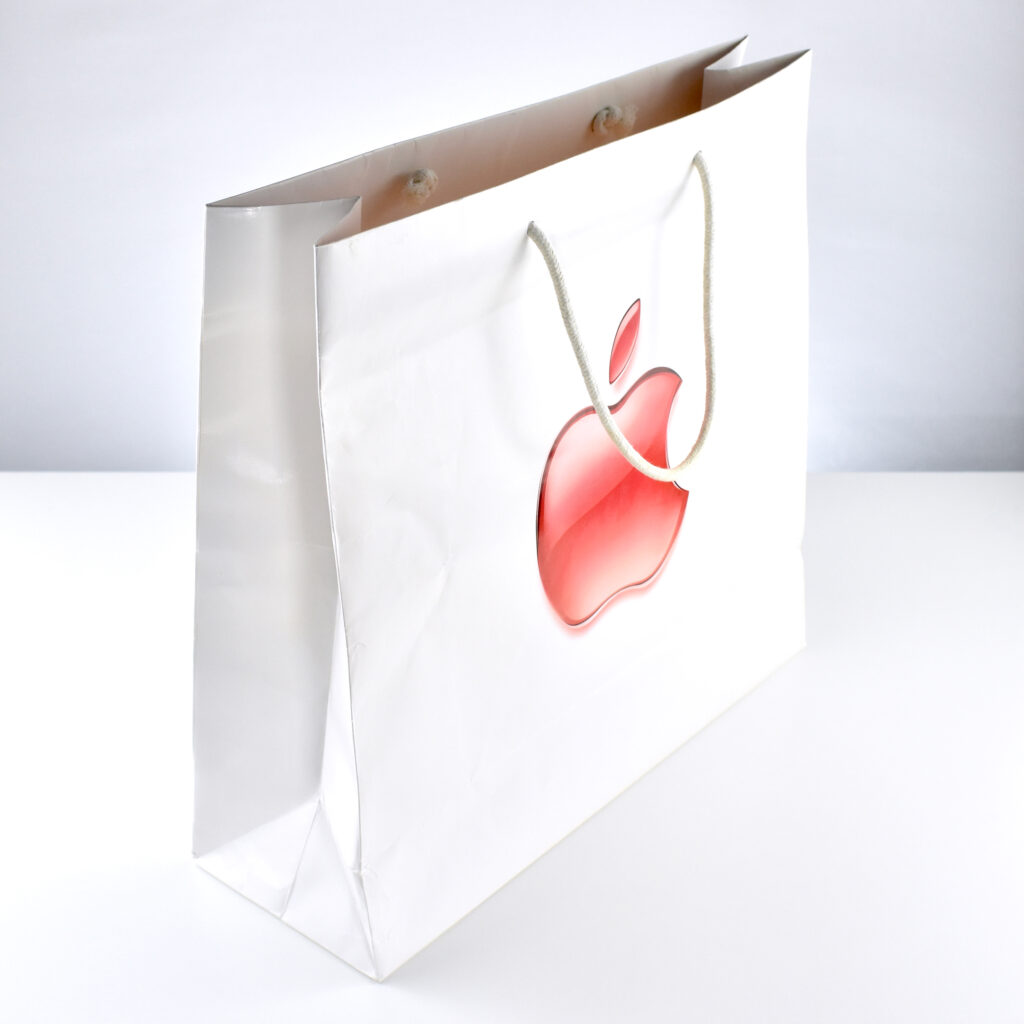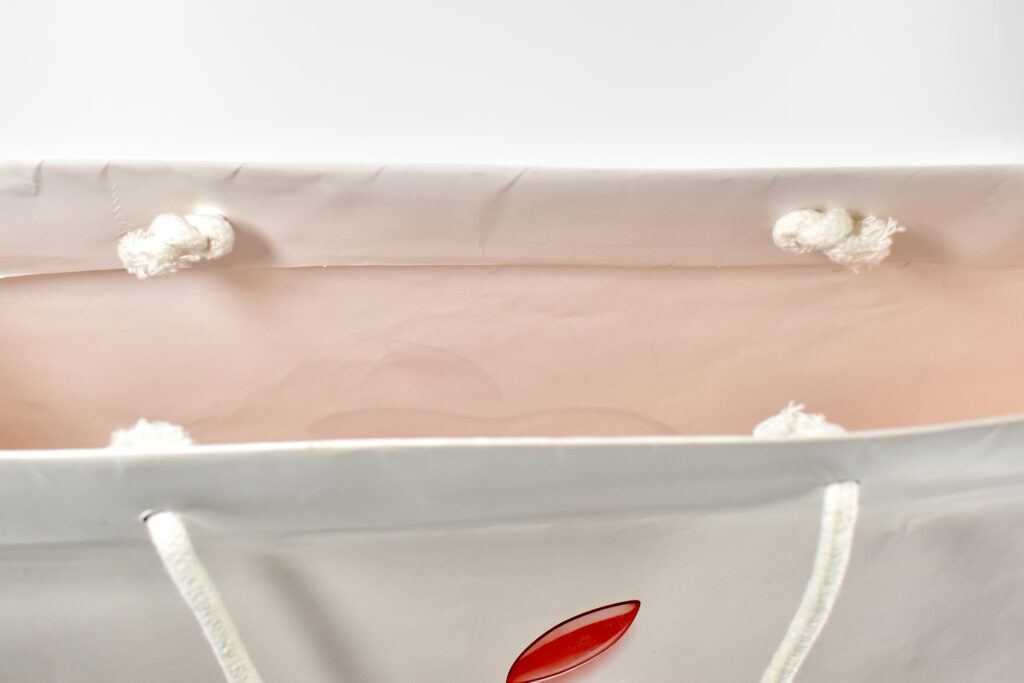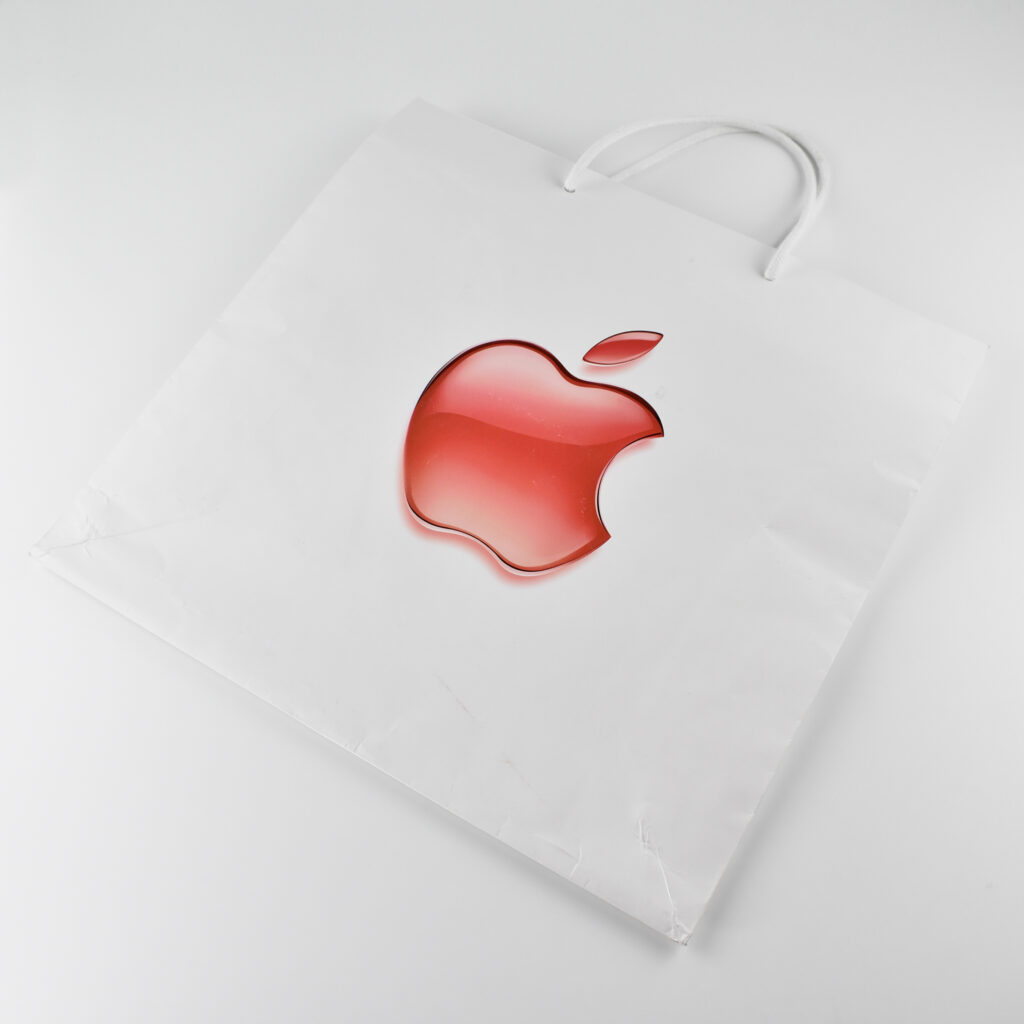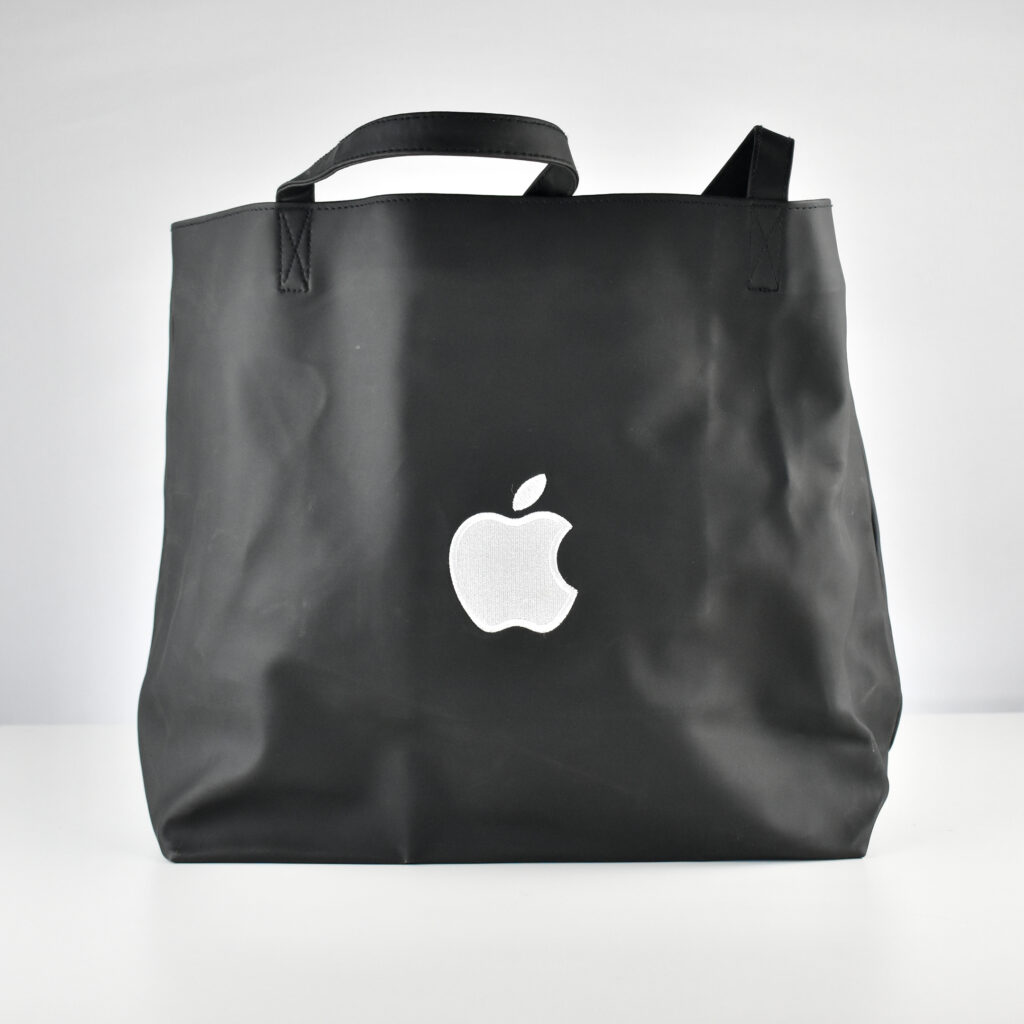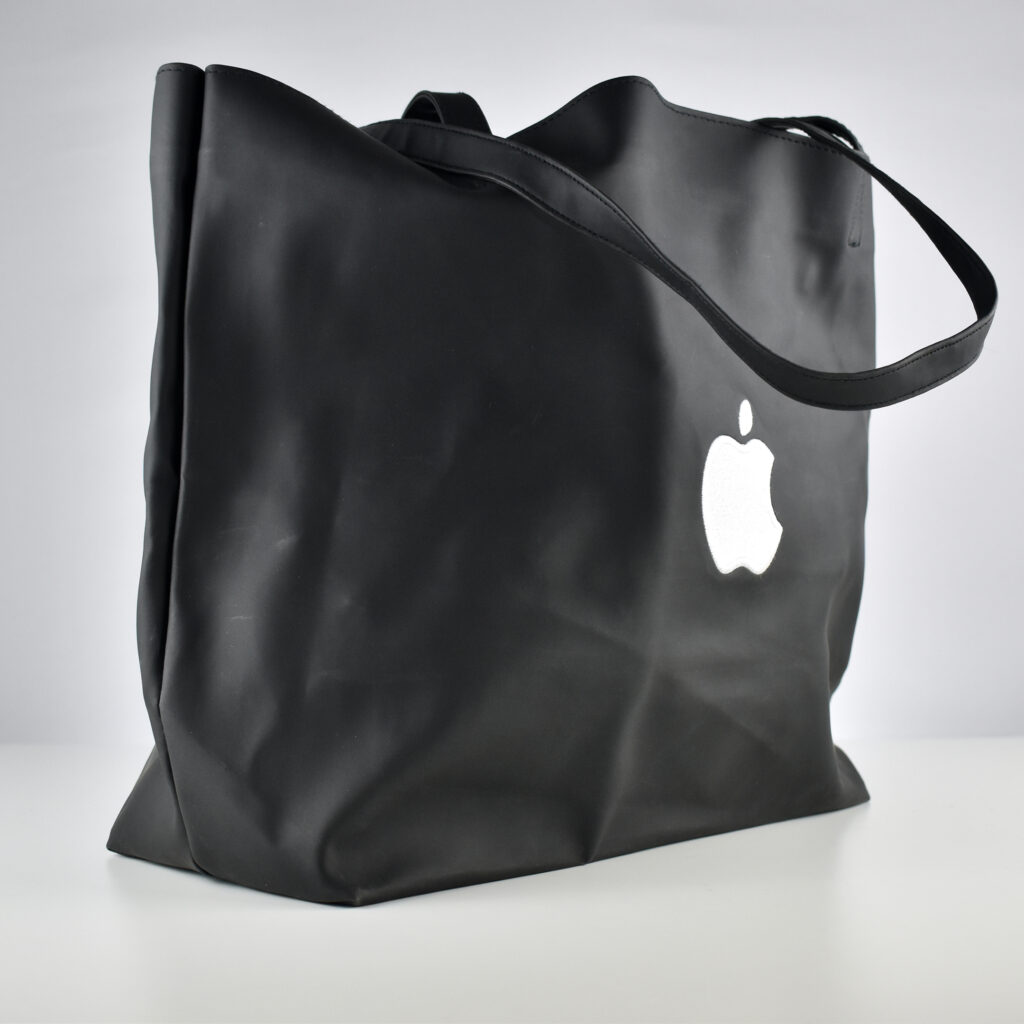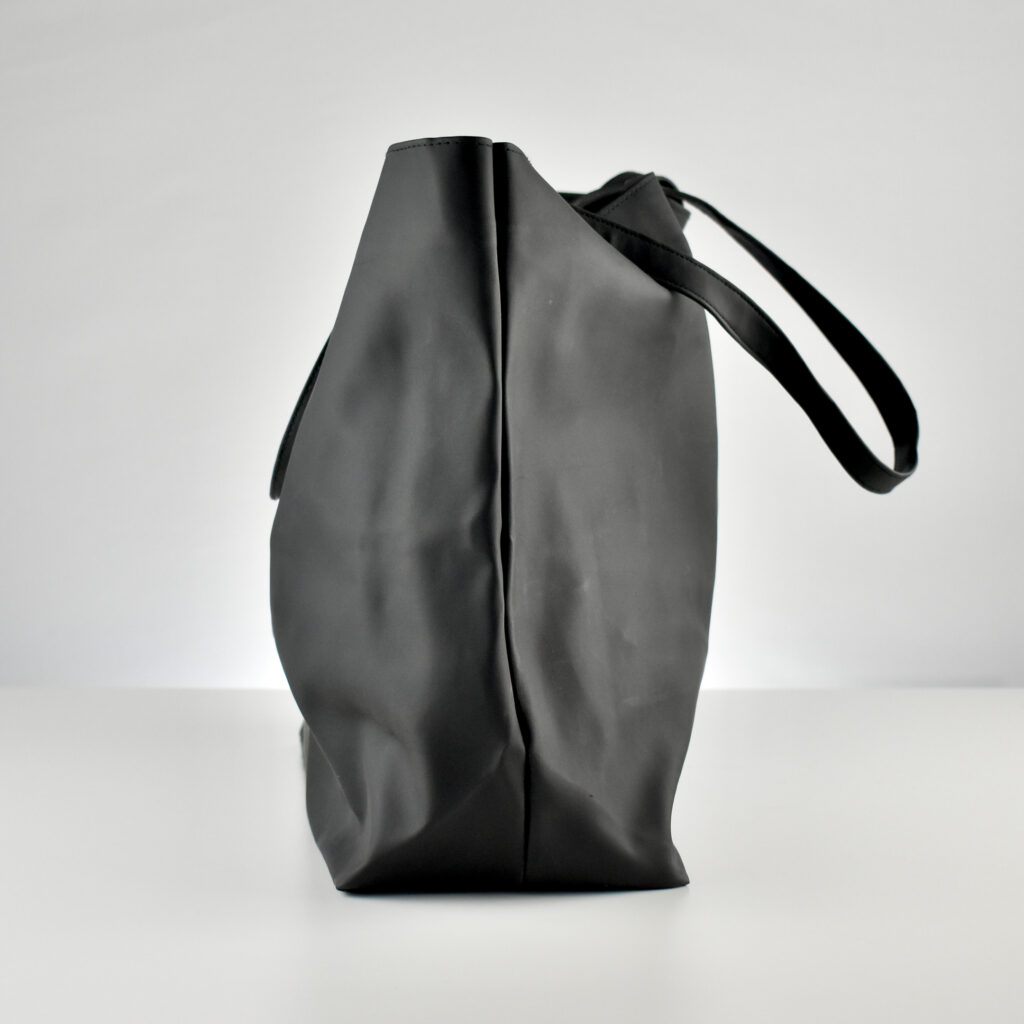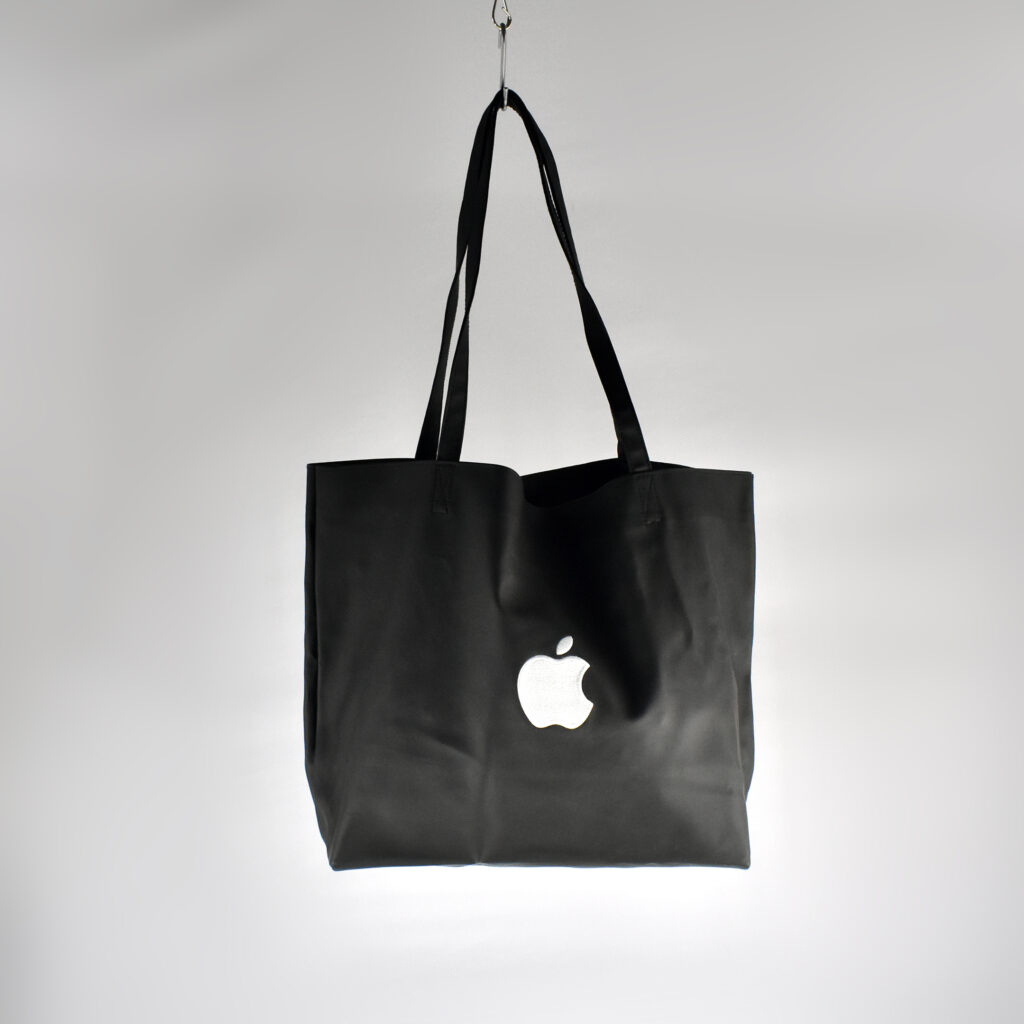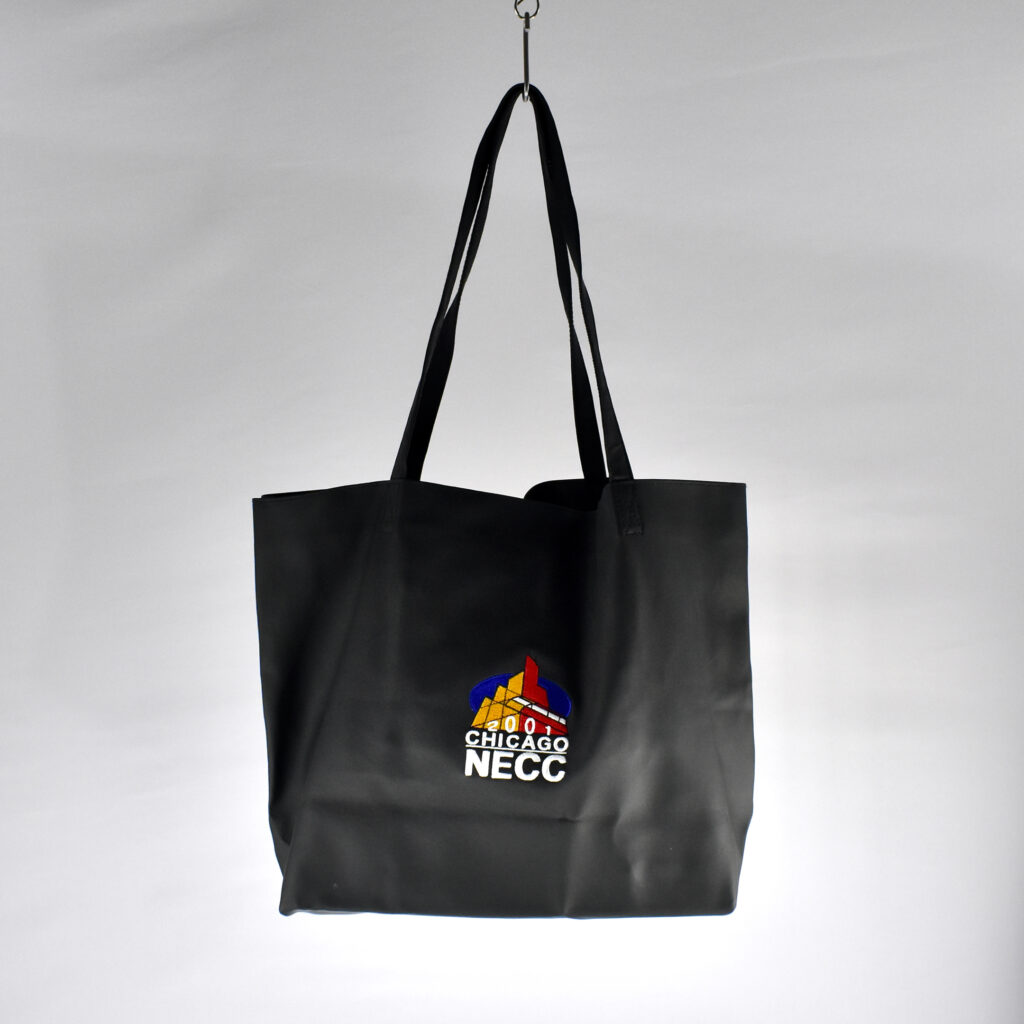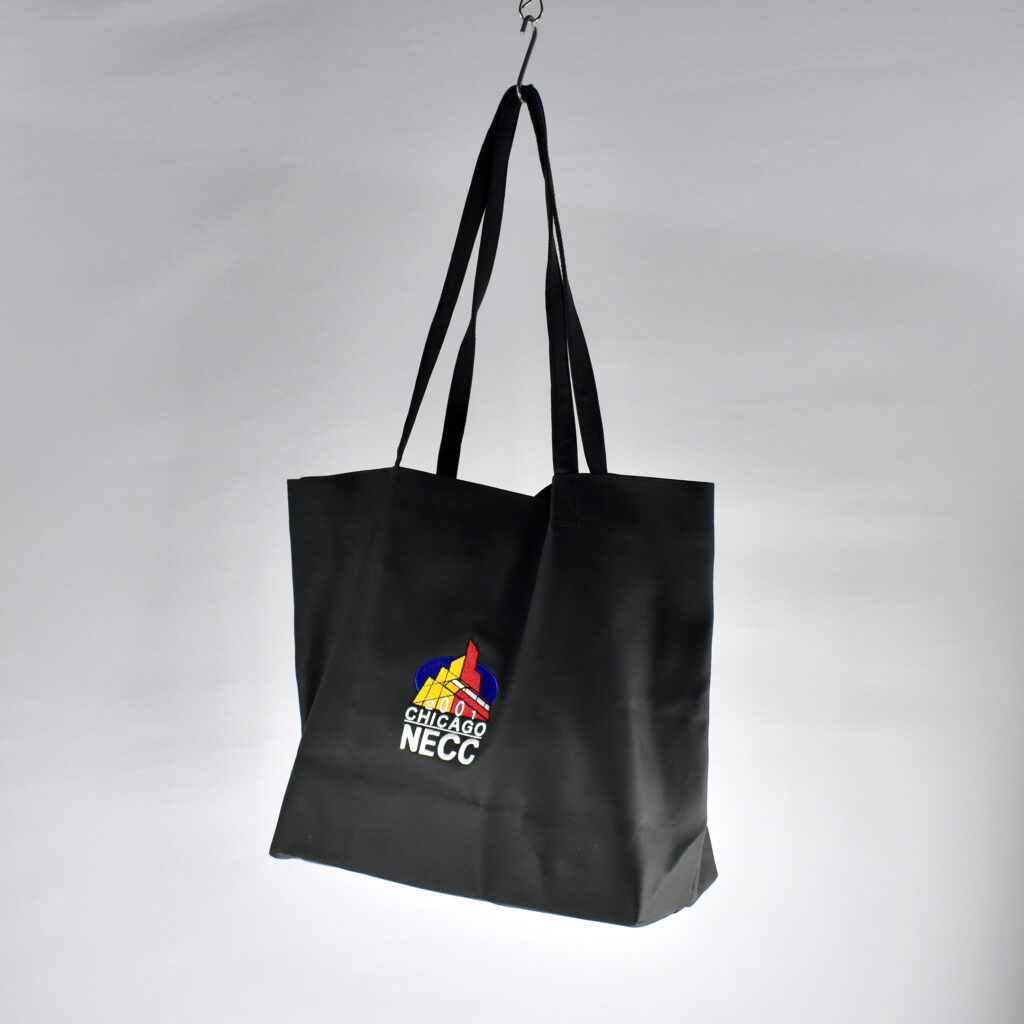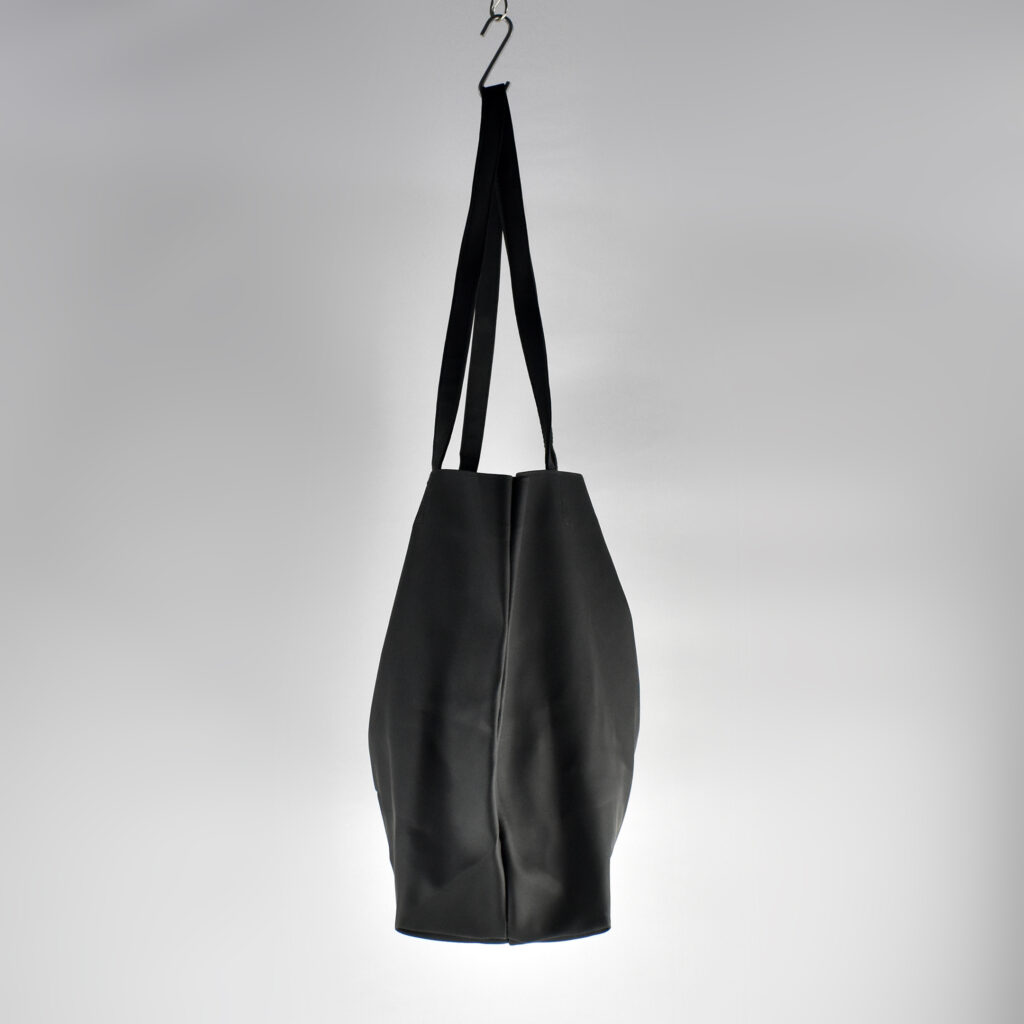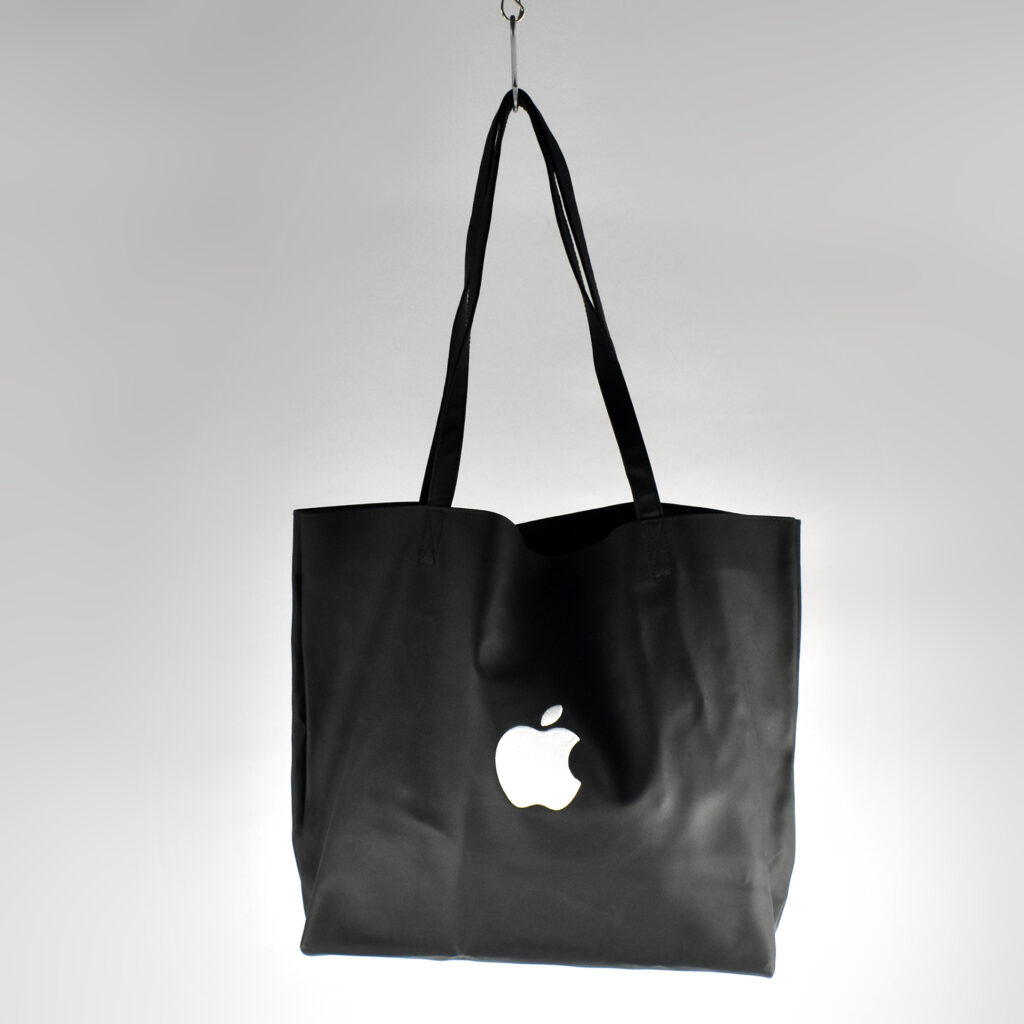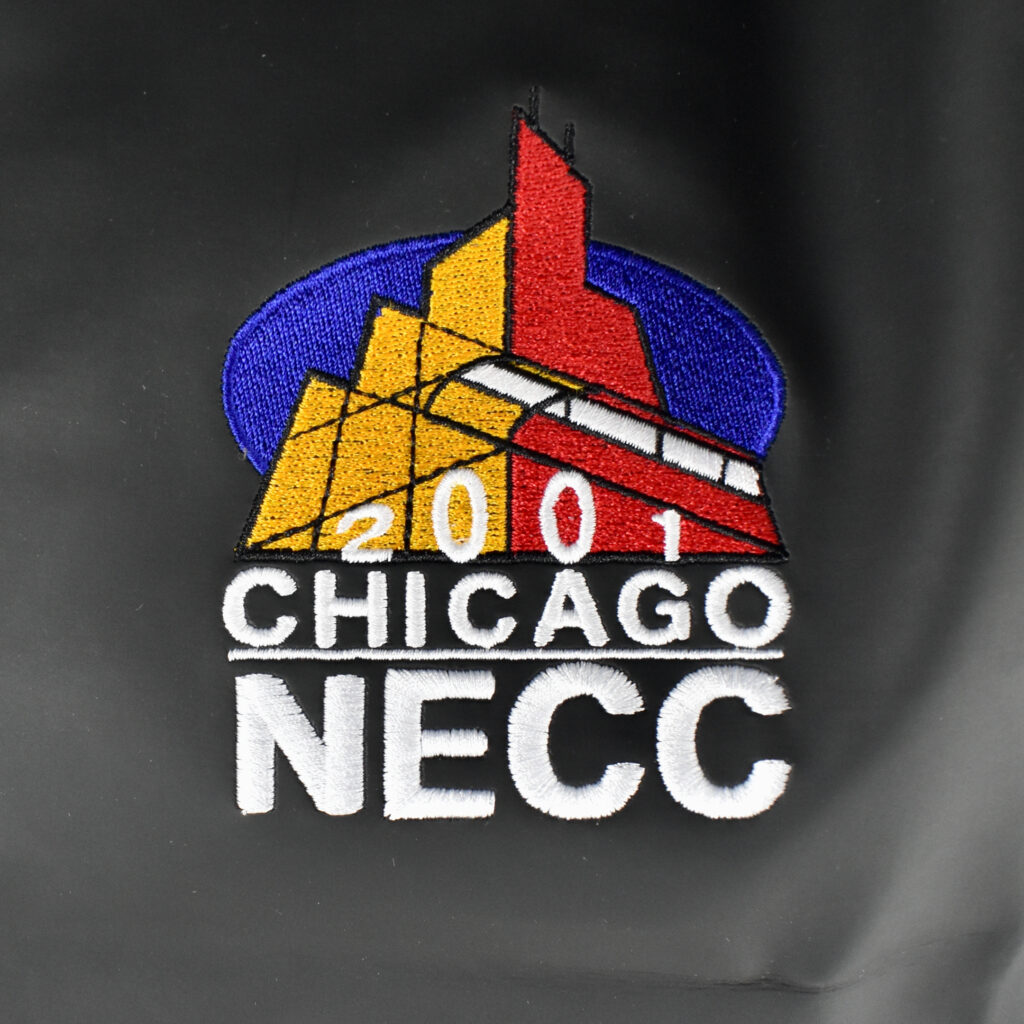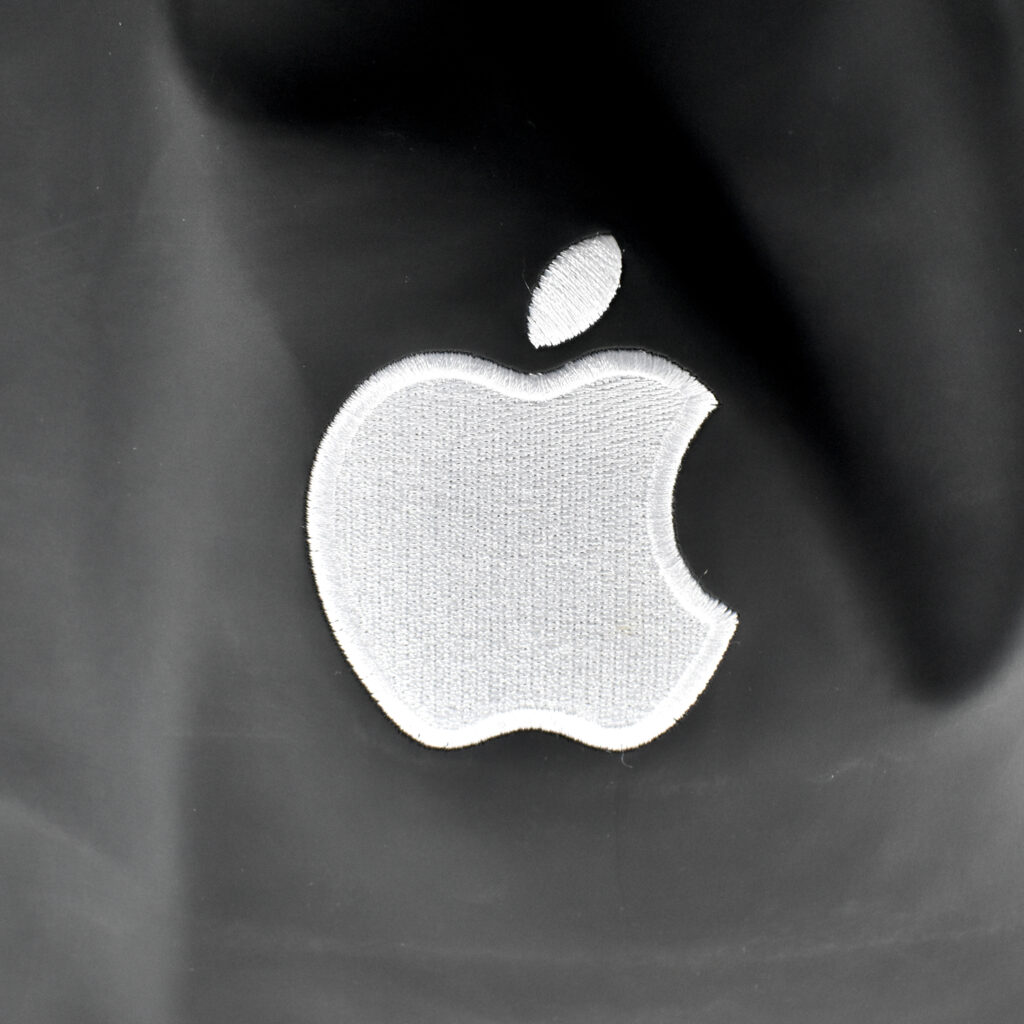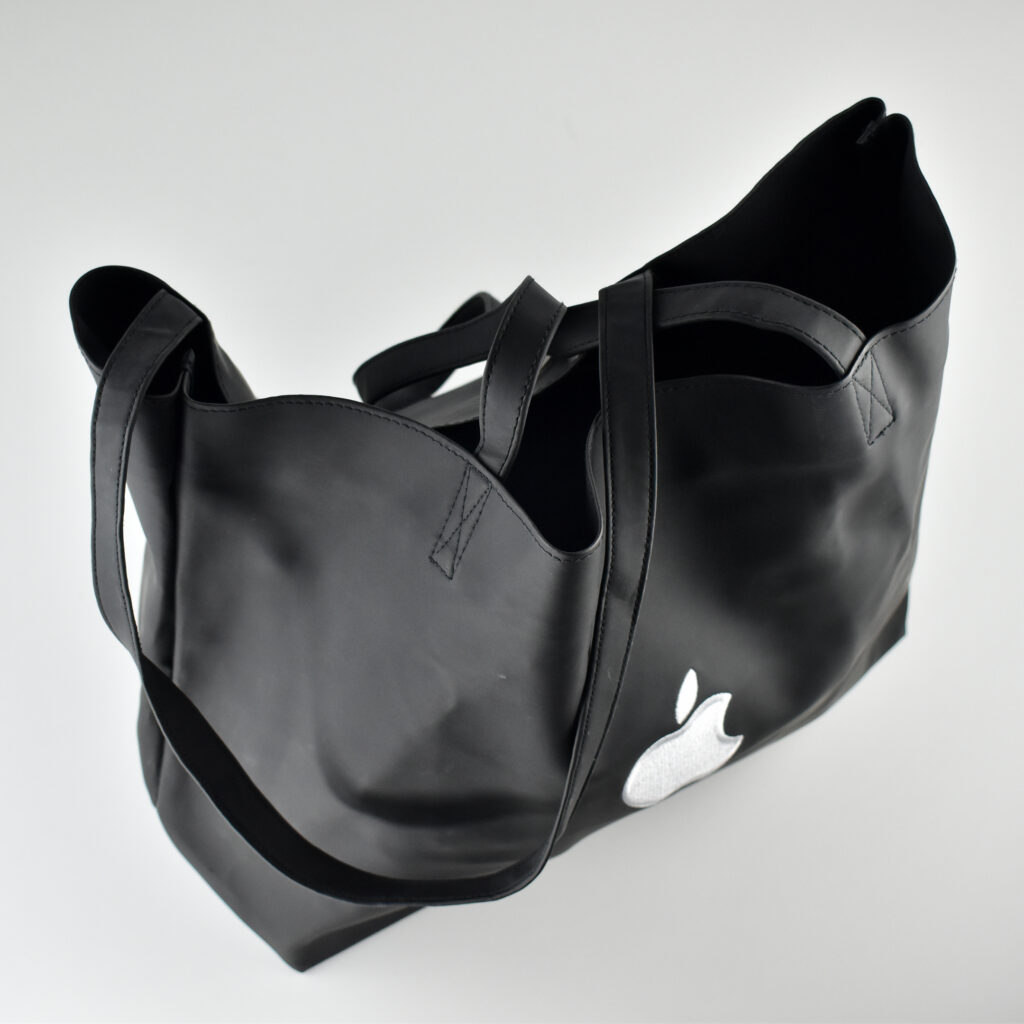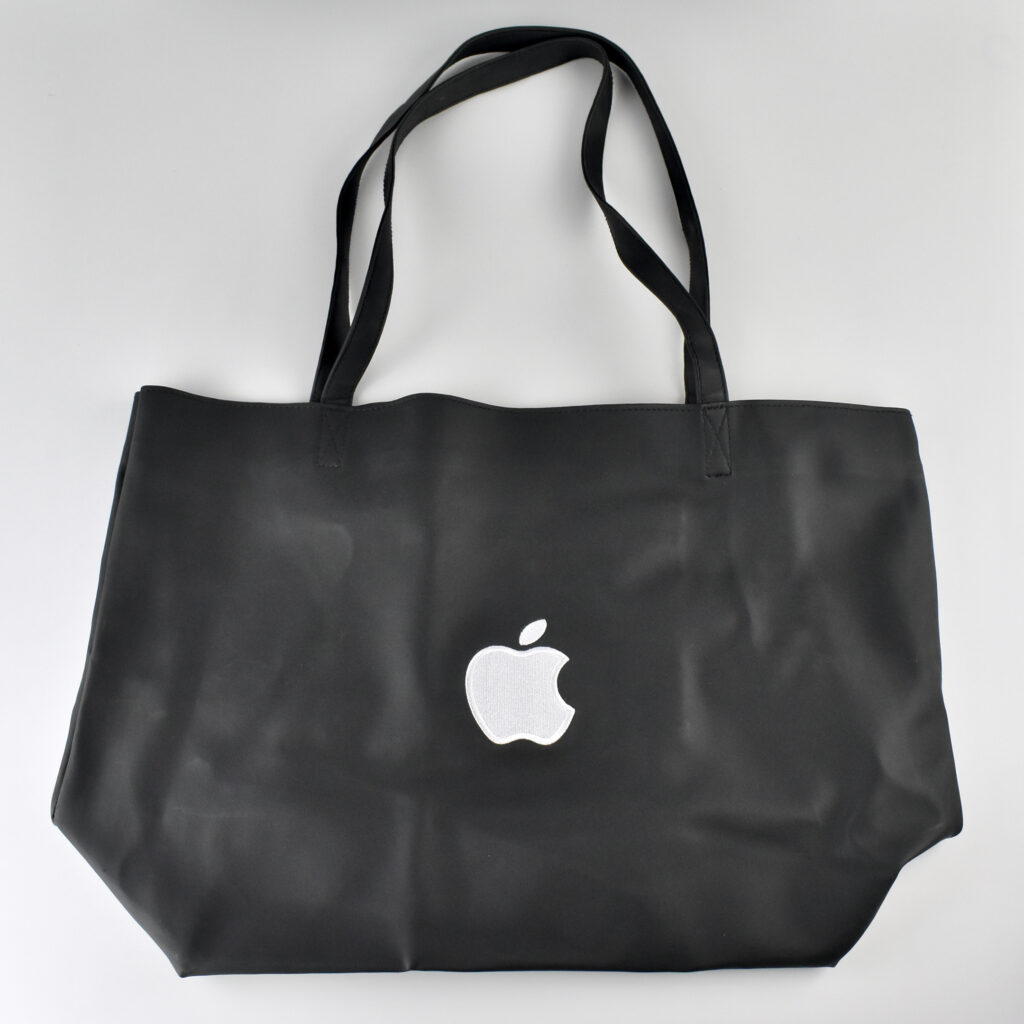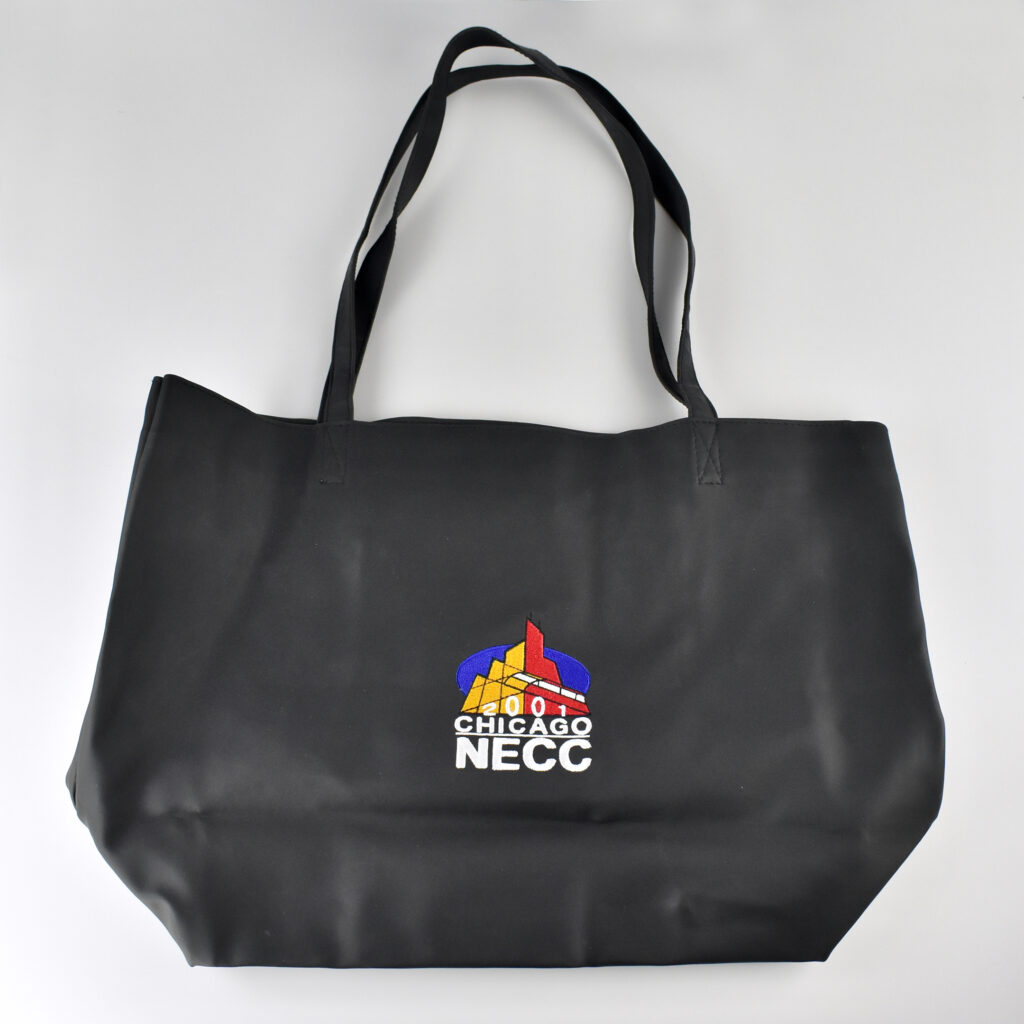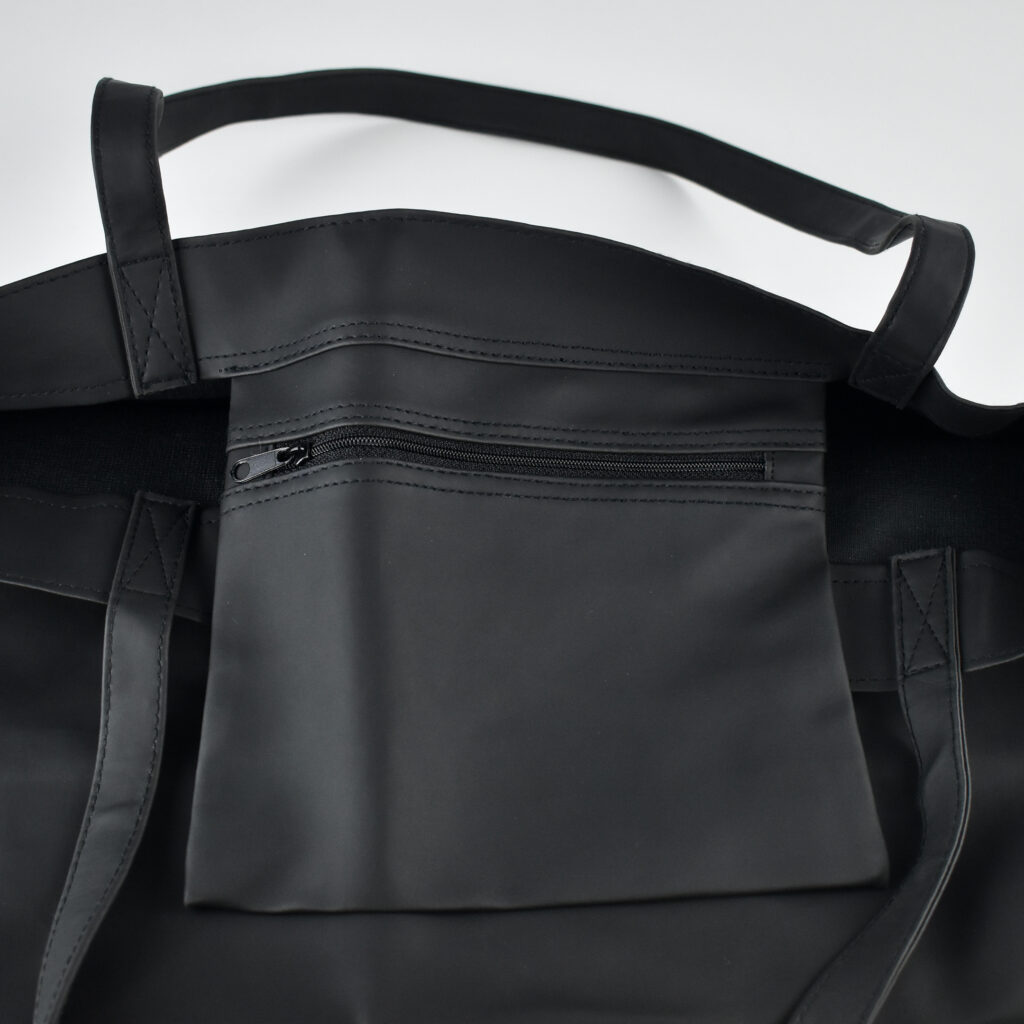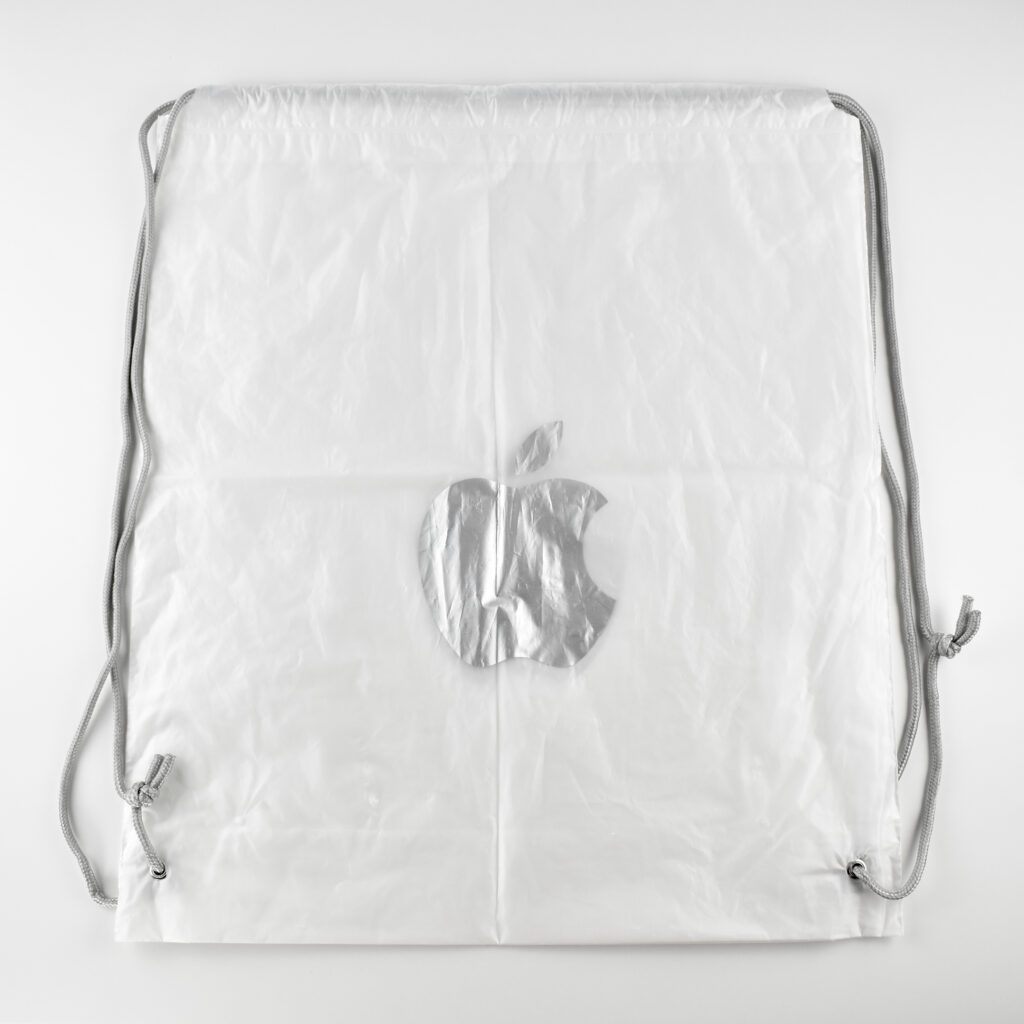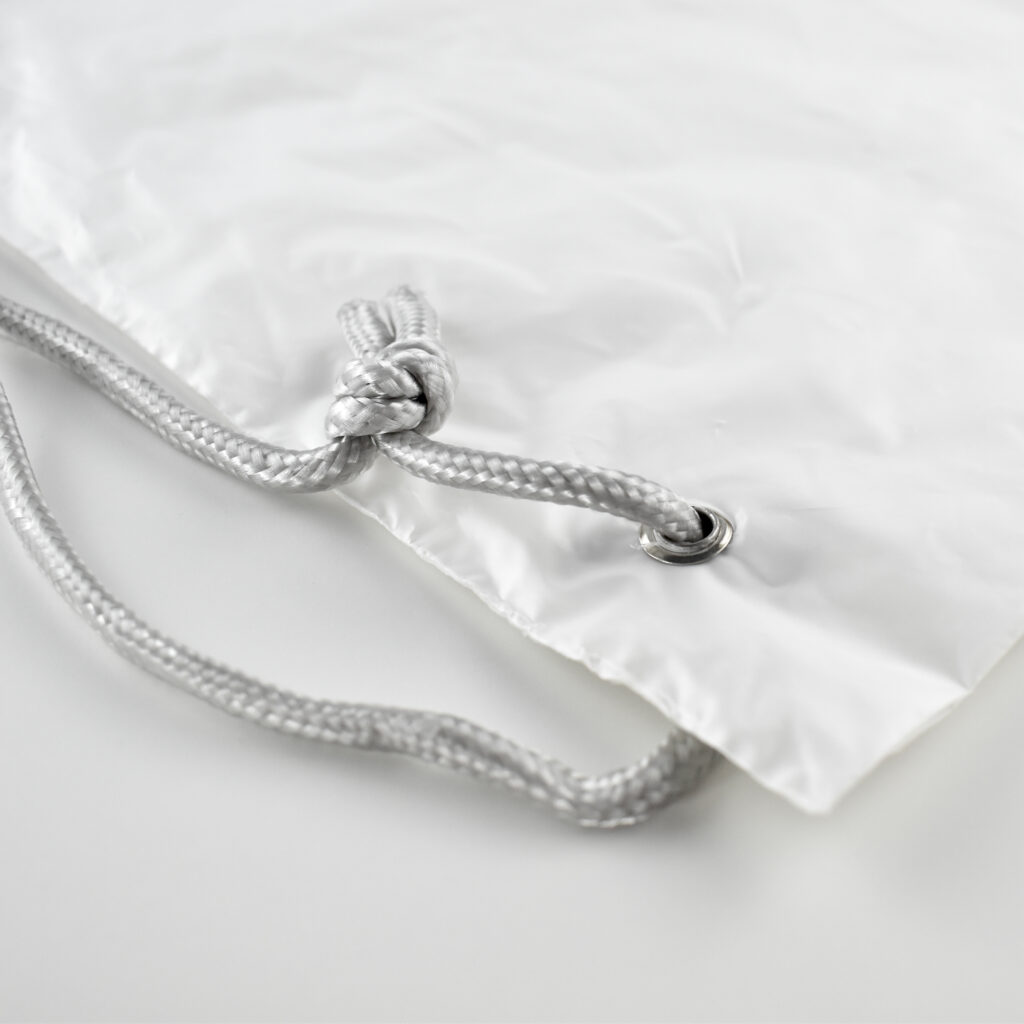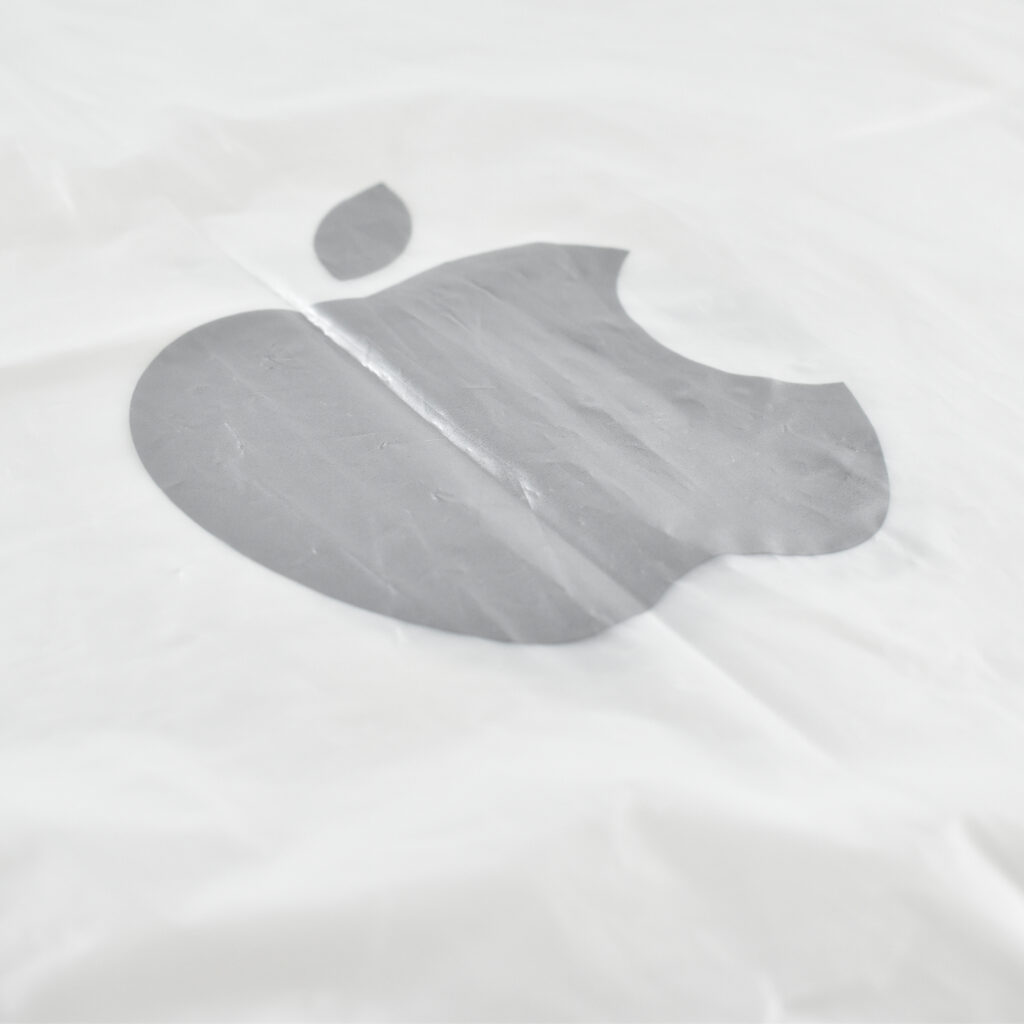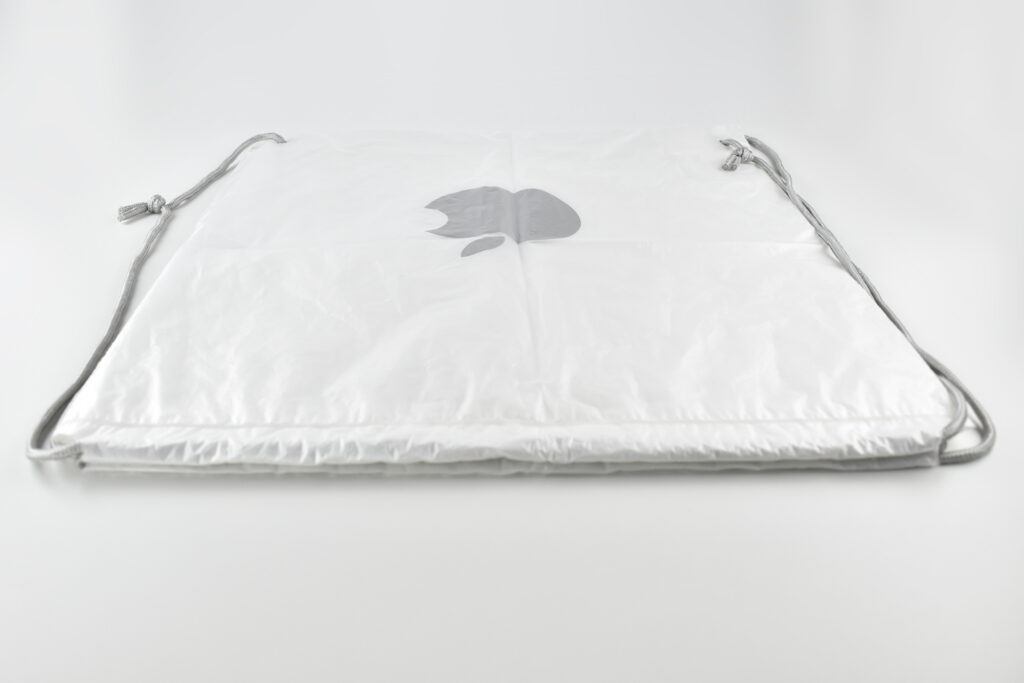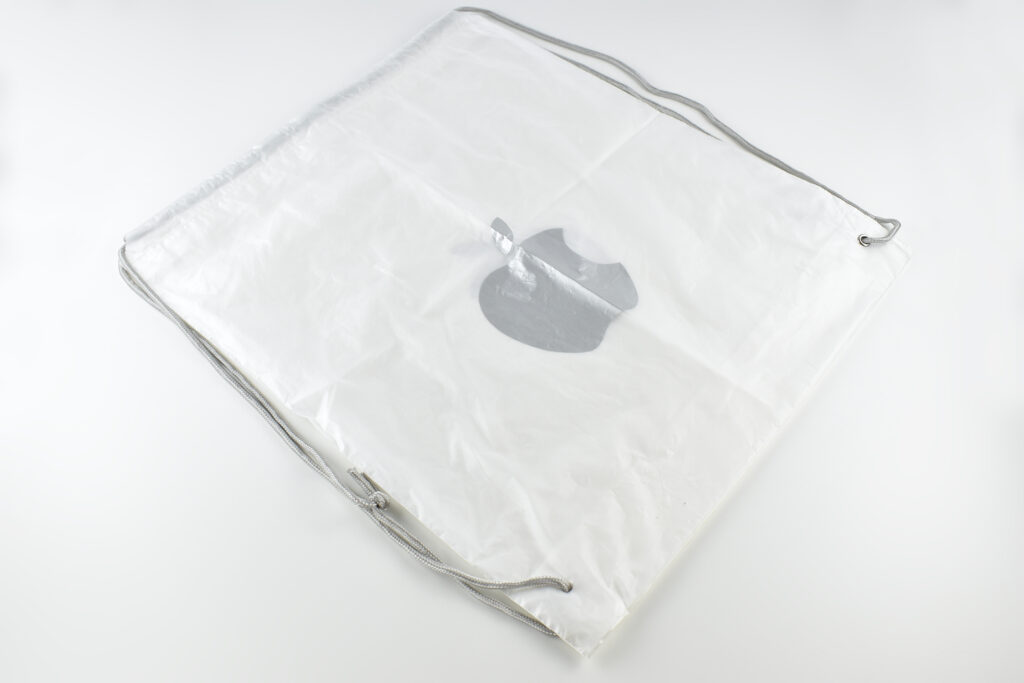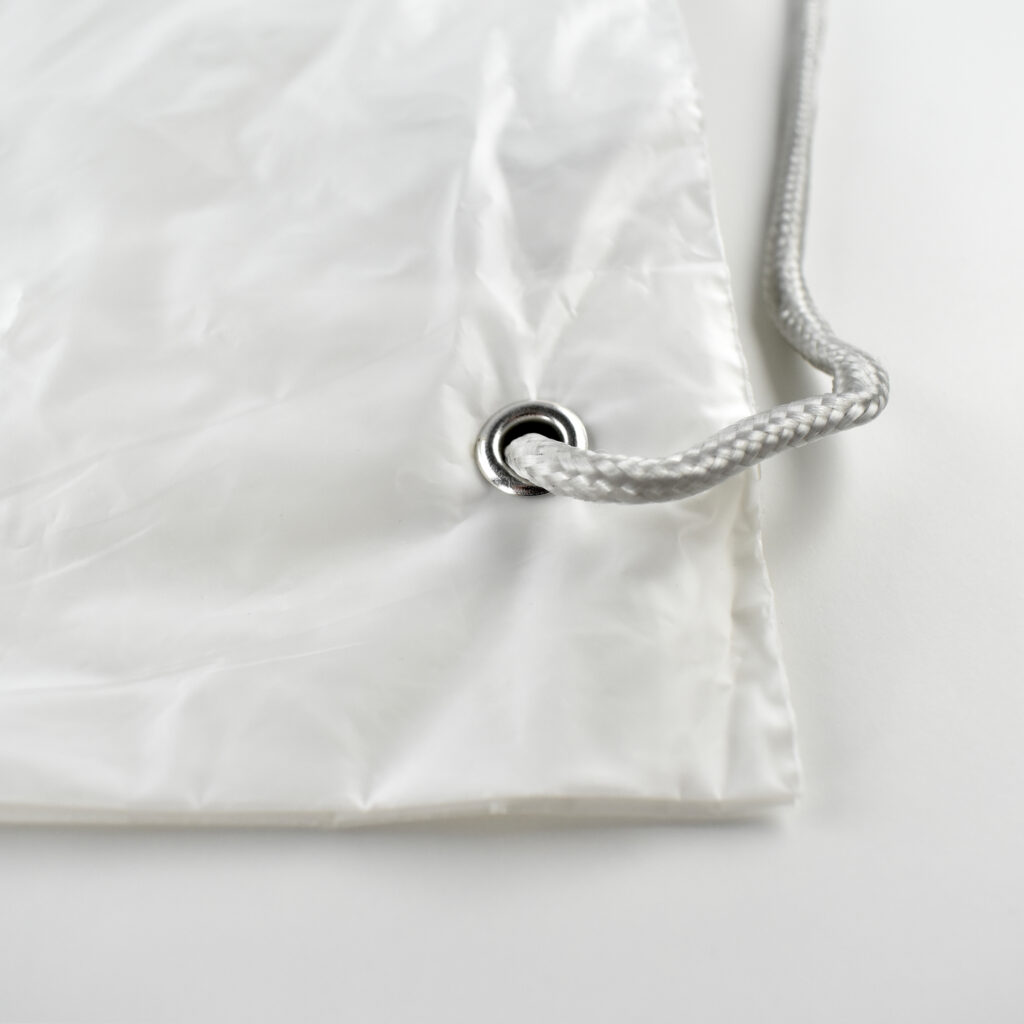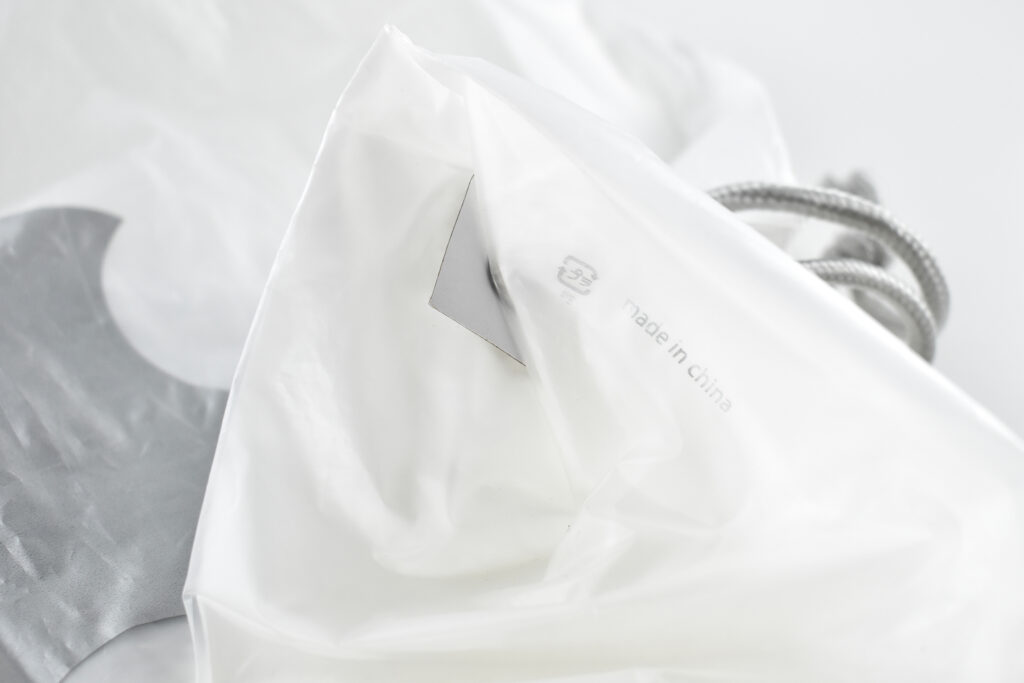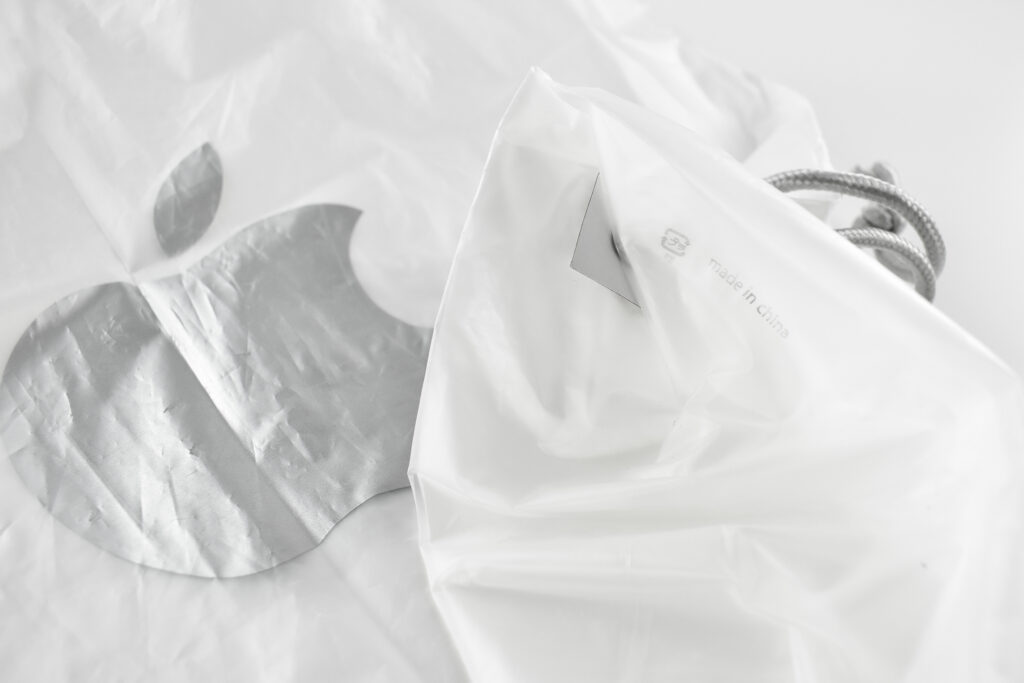This notepad measures 5 x 7 inches and features the Apple Distinguished Educator (ADE) logo at the top center. I received this notepad while attending an ADE event.
Think different. magazine ads directors collection (2000)
“Think different” was the slogan used by Apple in advertising 1997–2002, and is still used in some circumstances as of 2021. The “Think different” concept was created by advertising agency TBWA\Chiat\Day while working with Apple and Steve Jobs. “Think different” was used in its original concept in a TV commercial and in print/digital advertisements, and the “Think different” slogan was used as part of many TV commercials, print/digital ads, and on product packaging. This advertising campaign was notable in that its original concept did not feature Apple products, just iconic cultural figures that Apple selected to represent their ideals.
Several series of Think different ads were released. The final set of five film directors was never released to the public in poster format, but was run as magazine ads in 2000. This series featured John Huston, Orson Welles, Charlie Chaplin, Francis Ford Coppola, and Frank Capra.
I was able to collect four of five of these magazine ads (I do not have Frank Capra). Each of these ads has been laminated and measures approximately 8 x 10.5 inches.
Source: Wikipedia
1998: The Year of Thinking Different. book (1998)
With a foreword by Steve Jobs, the book “1998: The Year of Thinking Different.” features the Think different manifesto and two-page layouts of many of the Apple Geniuses (cultural icons) featured in the Think different series.
The book begins with the full Think different “manifesto” in a 2-page layout:
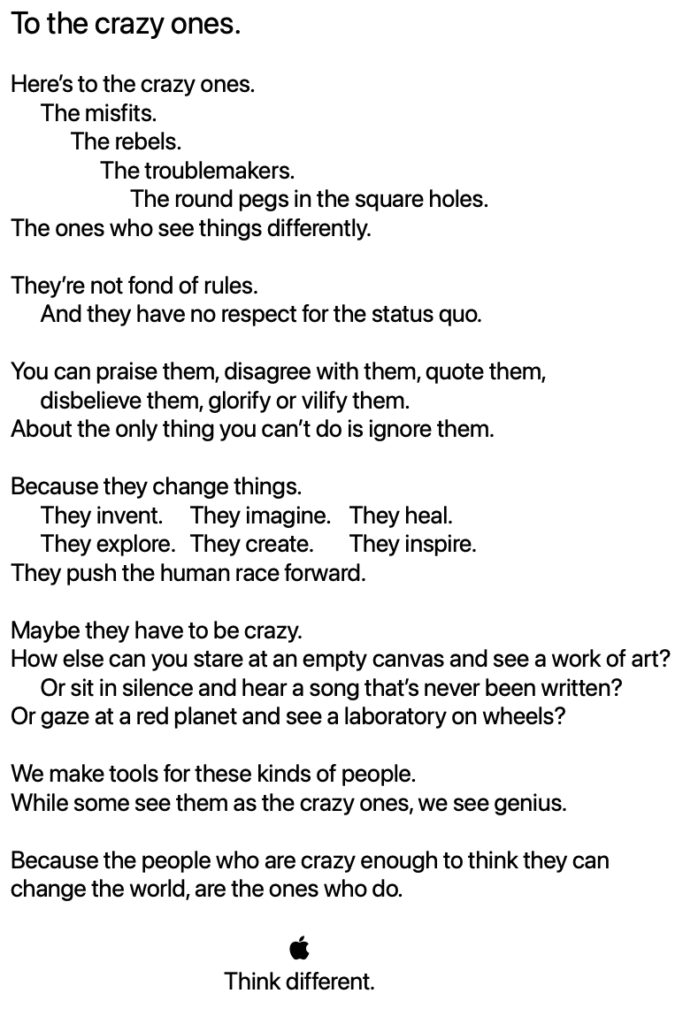
The book includes the following Apple Geniuses:
Albert Einstein
Mahatma Gandhi
Pablo Picasso
Alfred Hitchcock
Rosa Parks
Bob Dylan
Buzz Aldrin
Muhammad Ali
Thomas Edison
Martha Graham
Jim Henson
Maria Callas
Dalai Lama
Amelia Earhart
Ansel Adams
Joan Baez
Paul Rand
Miles Davis
Lucille Ball & Desi Arnaz
John Lennon & Yoko Ono
The final page of the book states, “This is a limited-edition publication to commemorate the first year of the ‘Think different’ series. It is not for sale or resale, and is only available to employees/affiliates of Apple Computer, Inc.”
The book is paperback, measures 11 x 14 inches, and is printed in black and white.
Source: Apple (this book)
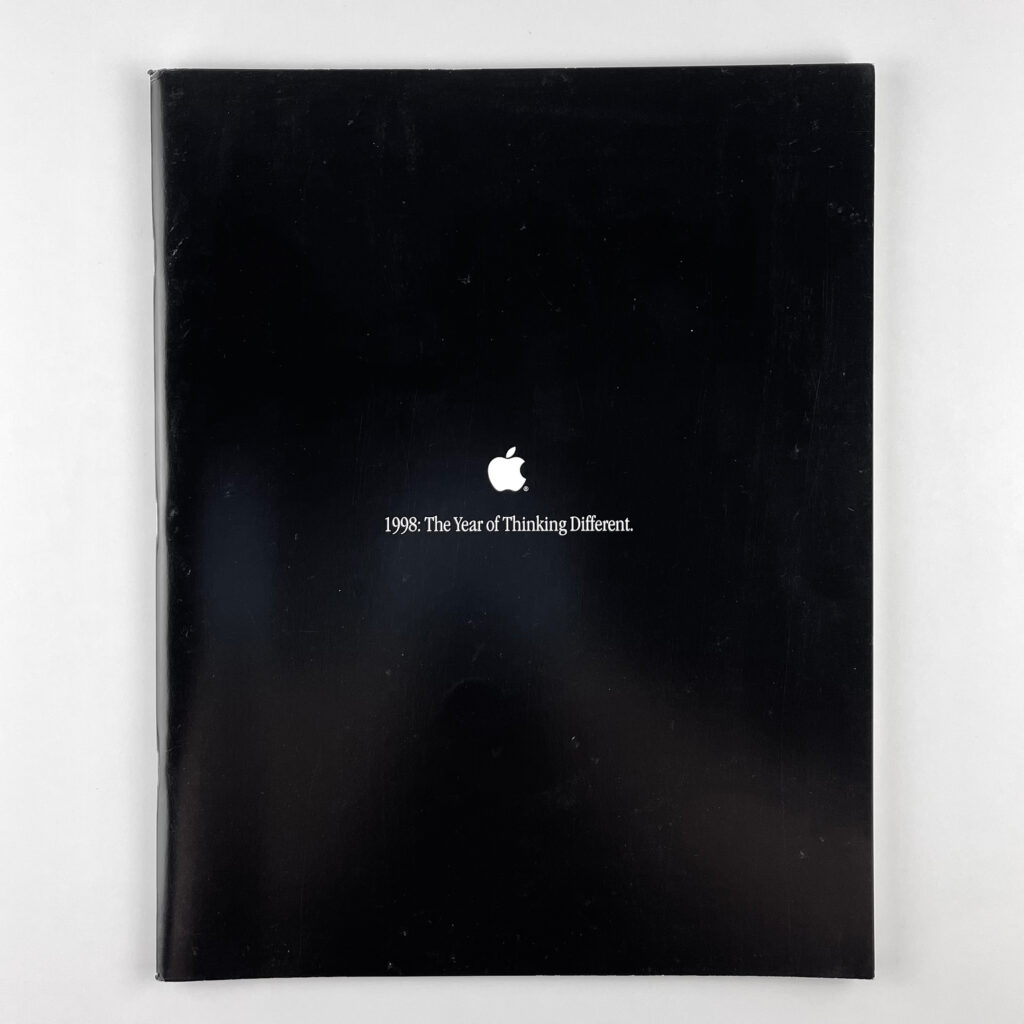
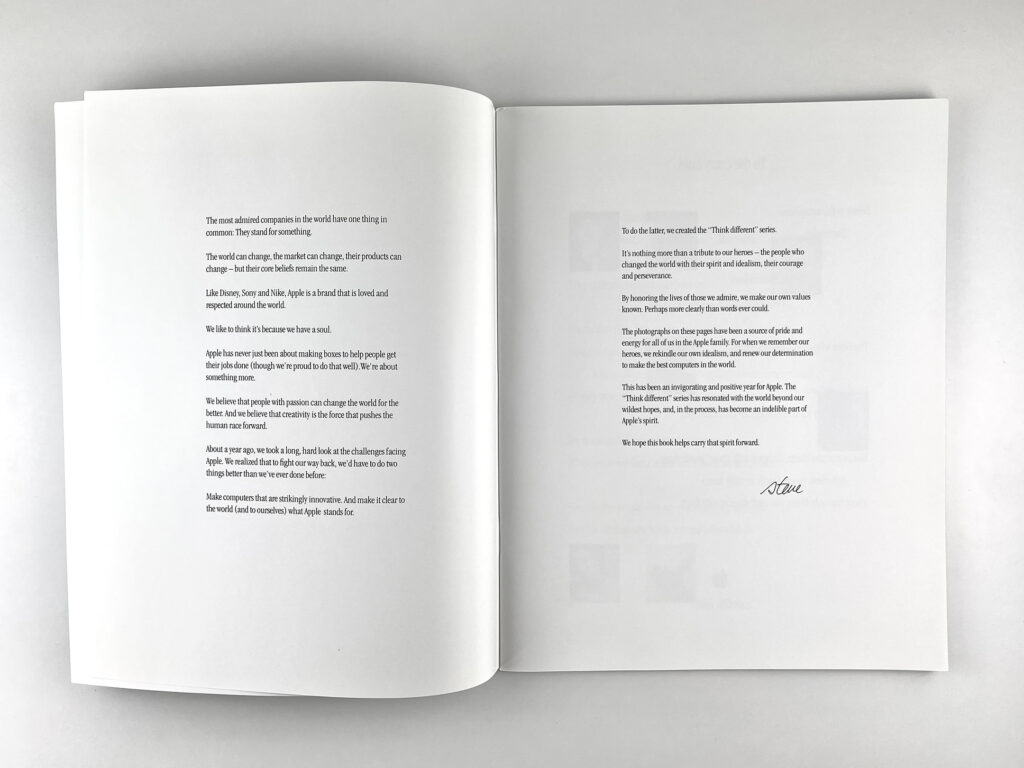
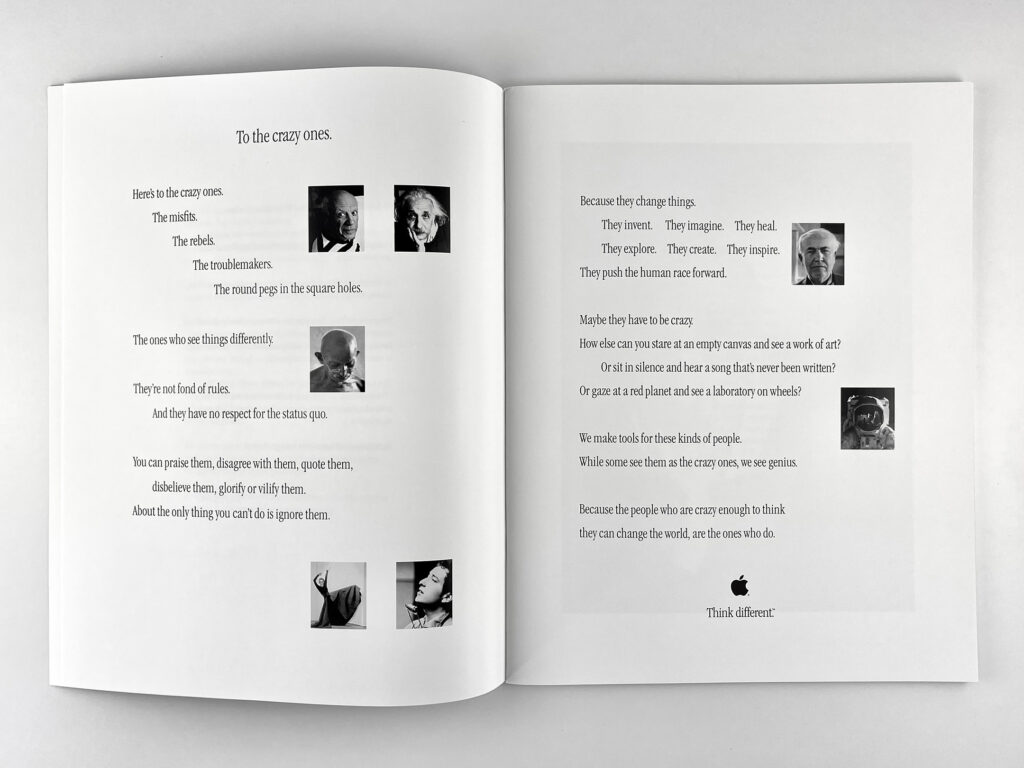
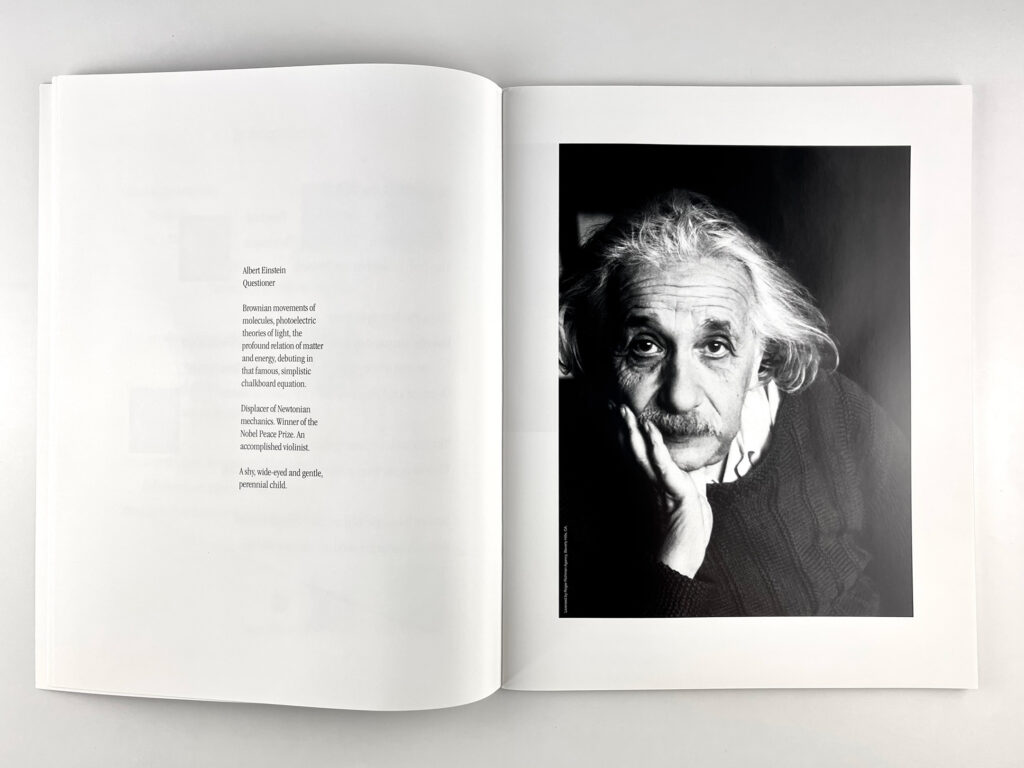
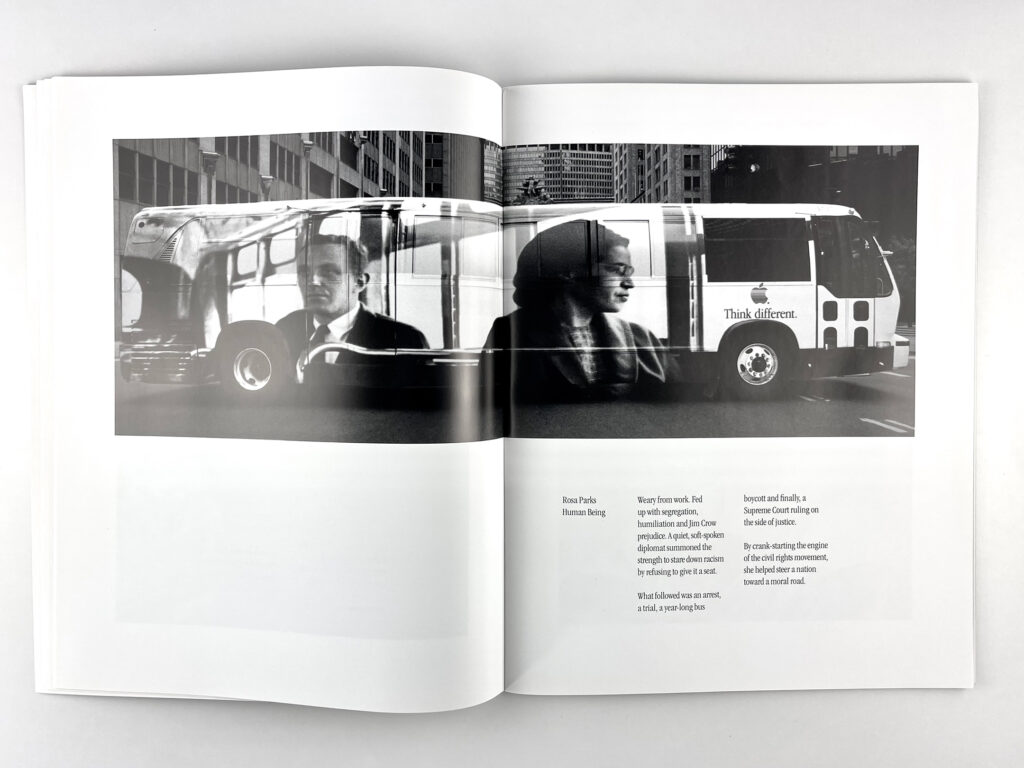
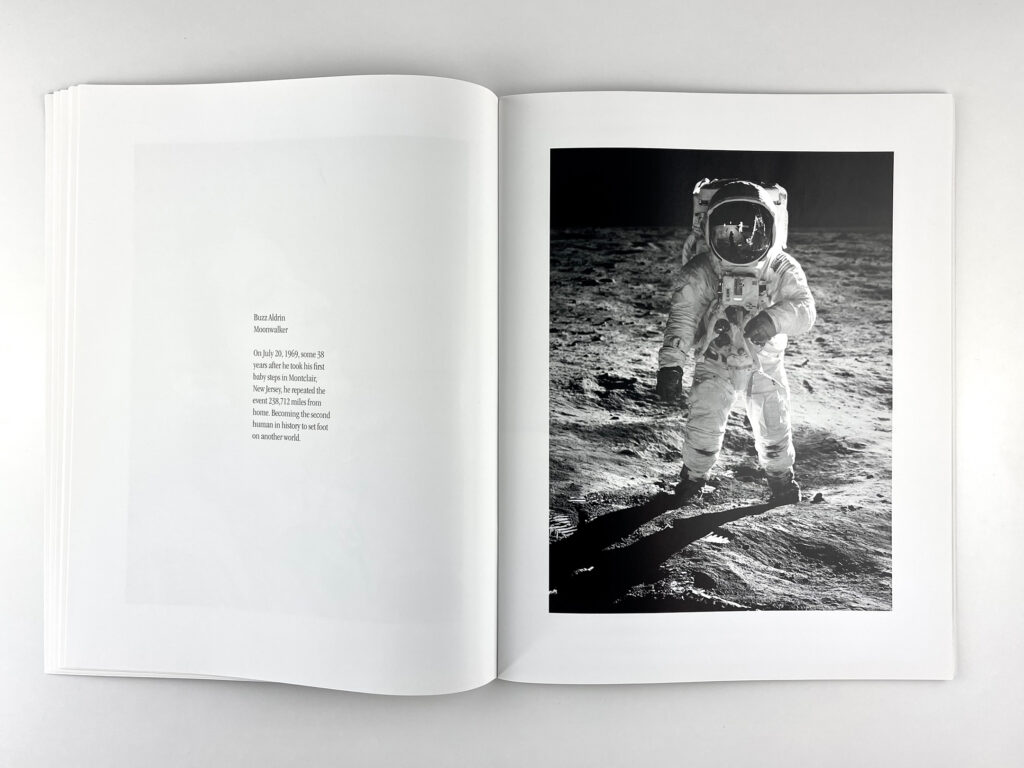
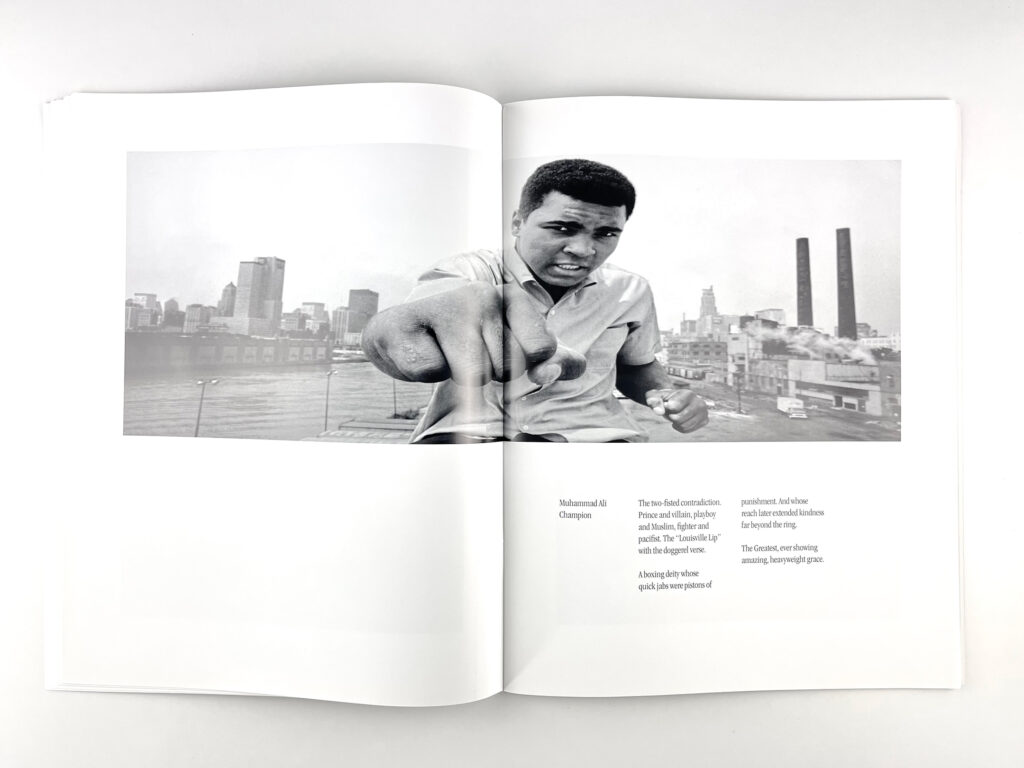
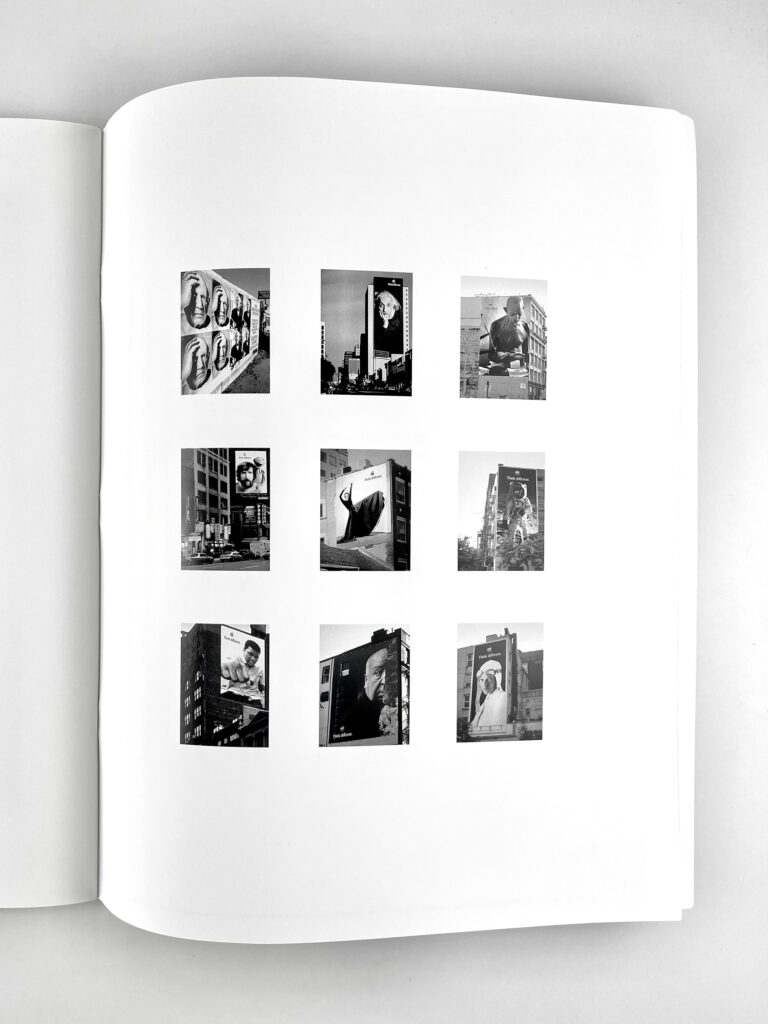
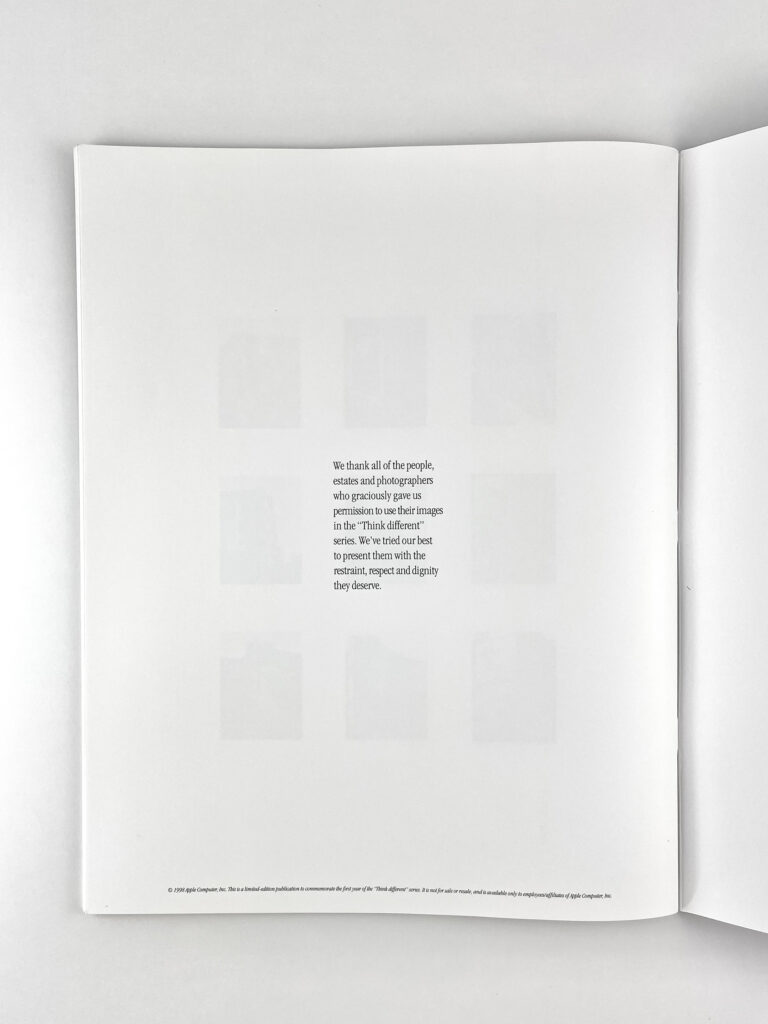
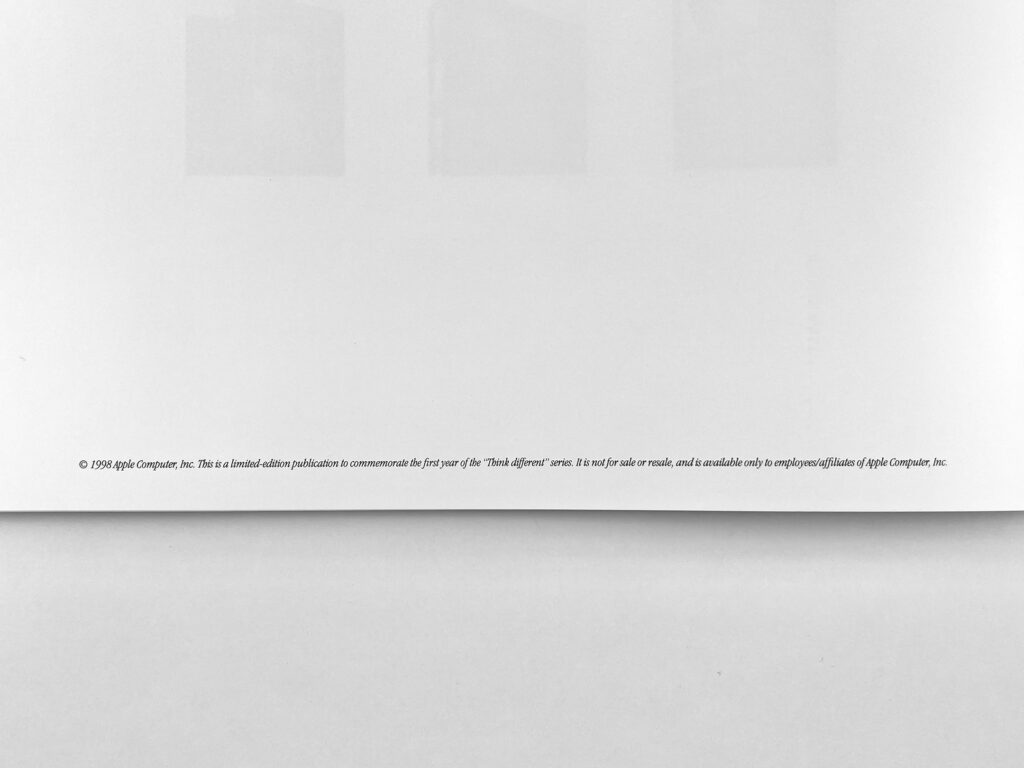
(Hint: It’s a computer.) magazine insert (2000)
In the late 1990s and early 2000s, part of Apple’s print advertising included magazine inserts. Some inserts were “mini-magazines” within magazines and others, like this example, was a fold-out poster. These inserts were glued with a pliable rubber cement that could be easily removed.
This example is an advertisement for the Power Mac G4 Cube. As the ad unfolds (literally), the cover shows a photo of the G4 Cube with the caption “(Hint: It’s a computer.).” The first unfold (2-up) reveals, “Actually, it’s a supercomputer” with five short paragraphs touting the Cube’s size and power. The second unfold (4-up) has the headline “So much technology. So little space.” and shows connections, features, and peripherals available for use with the Cube. Fully unfolded (8-up), a poster is revealed that declares, “Presenting the Power Mac G4 Cube. Actual size. Think different.” The back of the fully folded insert is another view of the G4 Cube with three available displays and the headline “A marvel of engineering. And economics.”
Folded, the size of the insert is 7.3125 x 10.125 inches. Fully unfolded (into 8 panels) the size is 29.25 x 20.25 inches.
I also have a poster version (rolled in a tube) of the fully unfolded image used in this ad (at 24 x 36 inches).
The Apple Store Holiday 2004 catalog (2004)
I remember picking up this catalog at an Apple Store in 2004. It is large for a catalog at 11 x 17 inches and is printed on heavy matte paper. Each spread features “lifestyle” photos of people using then-current Apple products in everyday settings. Each product is then described in detail including features, uses, and available peripherals. Full-page “case studies” from regular people using the products in real life are also included.
The first product featured is iPod. The 2004 models included iPod with scroll wheel (with a monochrome display), iPod Photo (color display), and iPod mini (monochrome display and available in four colors).
The next spread highlights the iMac G5. These were Apple’s second flat-panel iMac models that were available with 17 or 20-inch “widescreen flat panel” displays. The iLife apps are mentioned here in holiday contexts.
Apple “notebooks” are shown next, including the white 12 and 14-inch iBook models and the 12, 15, and 17-inch PowerBook G4 models. The AirPort Express is mentioned as a solution for streaming music and wireless printing in the home.
The last 2-page spread includes “A day in the life of a Genius,” and highlights in-store workshops and presentations.
The back page shows a map of the United States and the locations of all Apple Stores worldwide. Six happy Apple customers are also featured with their Apple Store purchases across the US.
Think different. educator poster set (11 x 17 inches, 2000)
“Think different” was the slogan used by Apple in advertising 1997–2002, and is still used in some circumstances as of 2021. The “Think different” concept was created by advertising agency TBWA\Chiat\Day while working with Apple and Steve Jobs. “Think different” was used in its original concept in a TV commercial and in print/digital advertisements, and the “Think different” slogan was used as part of many TV commercials, print/digital ads, and on product packaging.
This advertising campaign was notable in that its original concept did not feature any Apple products. The original version began with a “manifesto” that began famously with “Here’s to the crazy ones.”
During the commercial, voiced by Richard Dreyfuss, black-and-white footage of iconic personalities (Apple referred to them later as “Apple Geniuses”) served as visuals to accompany the voiceover of the manifesto. Personalities included Albert Einstein, Bob Dylan, Martin Luther King Jr., Thomas Edison, Muhammad Ali, Ted Turner, Mahatma Gandhi, Amelia Earhart, Alfred Hitchcock, Martha Graham, Jim Henson, Pablo Picasso, and others.
The print and digital ads also did not feature Apple devices, just the Apple logo and the words “Think different.” One of the creative team who worked on the campaign described the print concept: “The rainbow-colored logo served as stark contrast to the black and white photography, and, to me, it seemed to make the ‘Think Different’ statement all the more bold.”
In 2000 this Think different poster set was provided to school leaders. The posters were 11 x 17 inches and arrived in a white box printed with the “Here’s to the crazy ones” manifesto. Each box contained three packs of posters sealed in plastic of 10 posters each.
I have two of these education sets. The one pictured was shipped directly to a high school principal. One set has been removed from its shrink wrap, and two sets are still unopened. I have a second compete set still in shrink wrap and has no shipping label.
The set also includes three 8.5 x 11 sheets inside. One is a letter from Apple, and the other two sheets include a “key” naming each Think different portrait with an adjective and mini-biography of each person’s life. The set contains the following “Apple Geniuses:”
Albert Einstein: “Questioner”
Cesar Chavez: “Laborer”
Jane Goodall: “Observer”
Pablo Picasso: “Creator”
Amelia Earhart: “Aviator”
Miles Davis: “Improviser”
Jim Henson: “Muppeteer”
John Lennon & Yoko Ono: “Dreamers”
Dr. James Watson: “Code cracker”
Mahatma Gandhi: “Leader”
Sources: Wikipedia, Forbes, Apple (documentation included in this set)
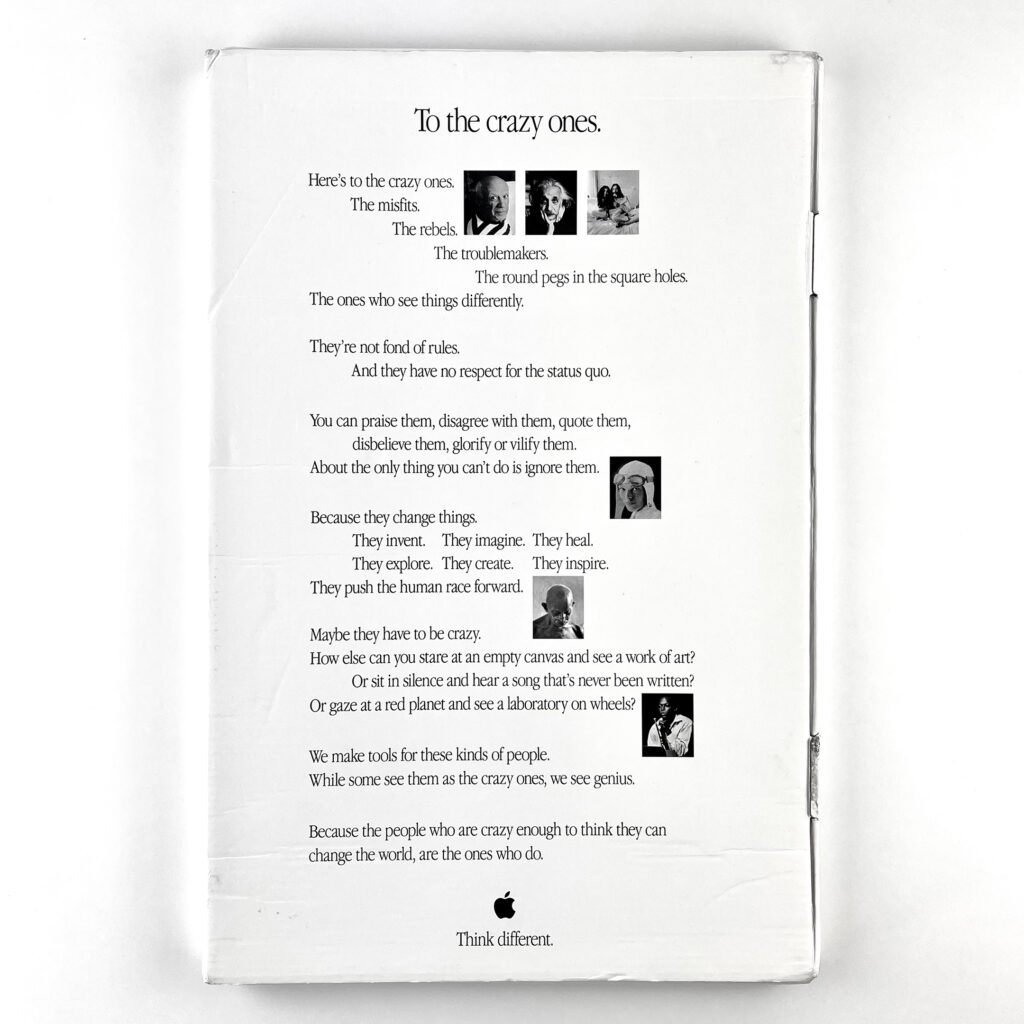
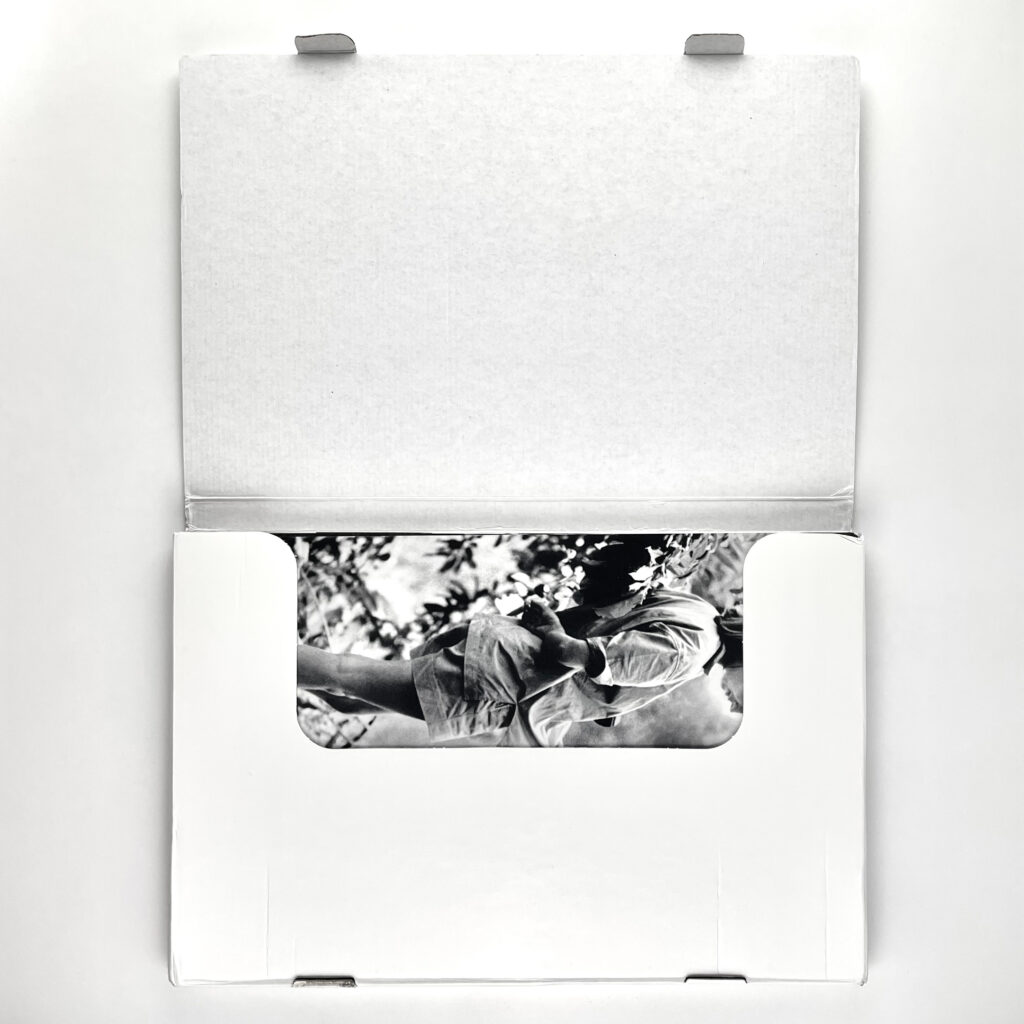
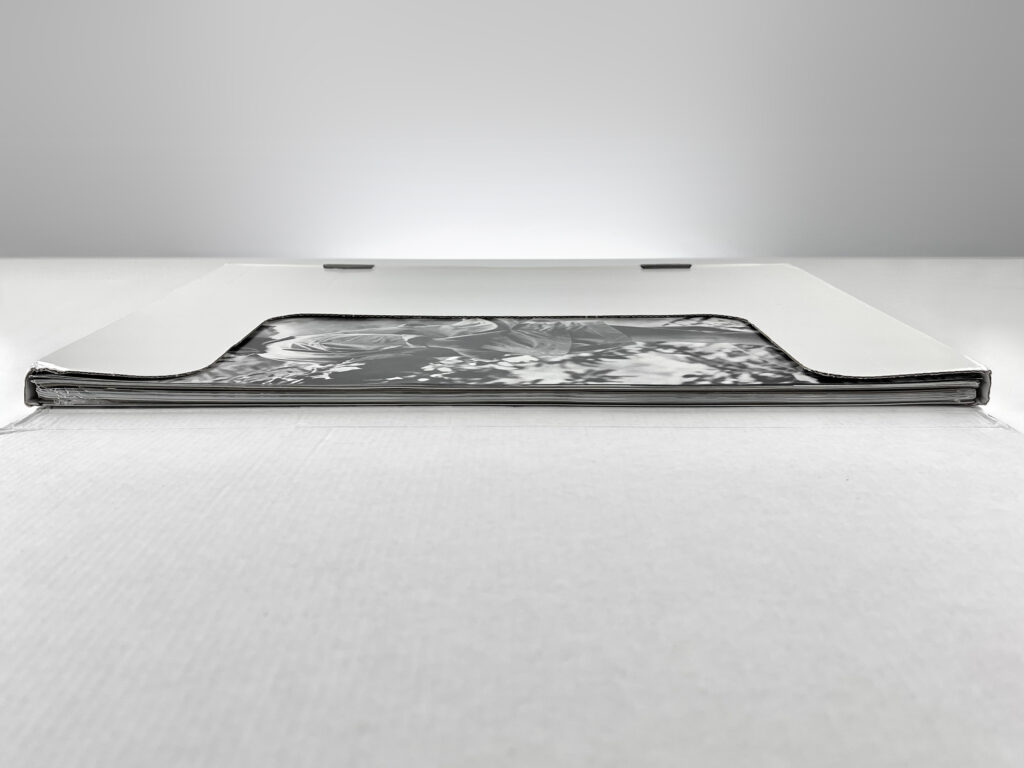
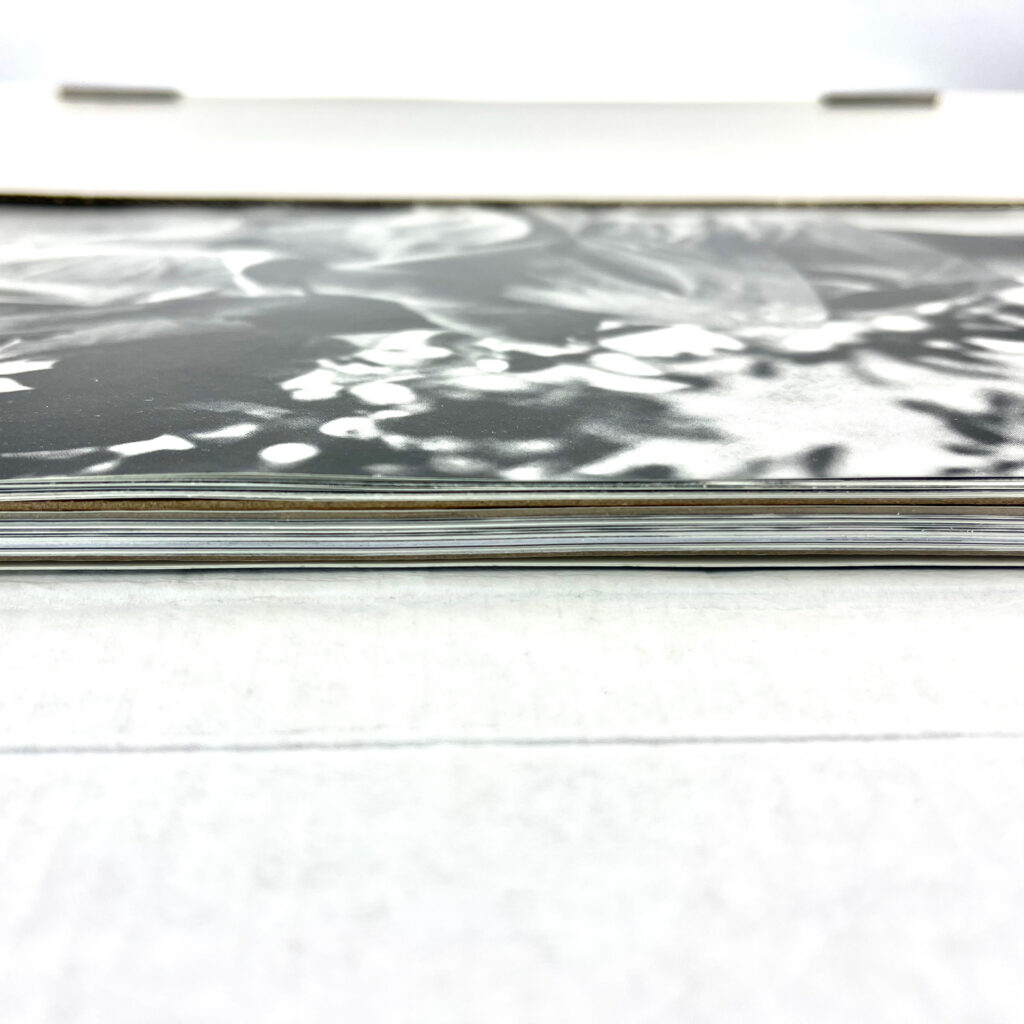
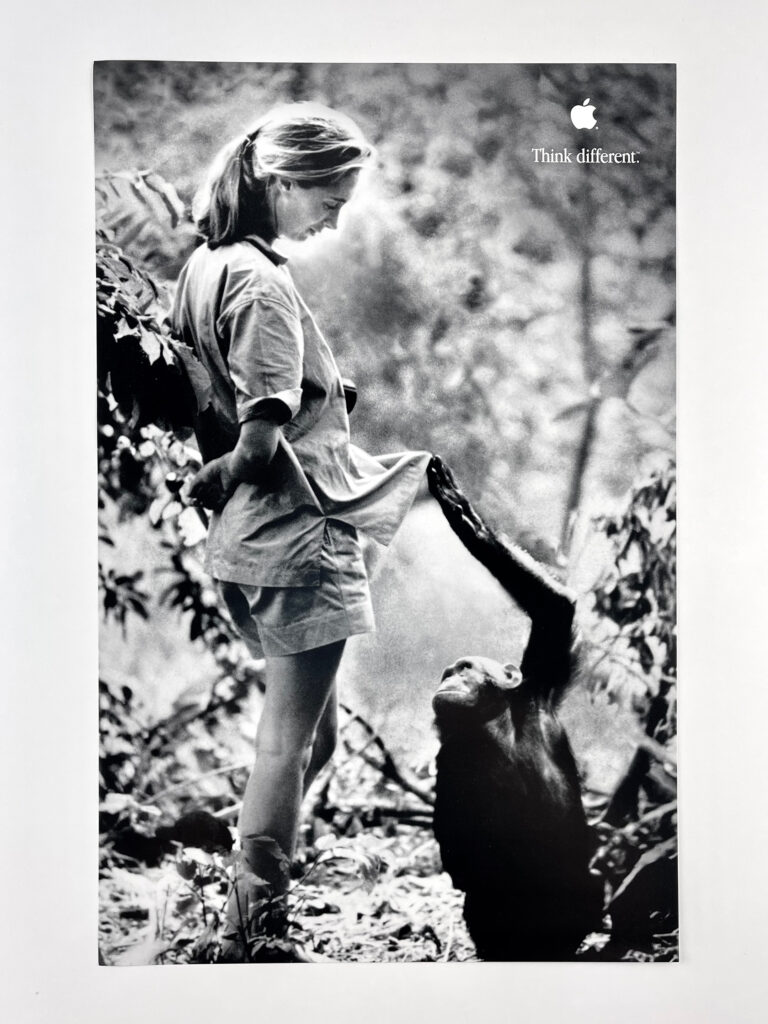
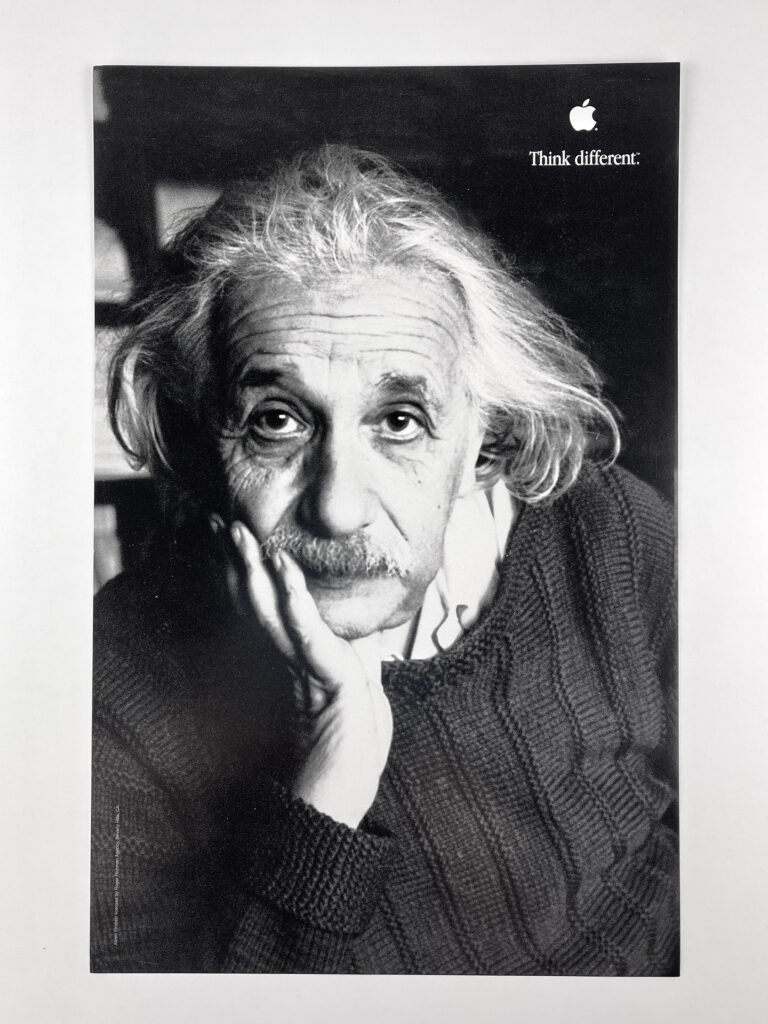
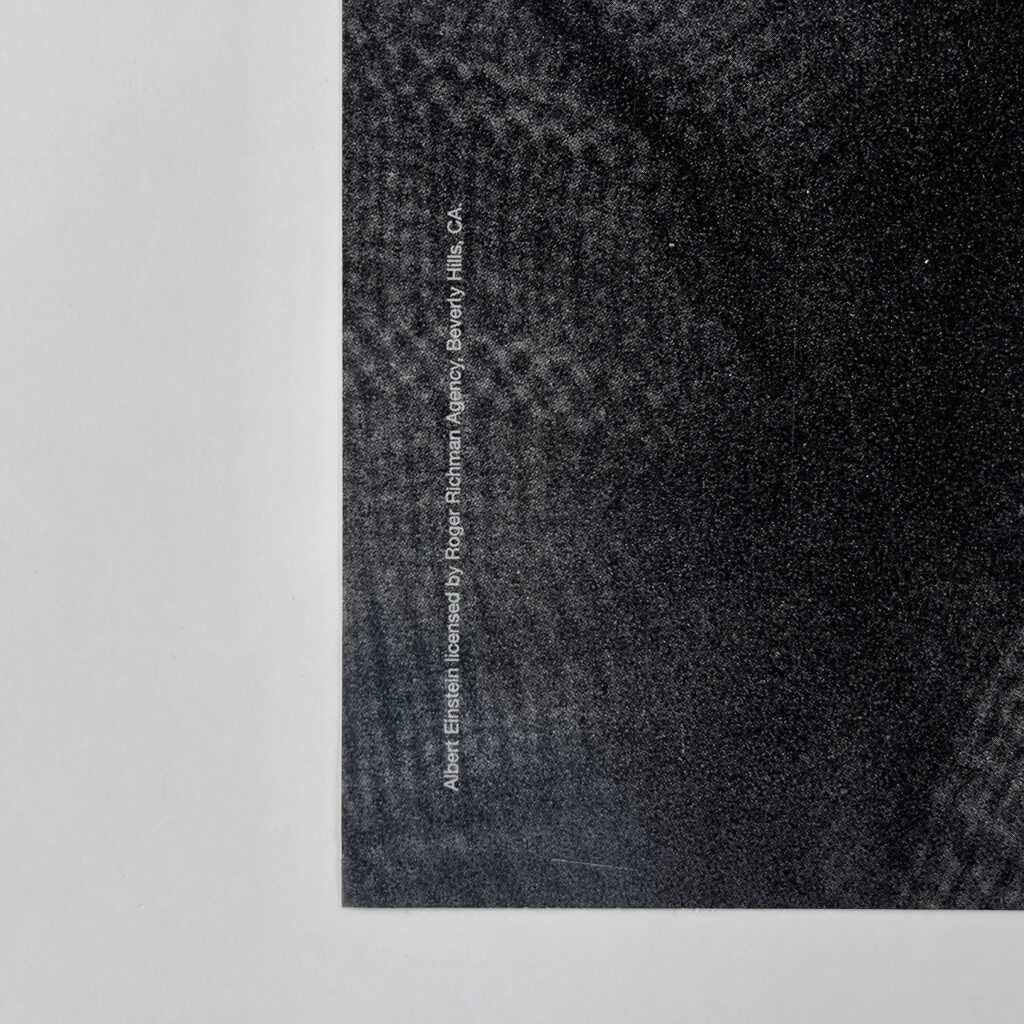
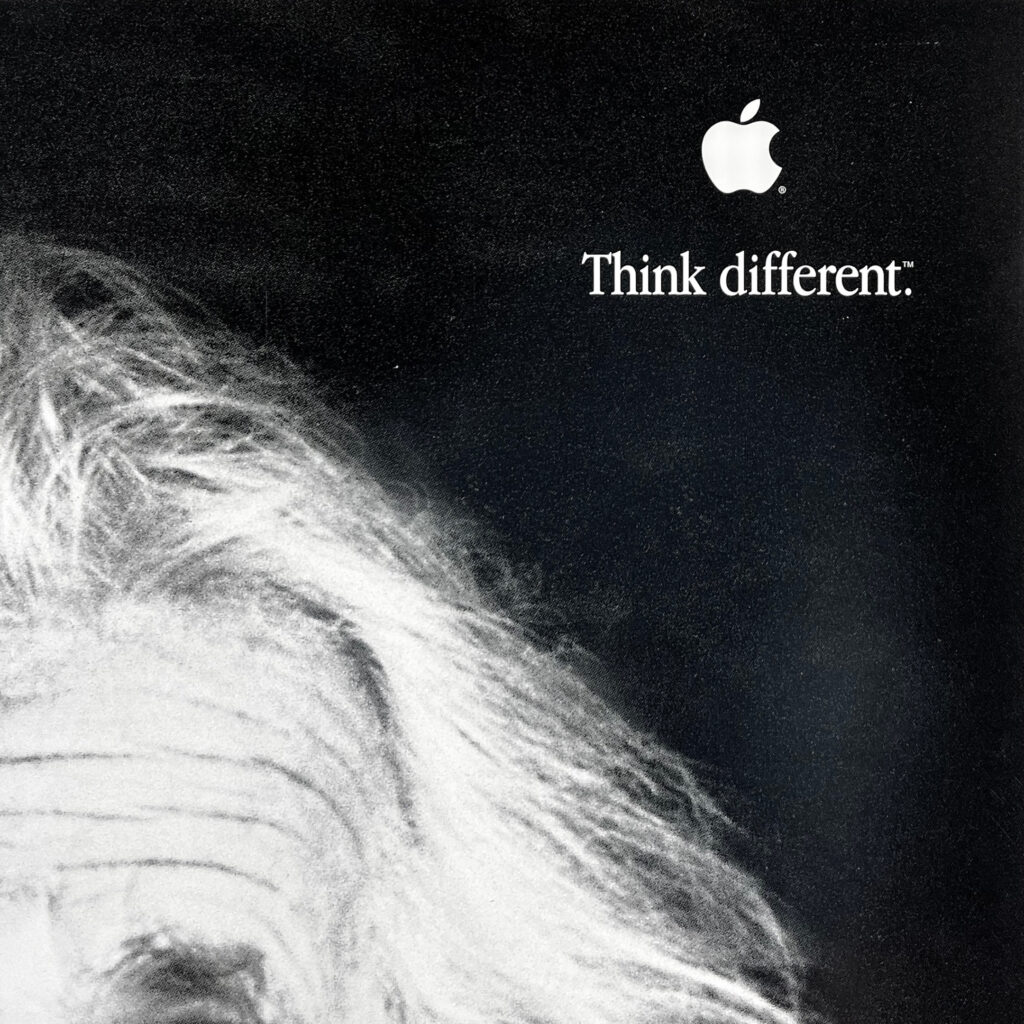
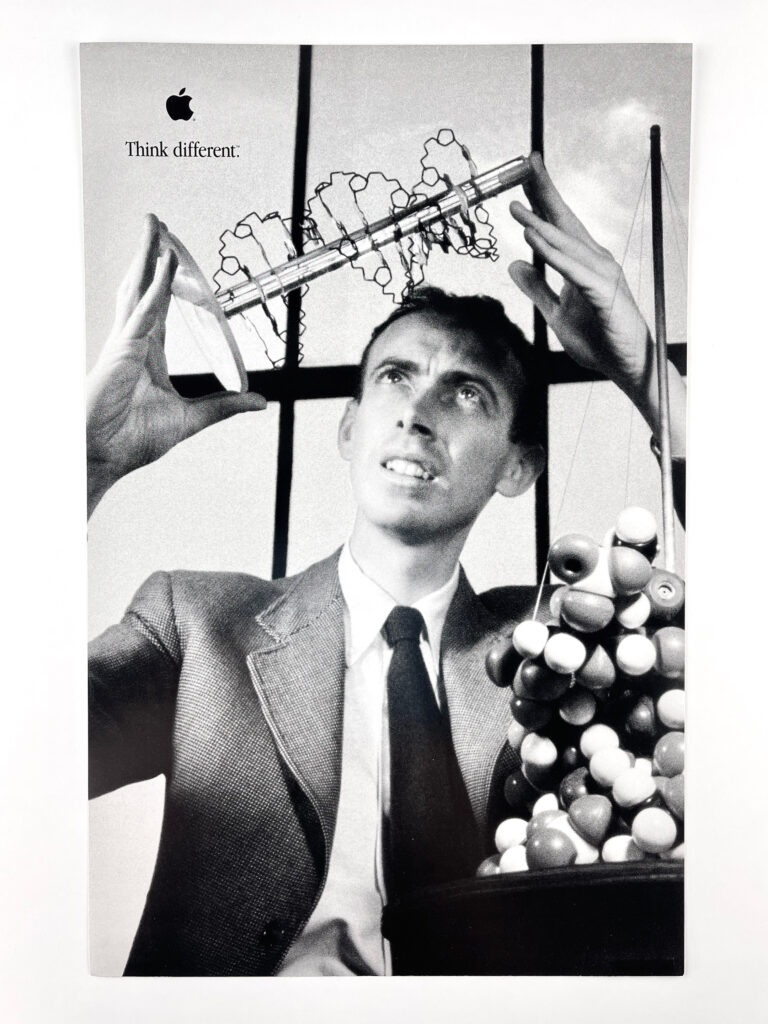
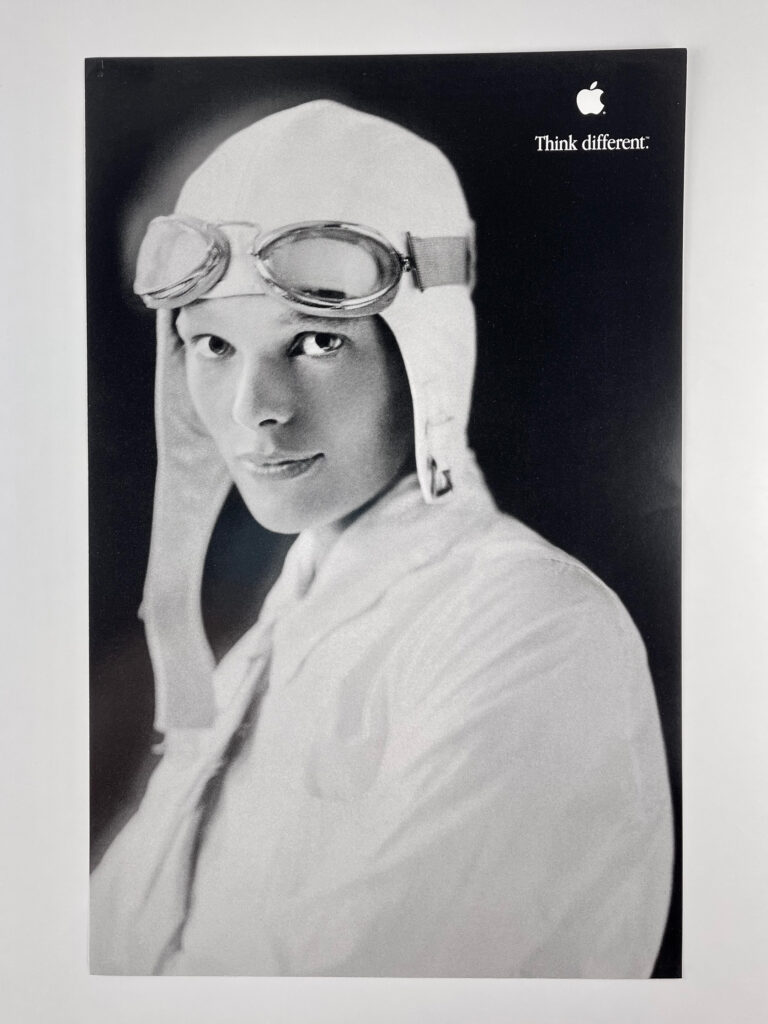

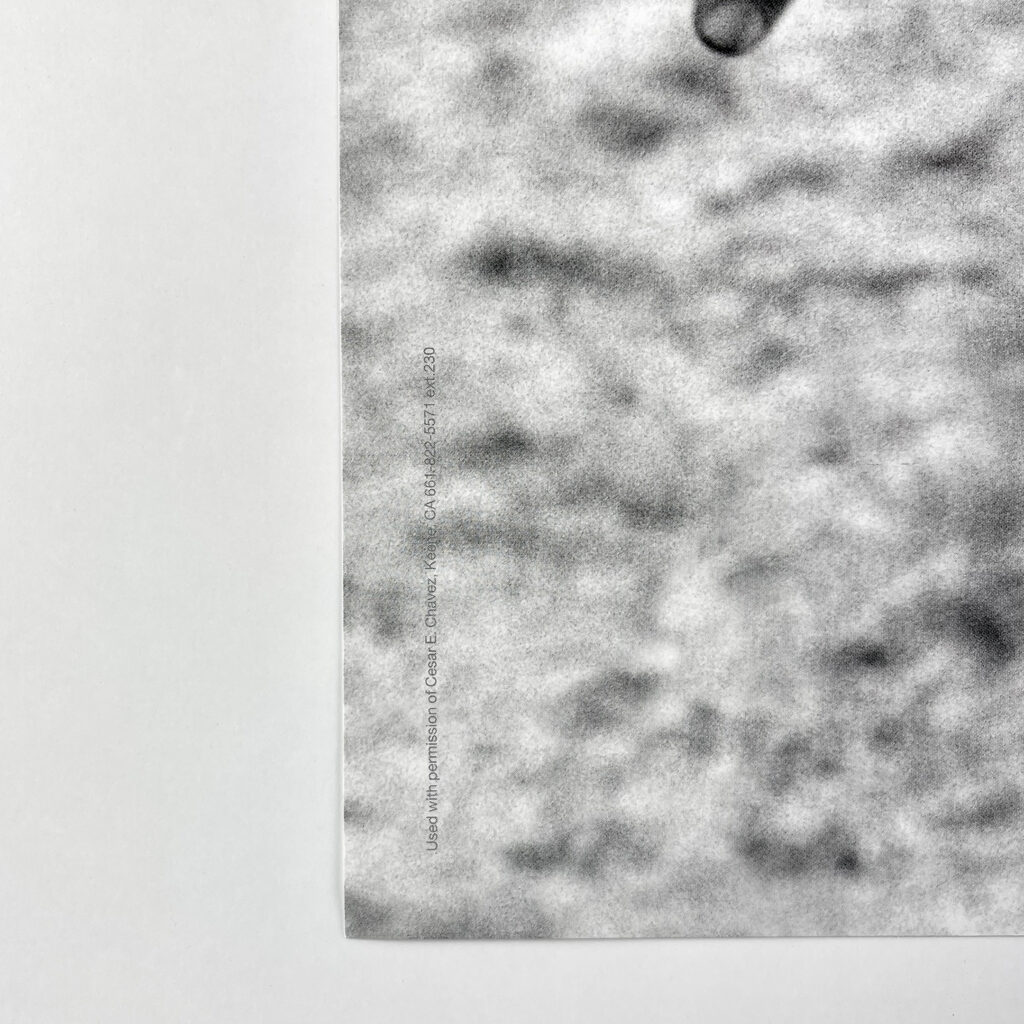
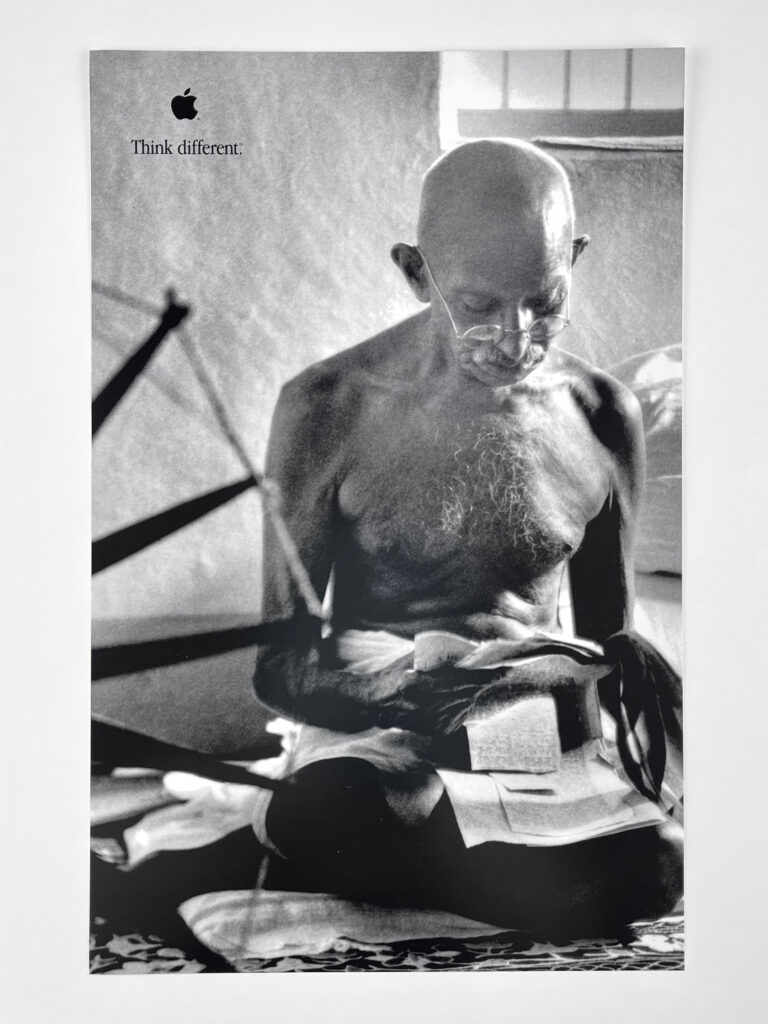
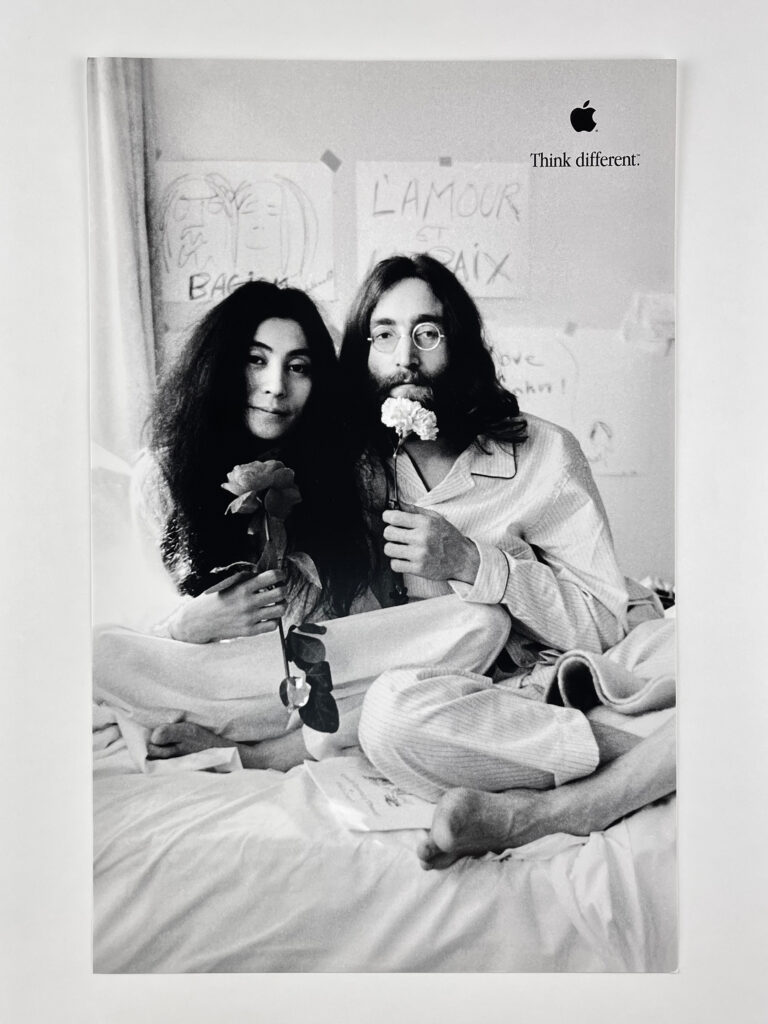

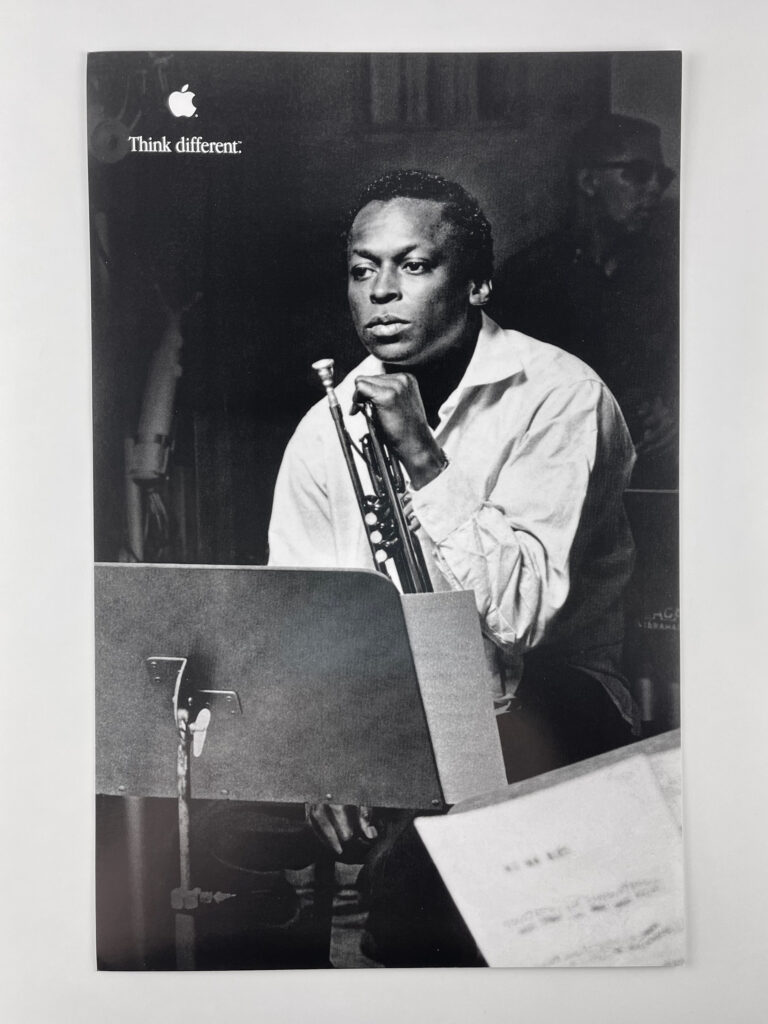
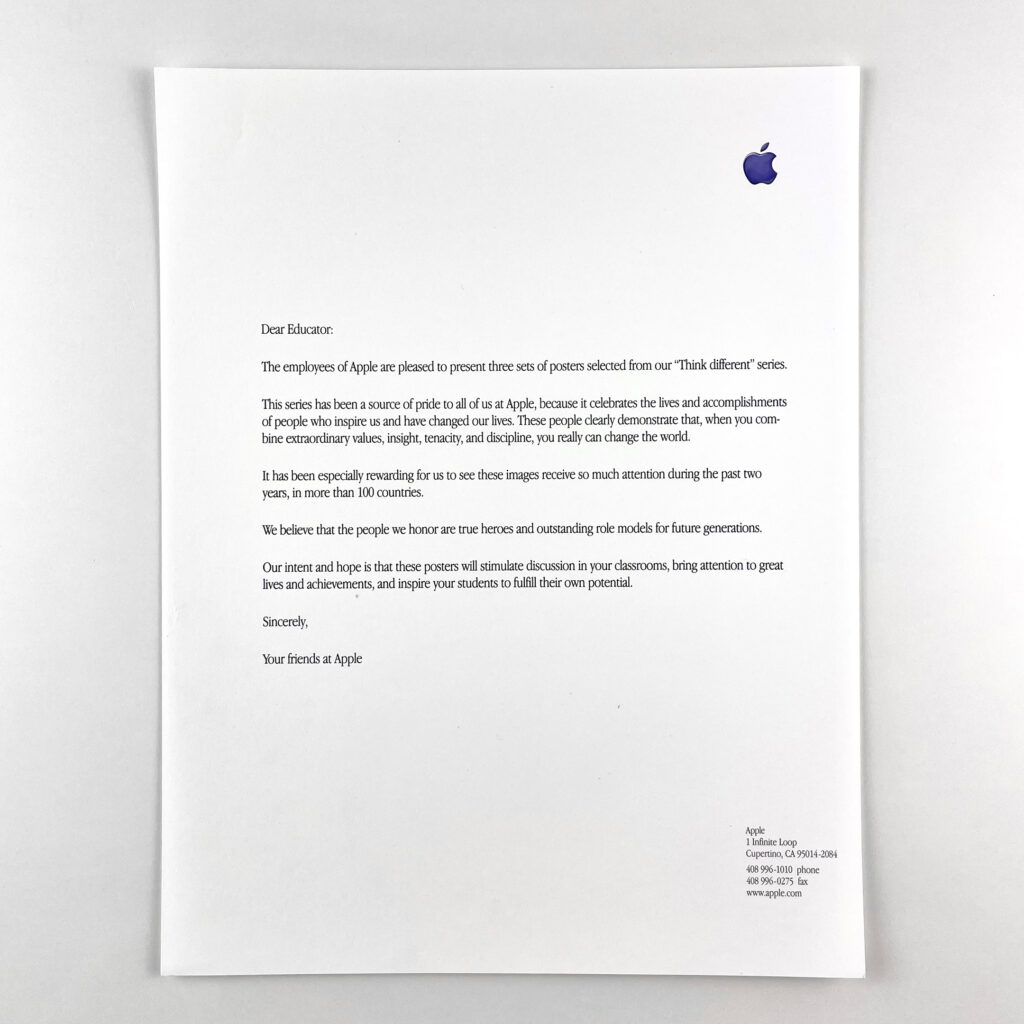
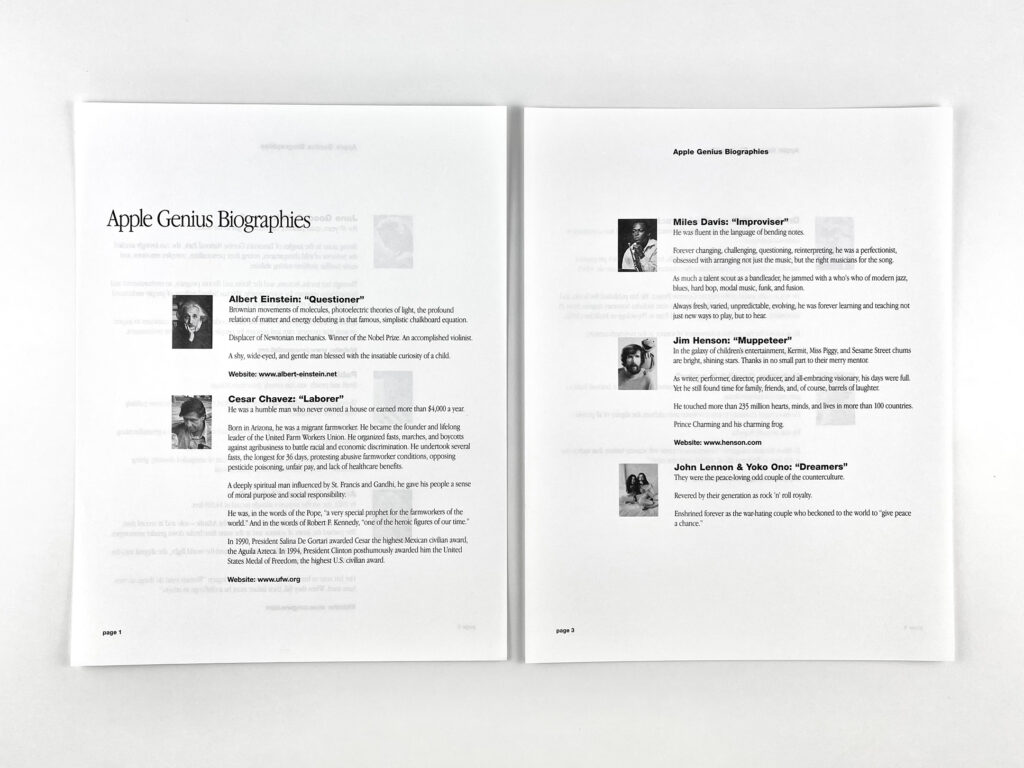
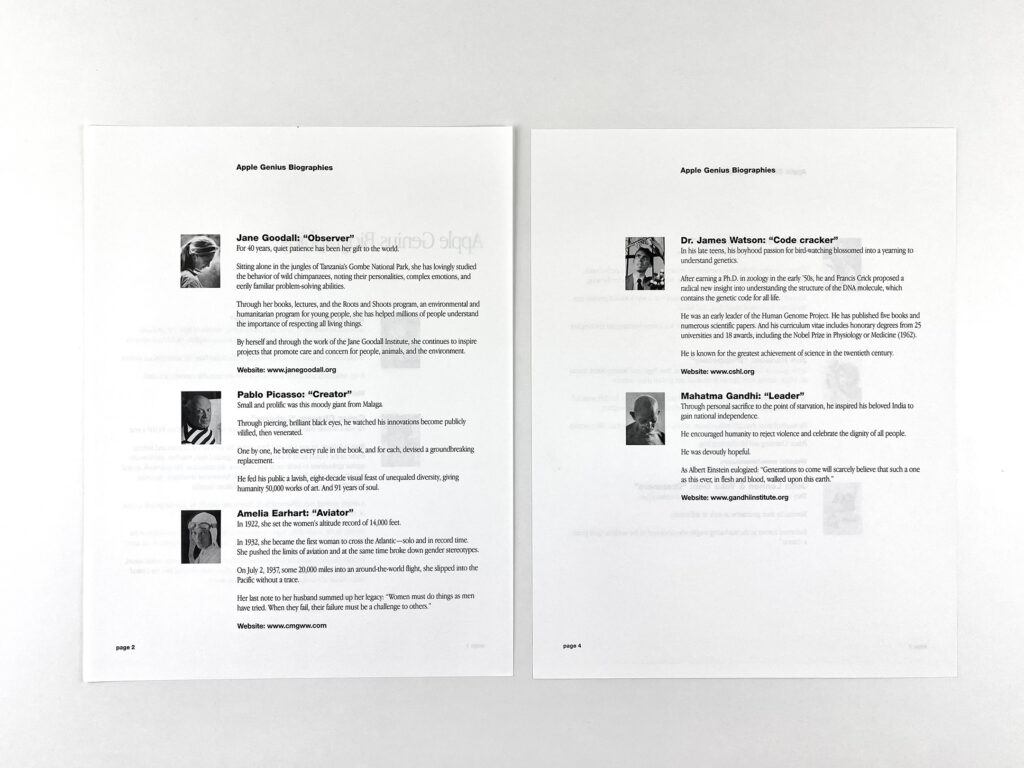
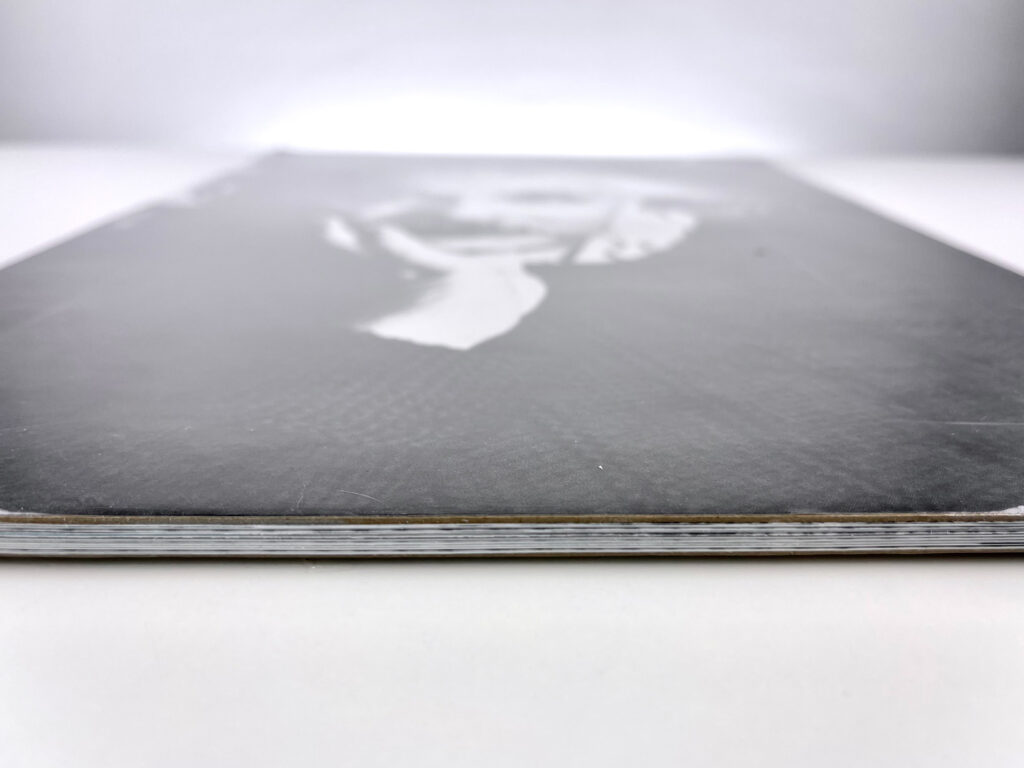
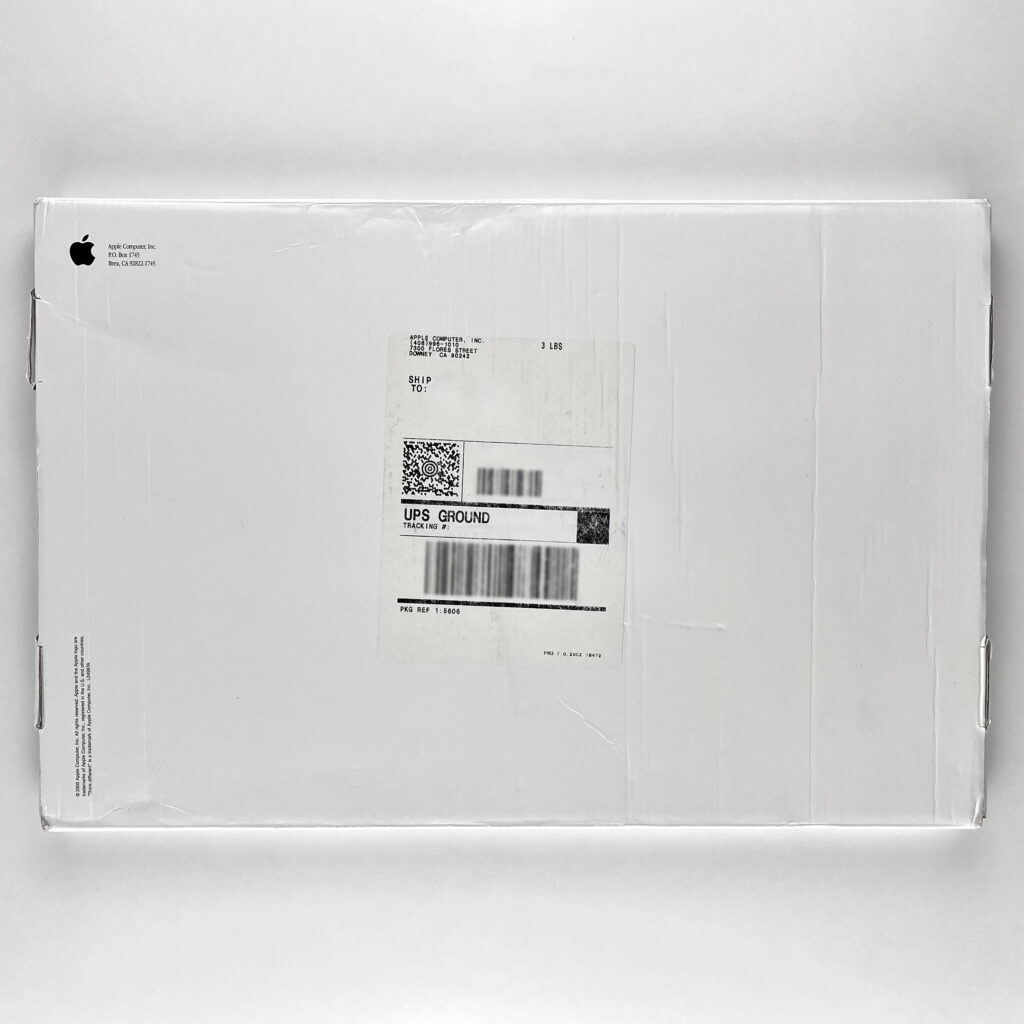
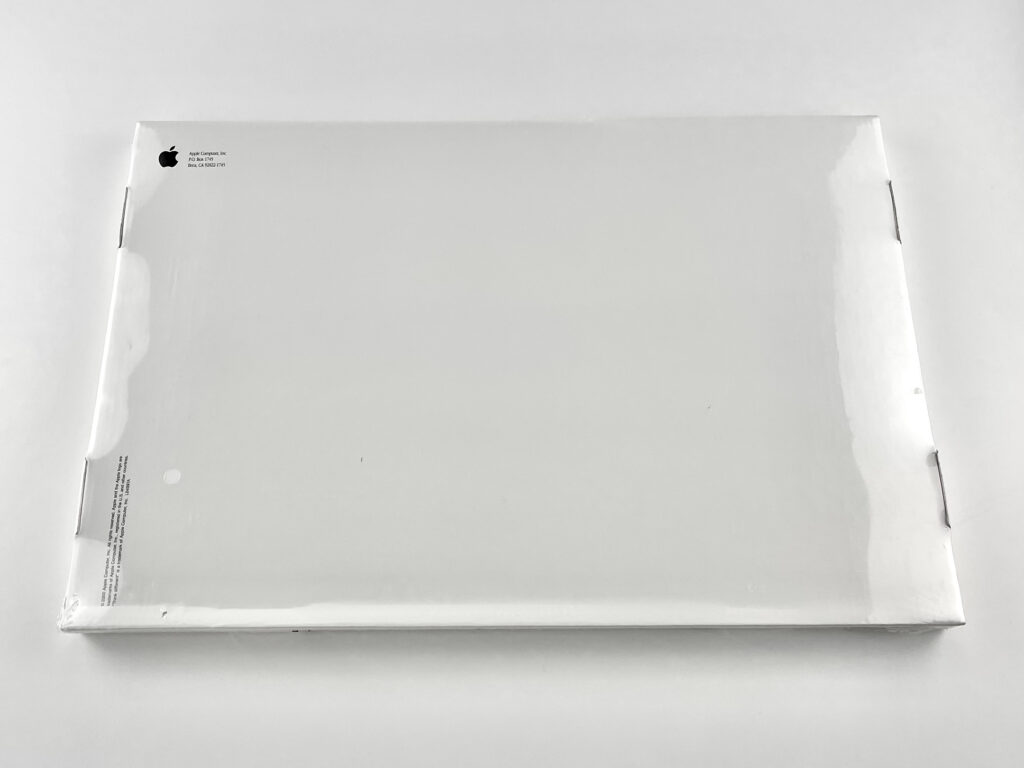
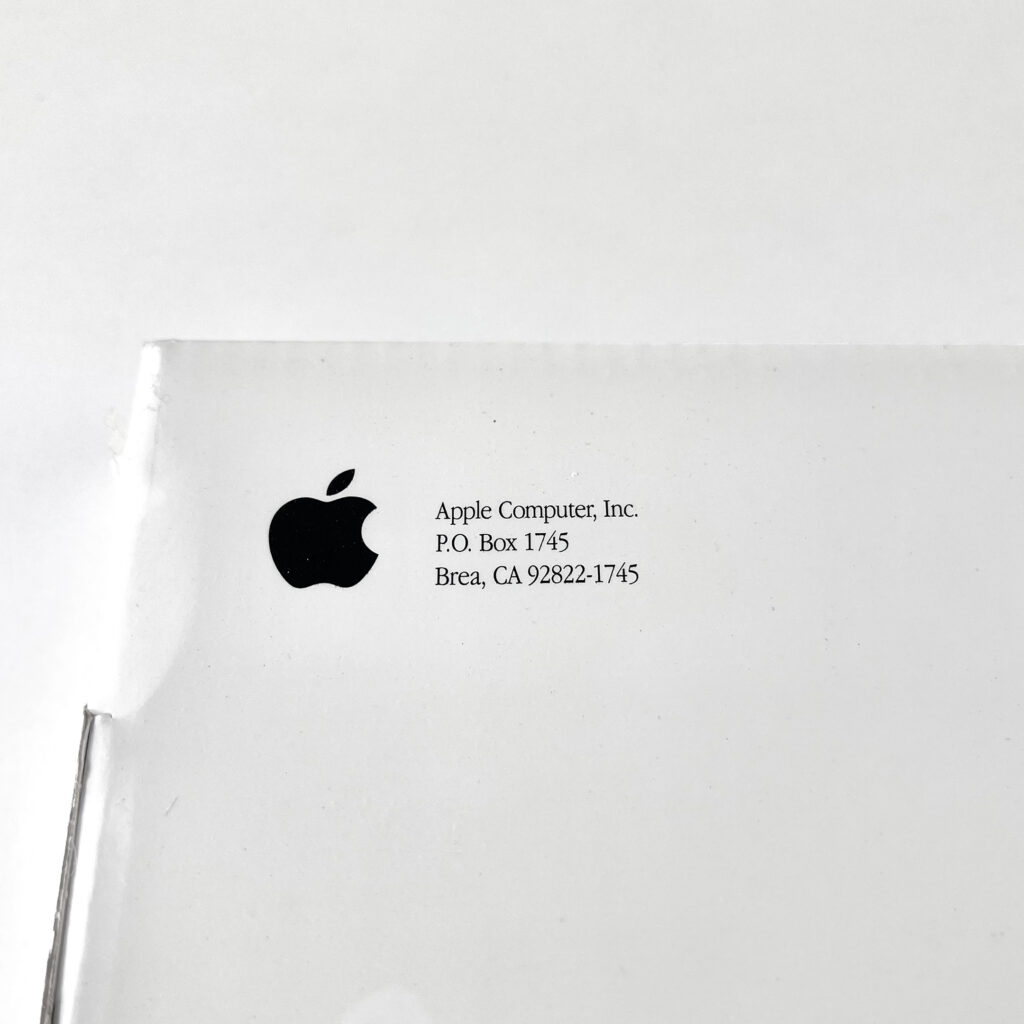
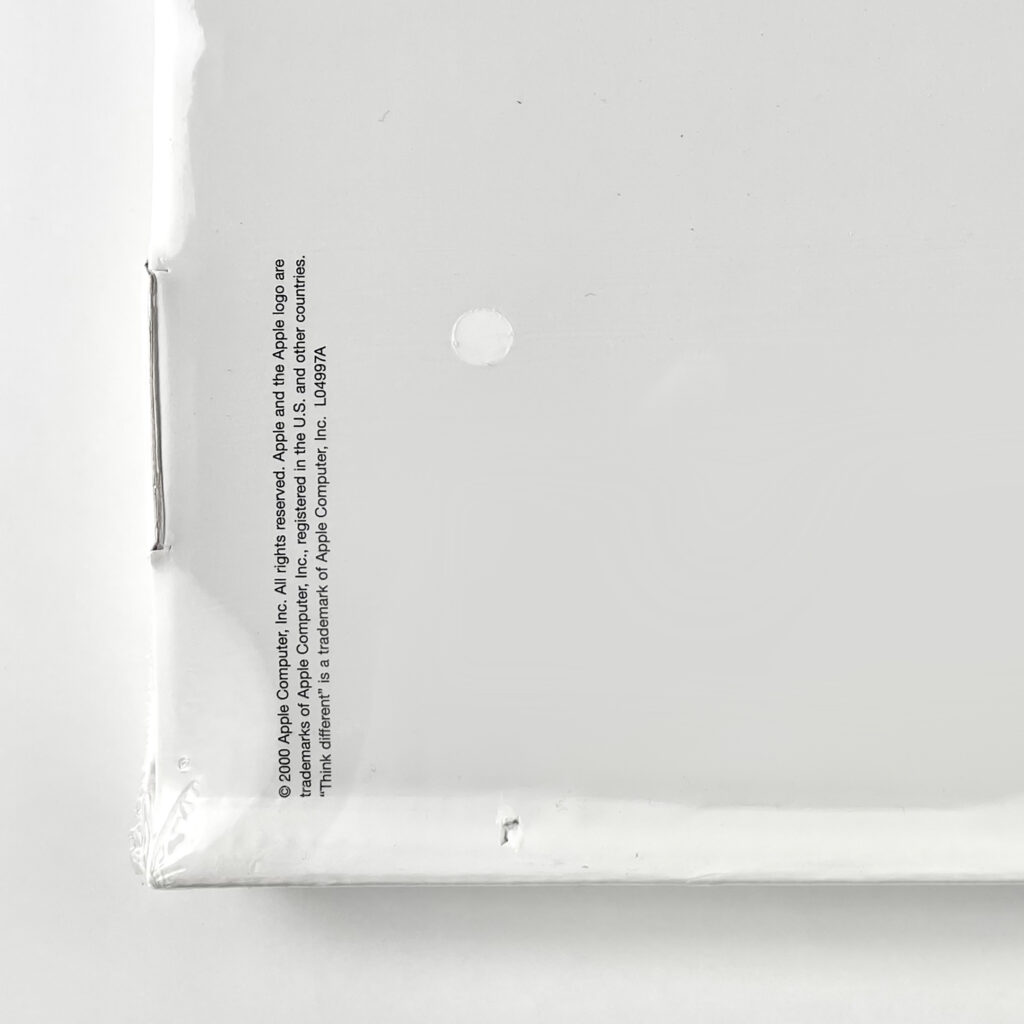
Yum. poster (iMac packaging version, 1999)
This poster was included in the package of all new iMac computers in 1999. After the success of the original iMac that was available in one color, Bondi blue (named for the color of the water at the beach in Australia of the same name), the second iteration of the iMac was available in five colors: blueberry, grape, tangerine, lime, and strawberry.
This poster shows all five iMac colors in a circle. The tagline is simply, “Yum.” to reference the fruit-inspired color names. (I use the term “fruit-inspired” because the shade of blue bears no resemblance to the color of a blueberry, and the dark-pink hue used matches no strawberry I’ve ever seen.) At bottom-center, the tagline “Think different.” is included along with the Apple logo.
This version of this poster is folded (to fit in the iMac box) and is 30 x 24 inches unfolded. I have another version of this poster that is rolled in a poster tube, and a rectangular button with the same design.
Shopping bag, white glossy paper, red logo (c. 2000)
This shopping bag is made of glossy white heavy paper and includes a white rope handle. It measures 15.25 inches tall x 16 inches wide x 5.5 inches deep.
Both sides of this bag feature a stylized Apple logo that appears glossy and translucent. This style was in use by Apple in the early 2000s and matched the design aesthetic of the iMac at the time.
My research has not yet uncovered where this bag originated. It does not appear to have been used at the Apple Store. It may have been provided at a technology conference.
Conference bag (NECC, 2001)
This high-quality conference bag was distributed at the National Educational Computing Conference (NECC) in Chicago that was held in June 2001. This organization and conference are still held annually, but the conference changed its name around 2010 to the International Society for Technology in Education (ISTE) Conference.
The bag is made from a thick, smooth, rubber-like material. One side features an embroidery “2001 CHICAGO NECC” logo, and the other side is emblazoned with a large white embroidery Apple logo. The inside includes a flap with a zippered pocket.
This NECC was significant because Steve Jobs was the keynote speaker, and Apple had a major presence on the conference floor. An Apple press release states:
“Apple today demonstrated its ongoing commitment to providing innovative technology solutions for education at the National Educational Computing Conference in Chicago. During the opening keynote, Steve Jobs, Apple’s CEO, announced that three more school districts…will be implementing the PowerSchool from Apple student information system.”
Apple highlighted several industry-leading educational technology products at NECC, including: the iBook and AirPort (“Wirelessly-networked notebook computers which give educators the flexibility to have computer-assisted learning anywhere”); “Tools from Apple, including iMovie and iDVD, enhance learning and make school more engaging and motivating for students;” and PowerSchool.
I attended NECC and received this bag during the conference.
Shopping bag, white plastic backpack, silver logo (medium, 2012)
Apple’s retail store bags have been used at Apple Stores beginning in 2001 when the first Apple Store opened. Please refer to 20 Years of Apple Store Bags (2001–2021) for more details.
This example is a white plastic drawstring backpack-style bag featuring a silver Apple logo. It measures 19.5 inches tall x 16.75 inches wide x 4.5 inches deep.
